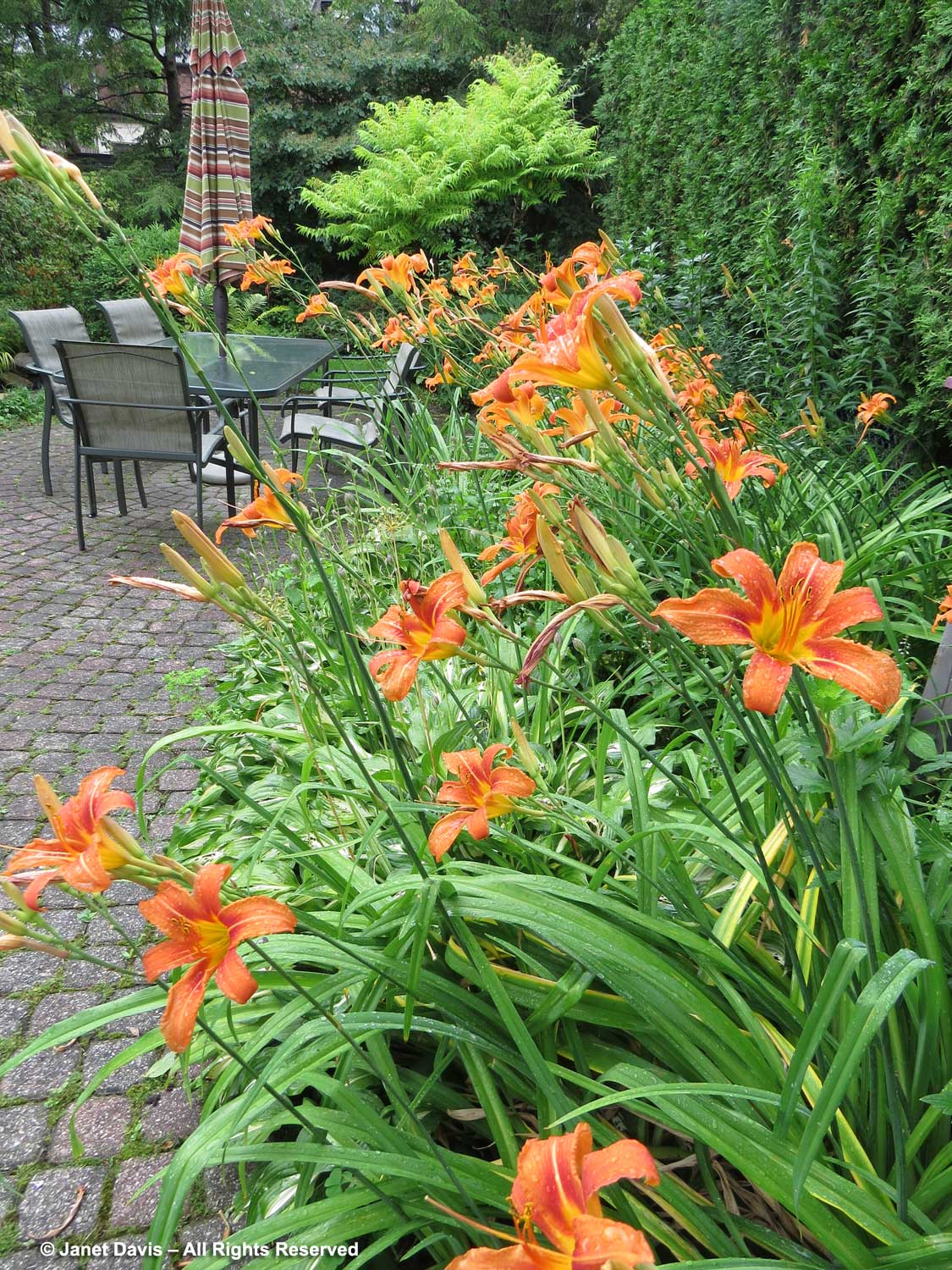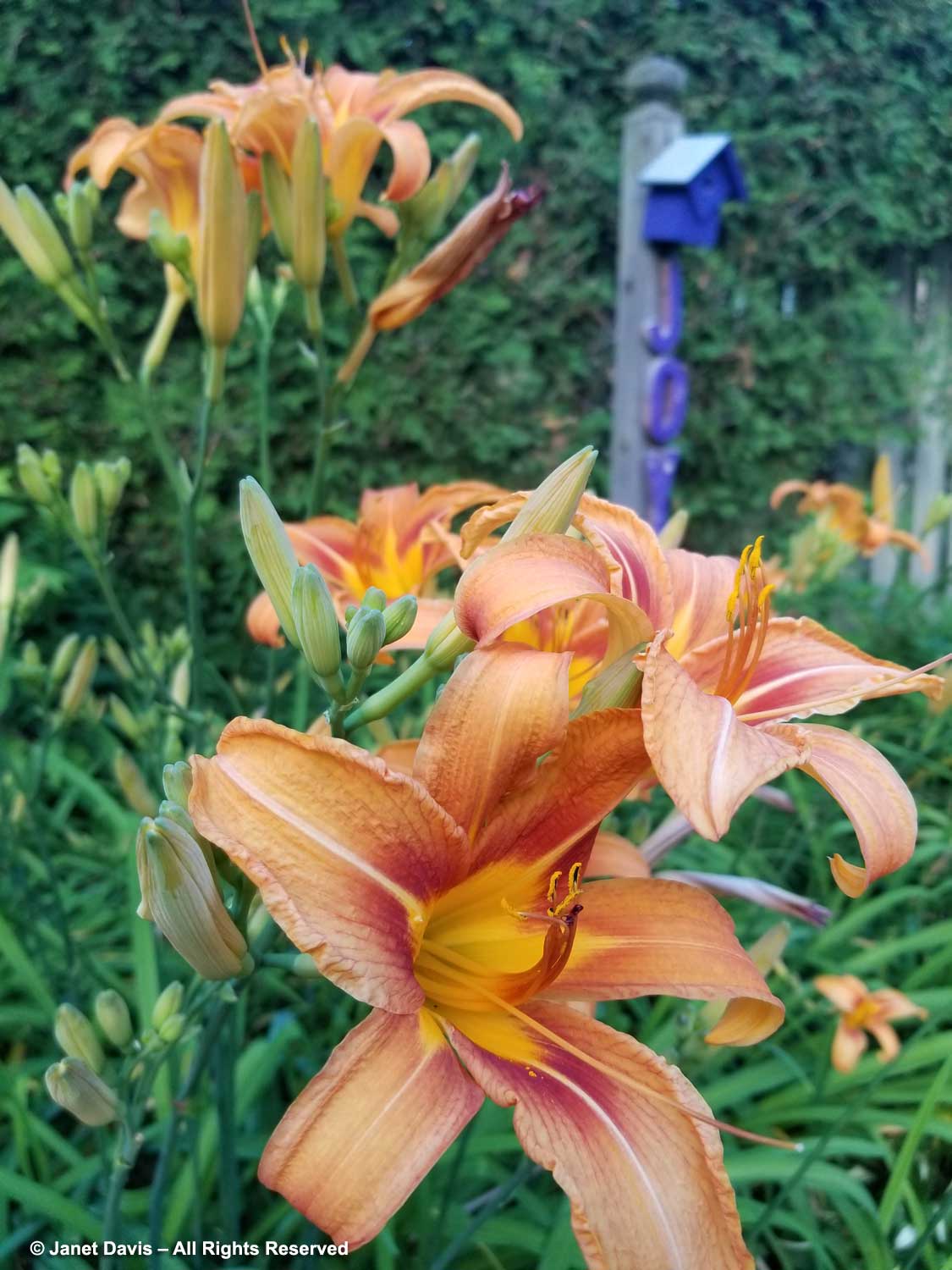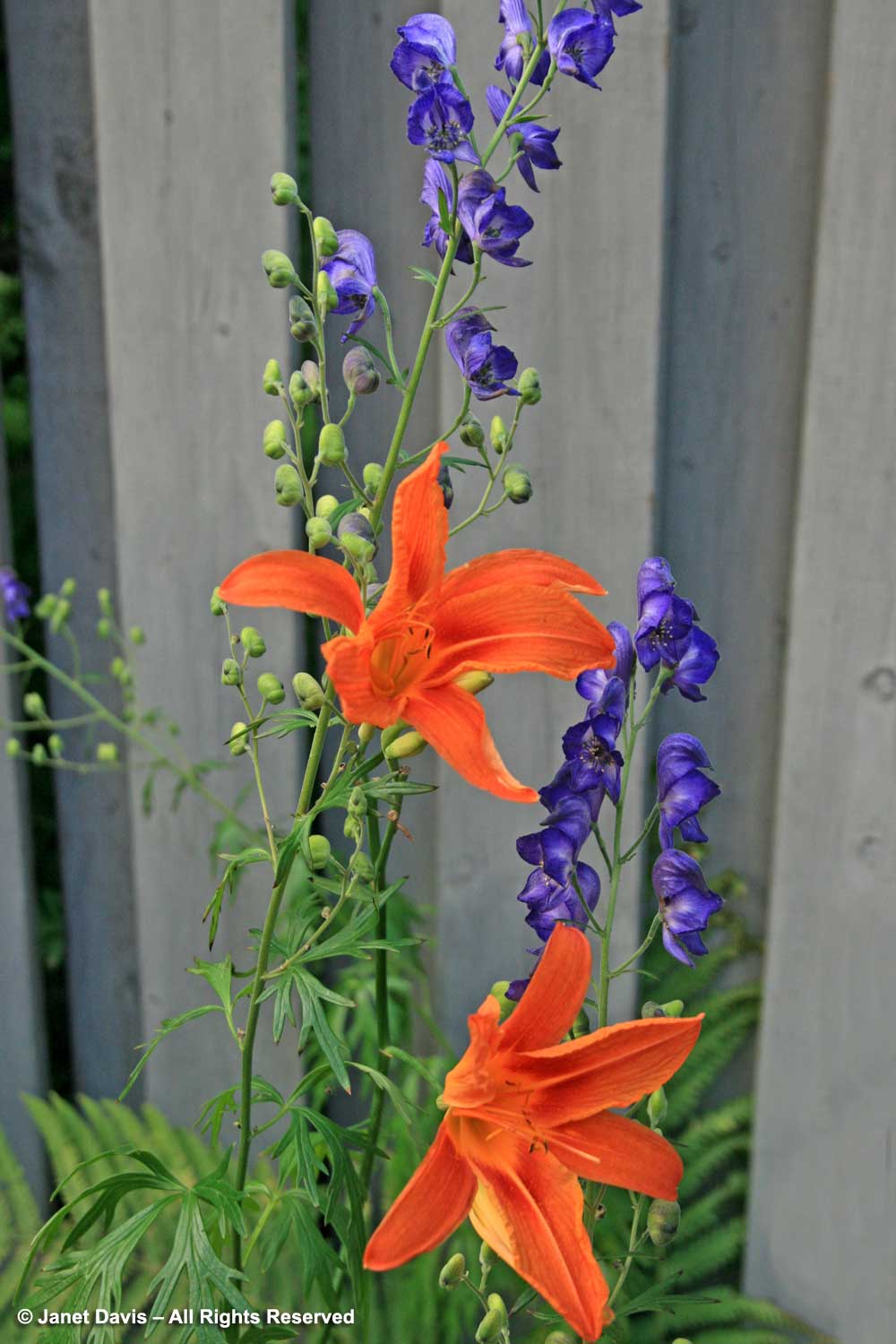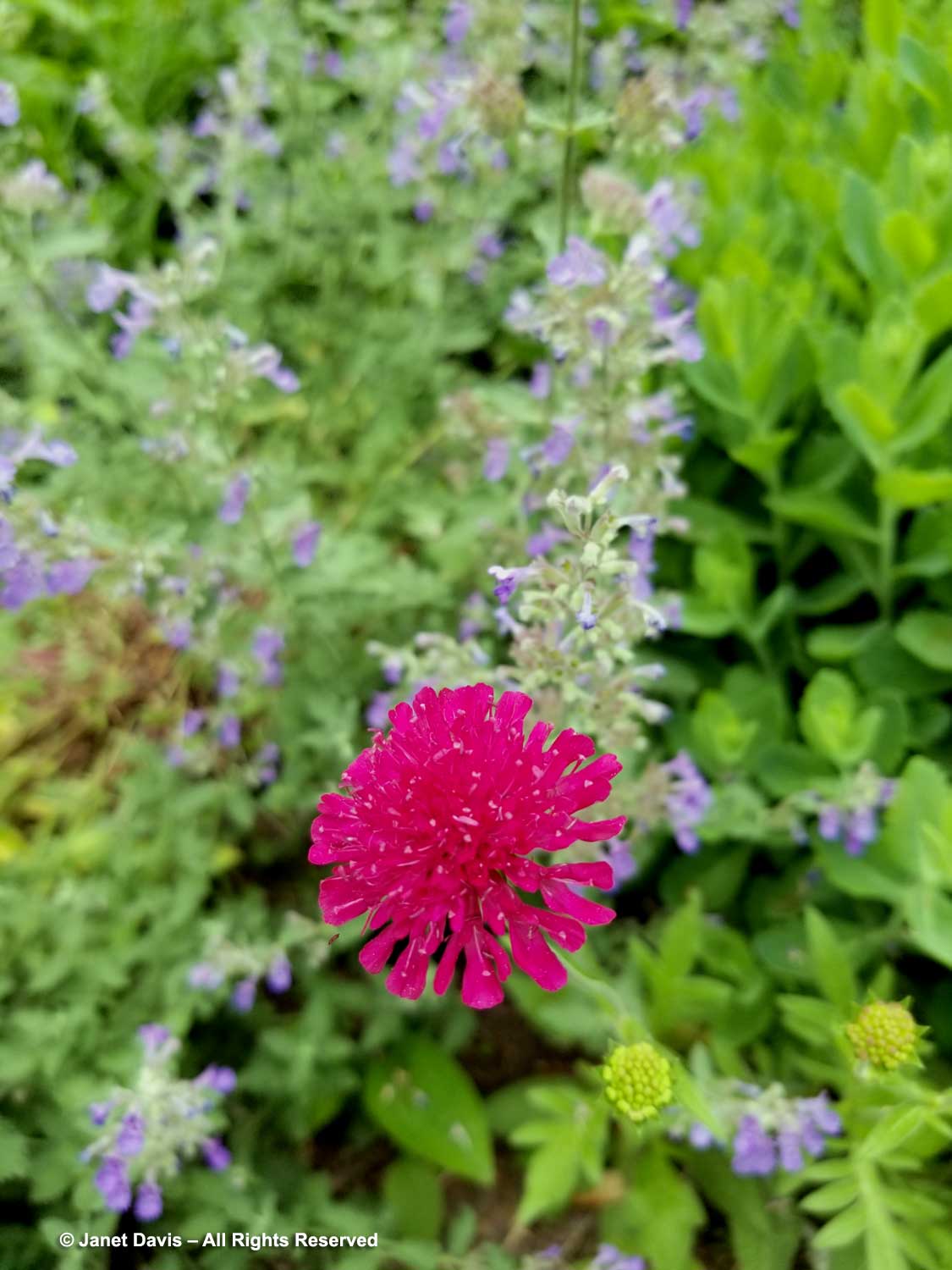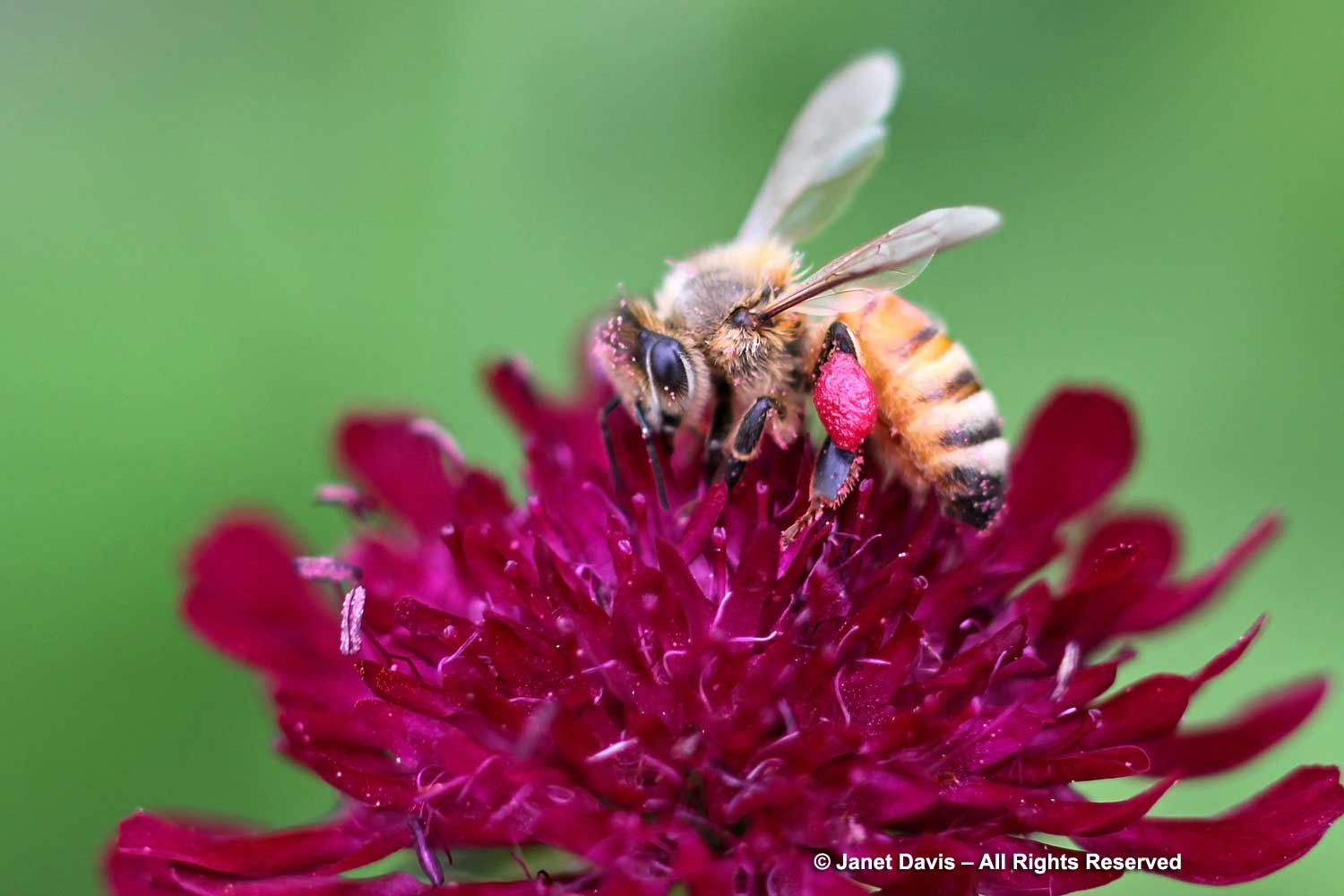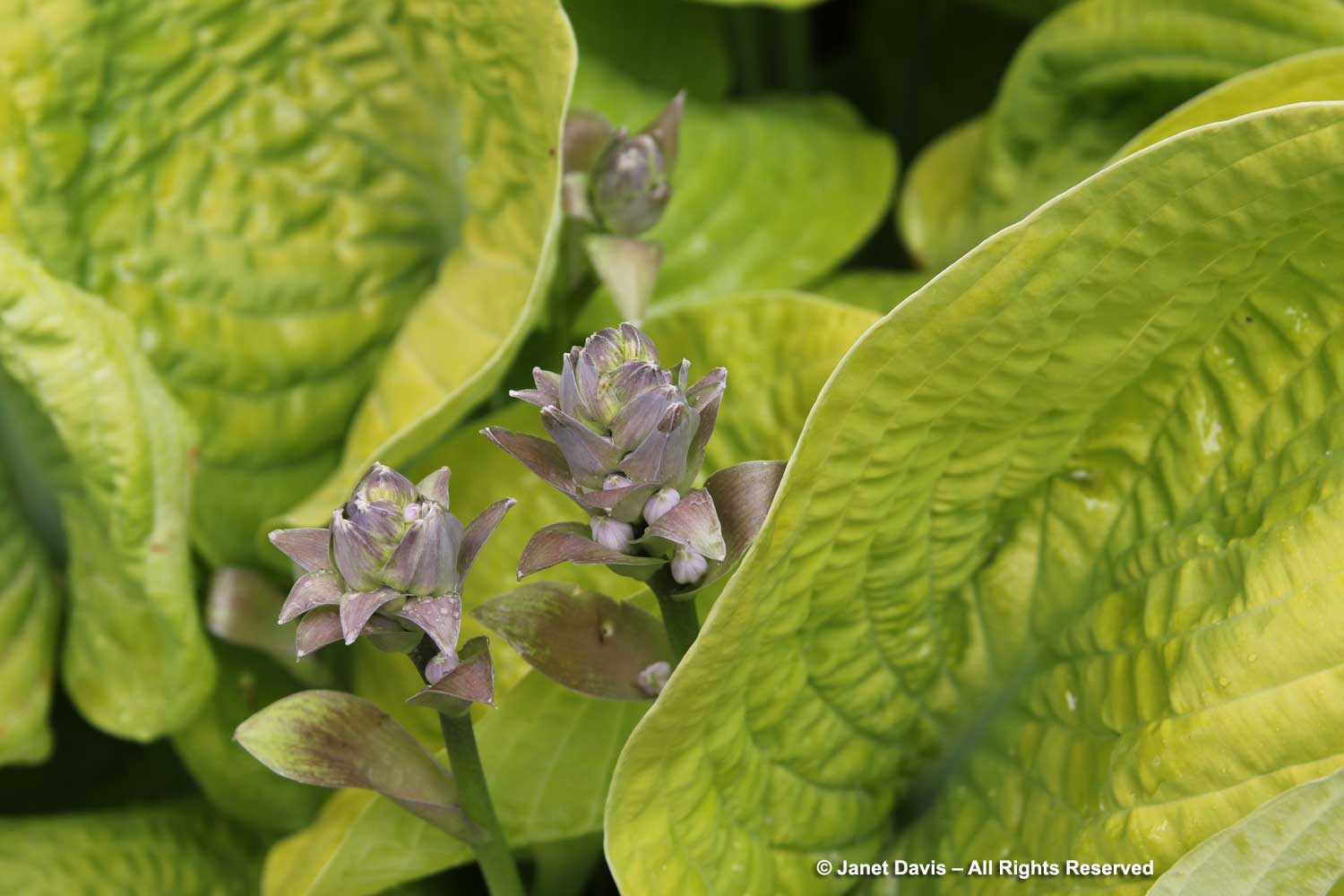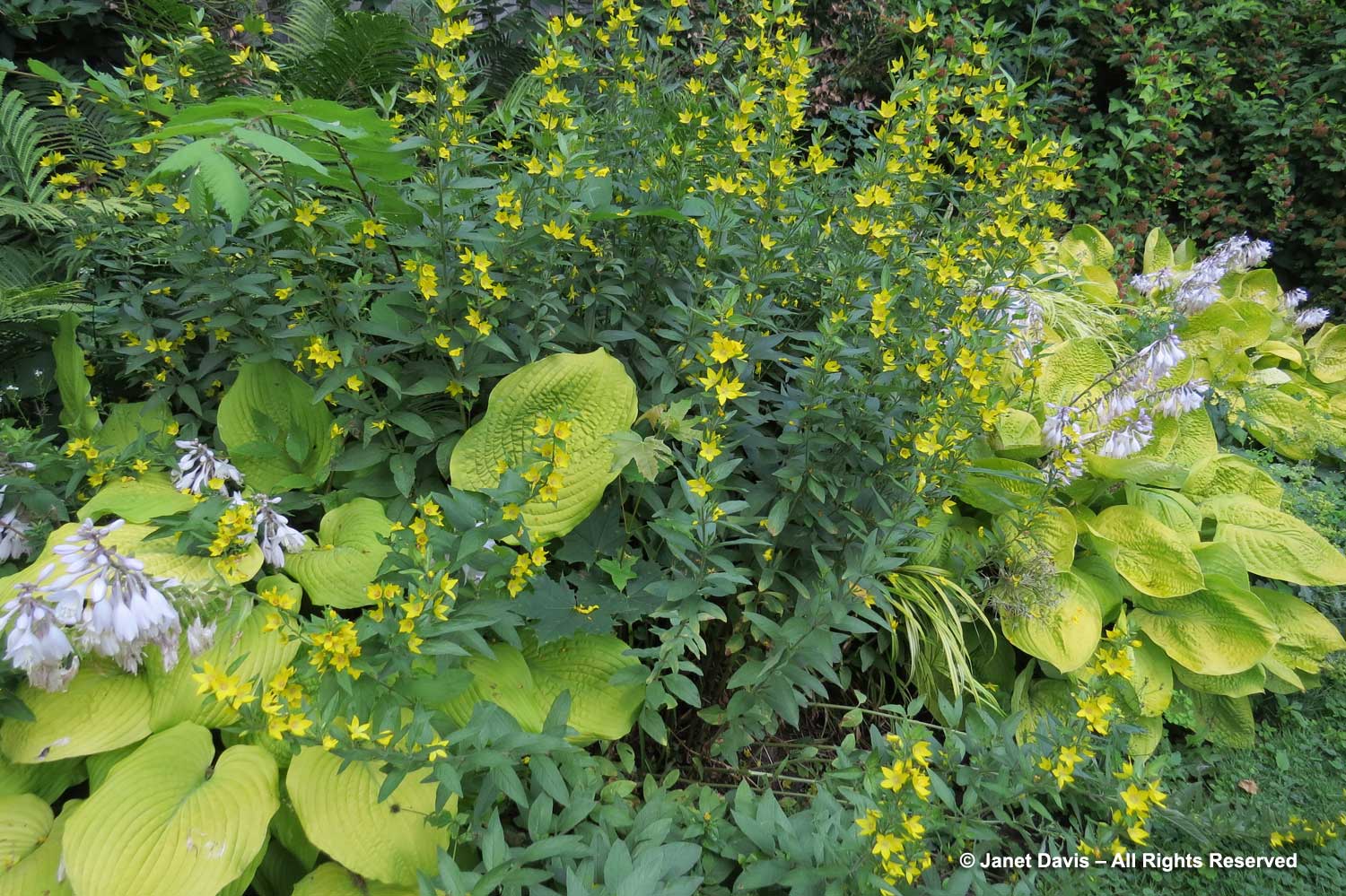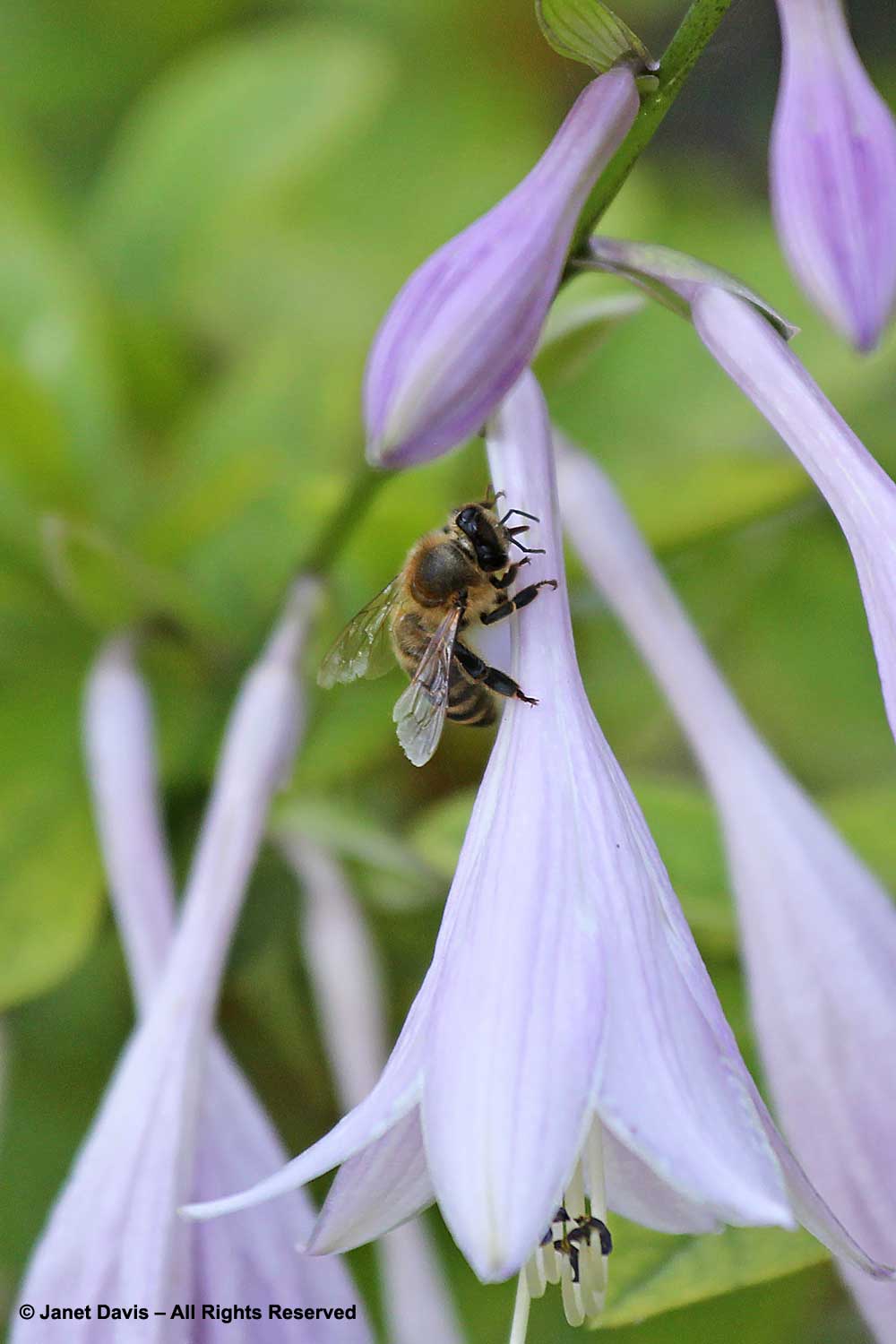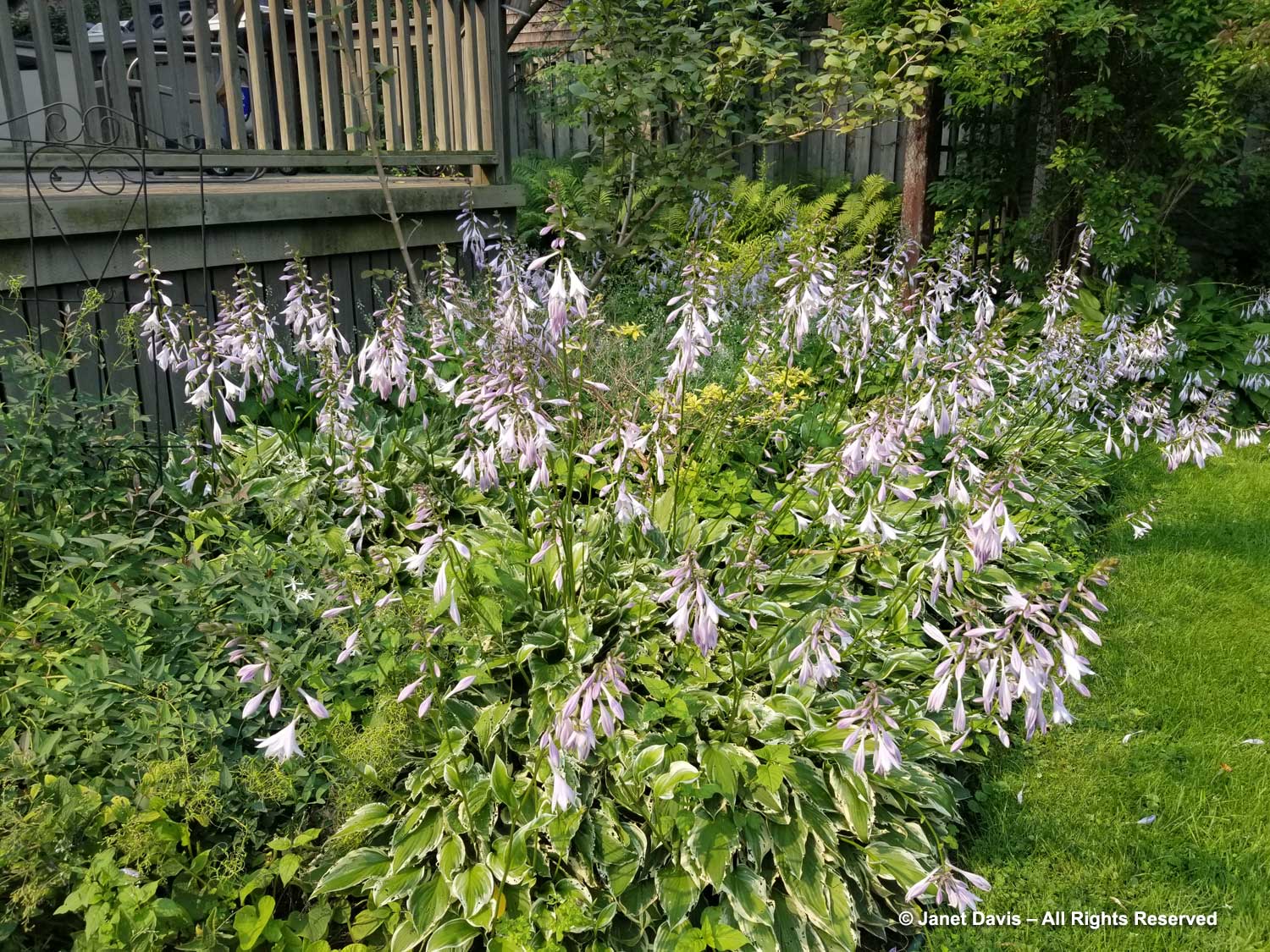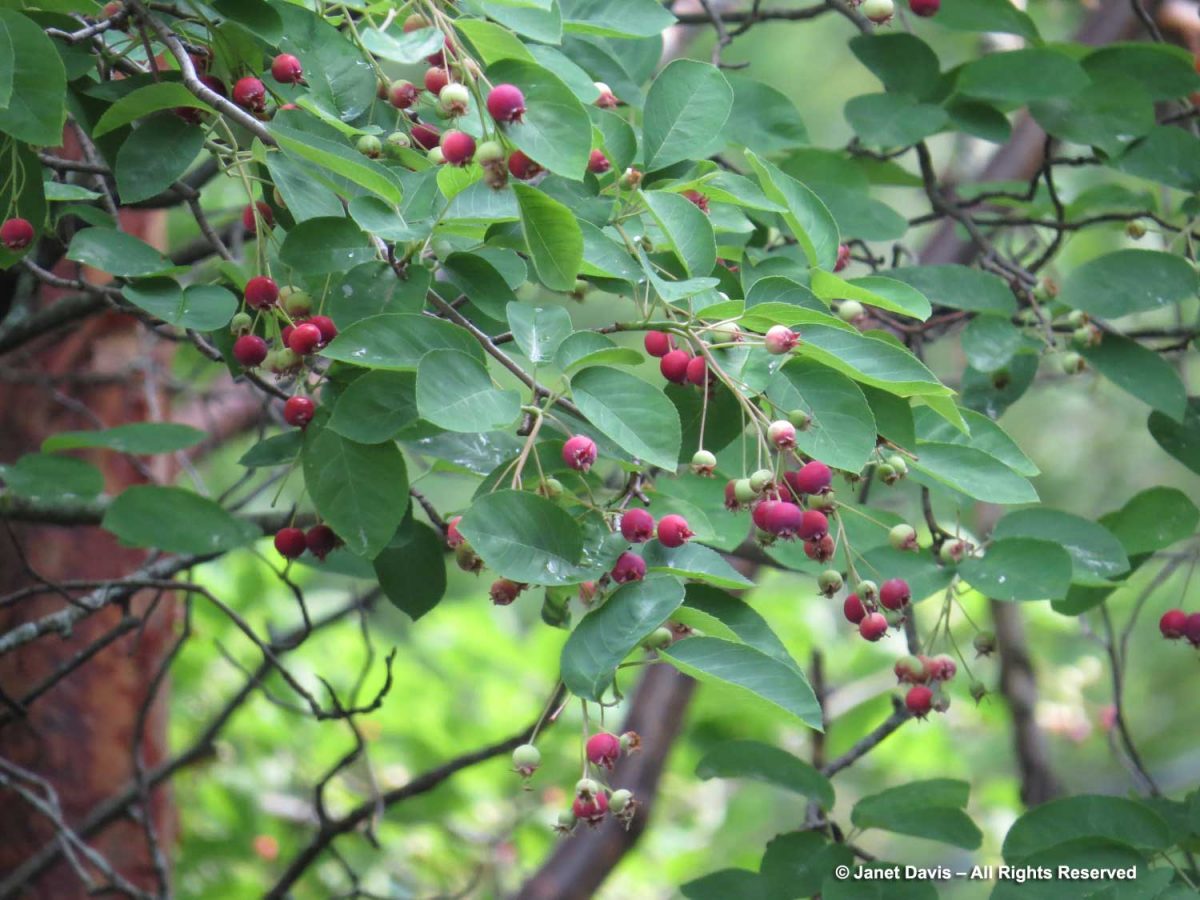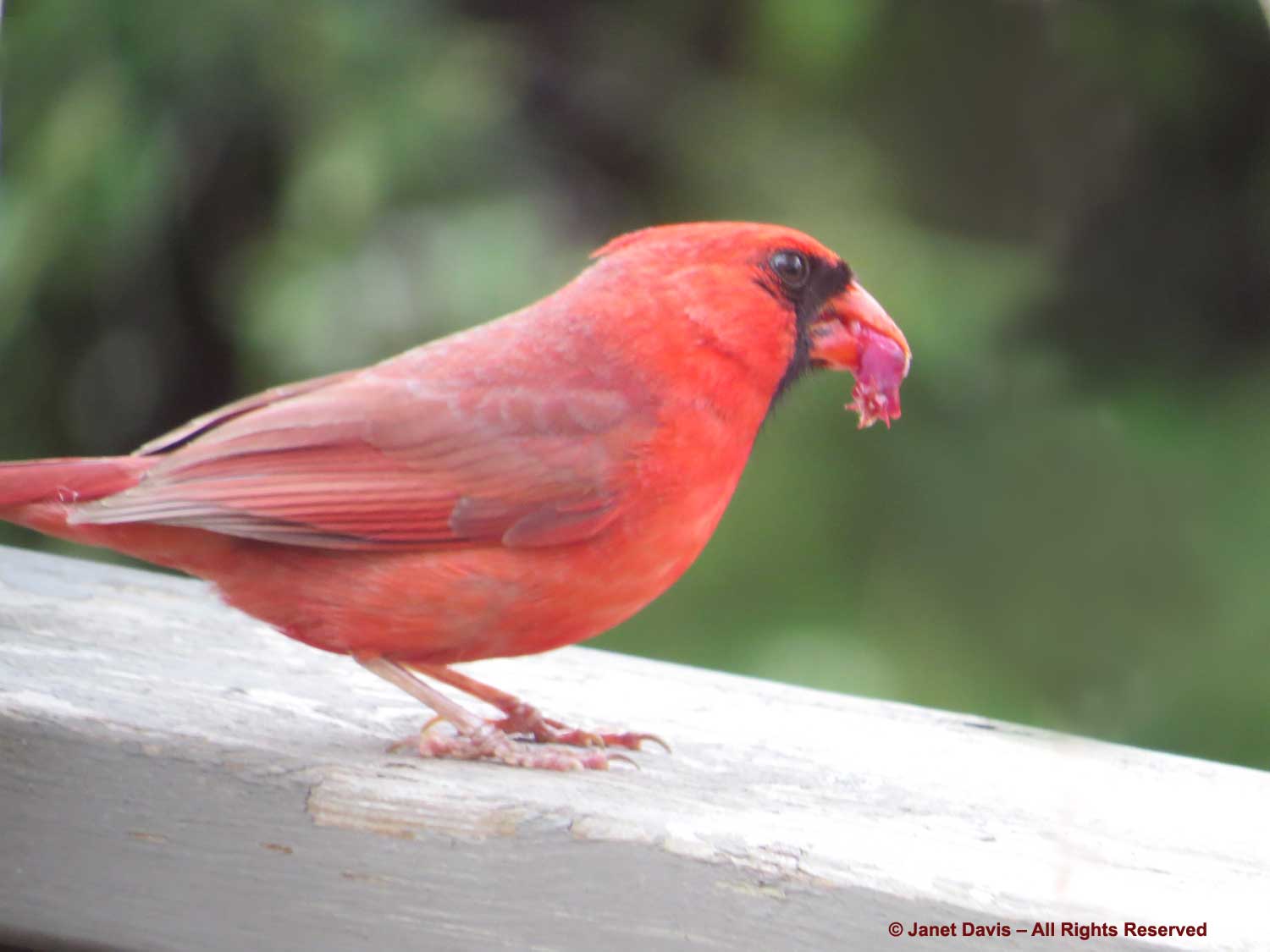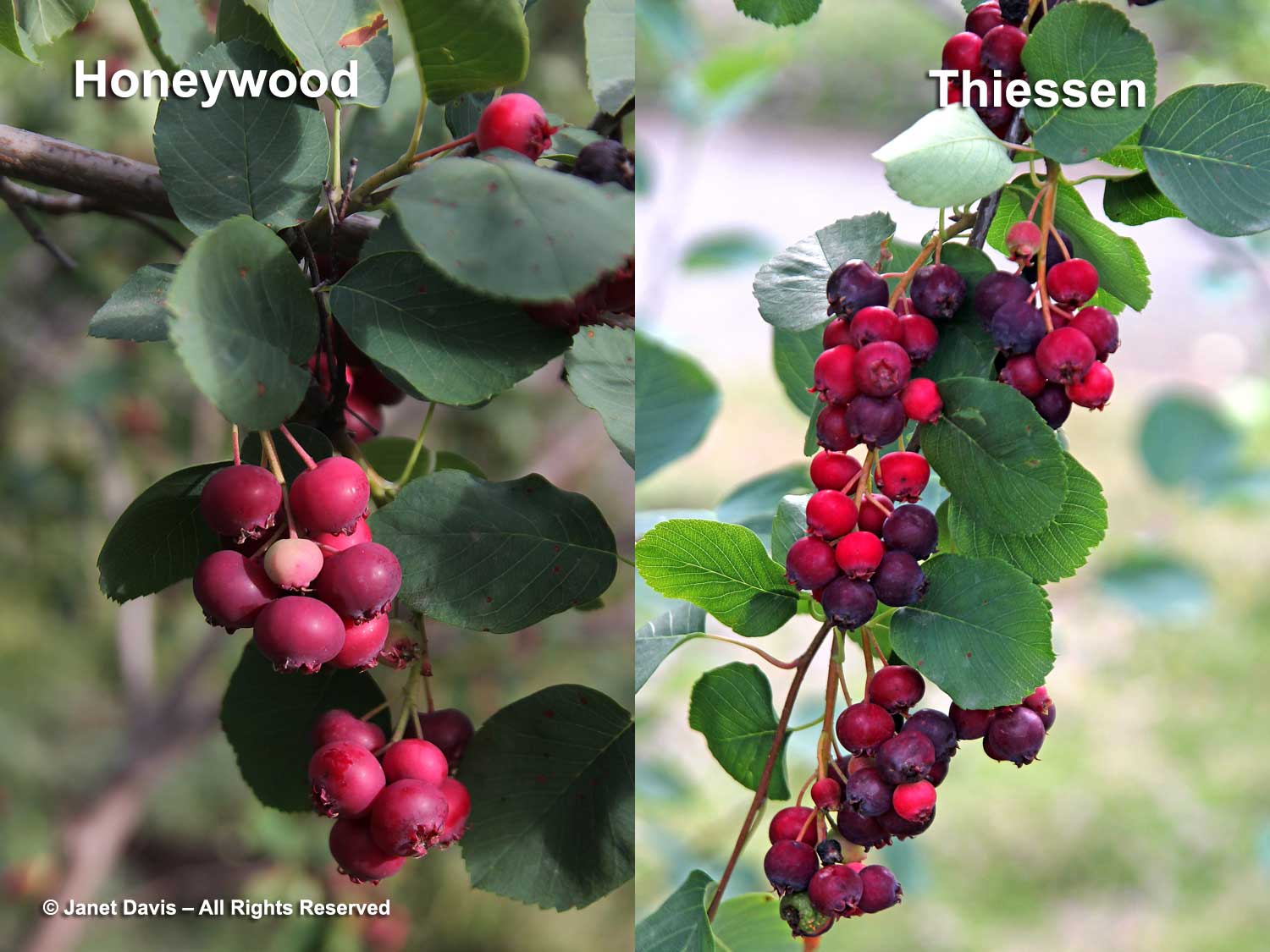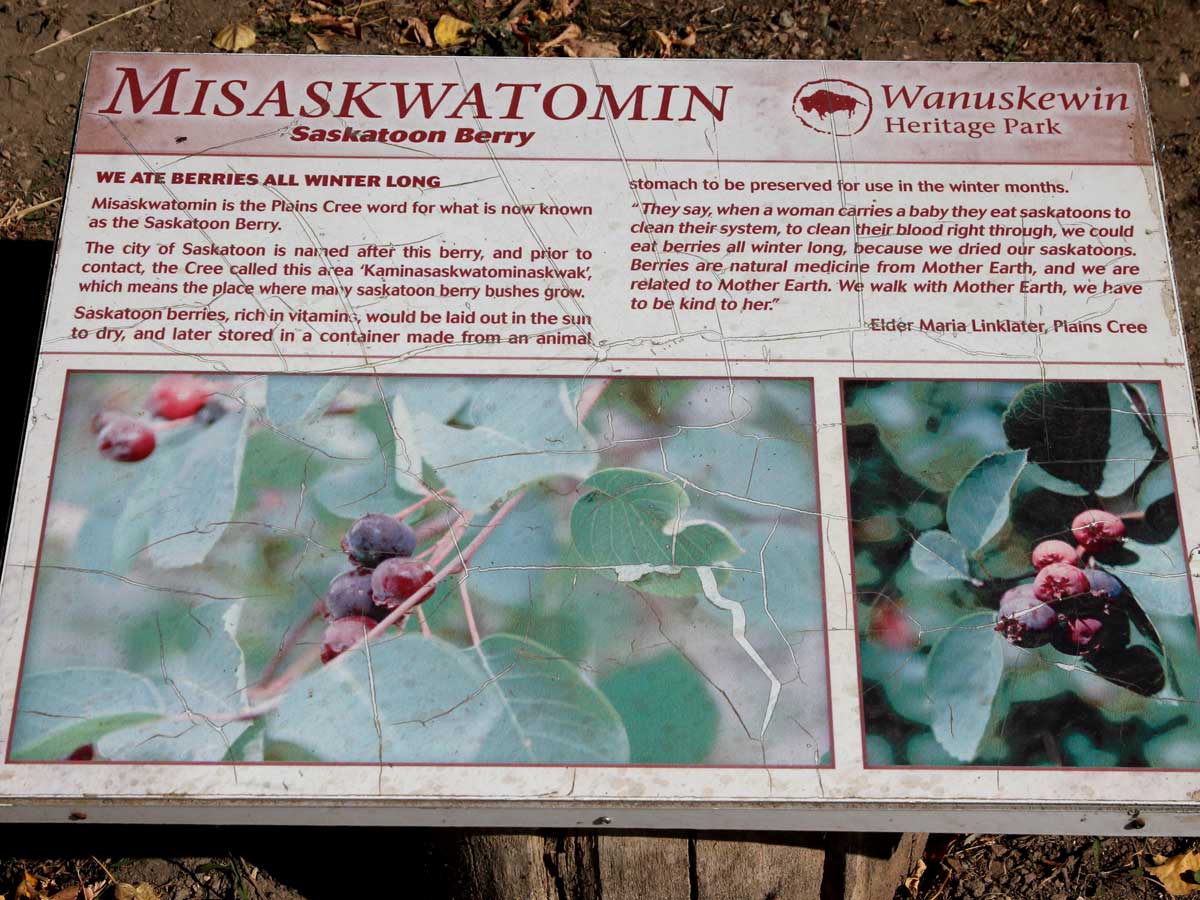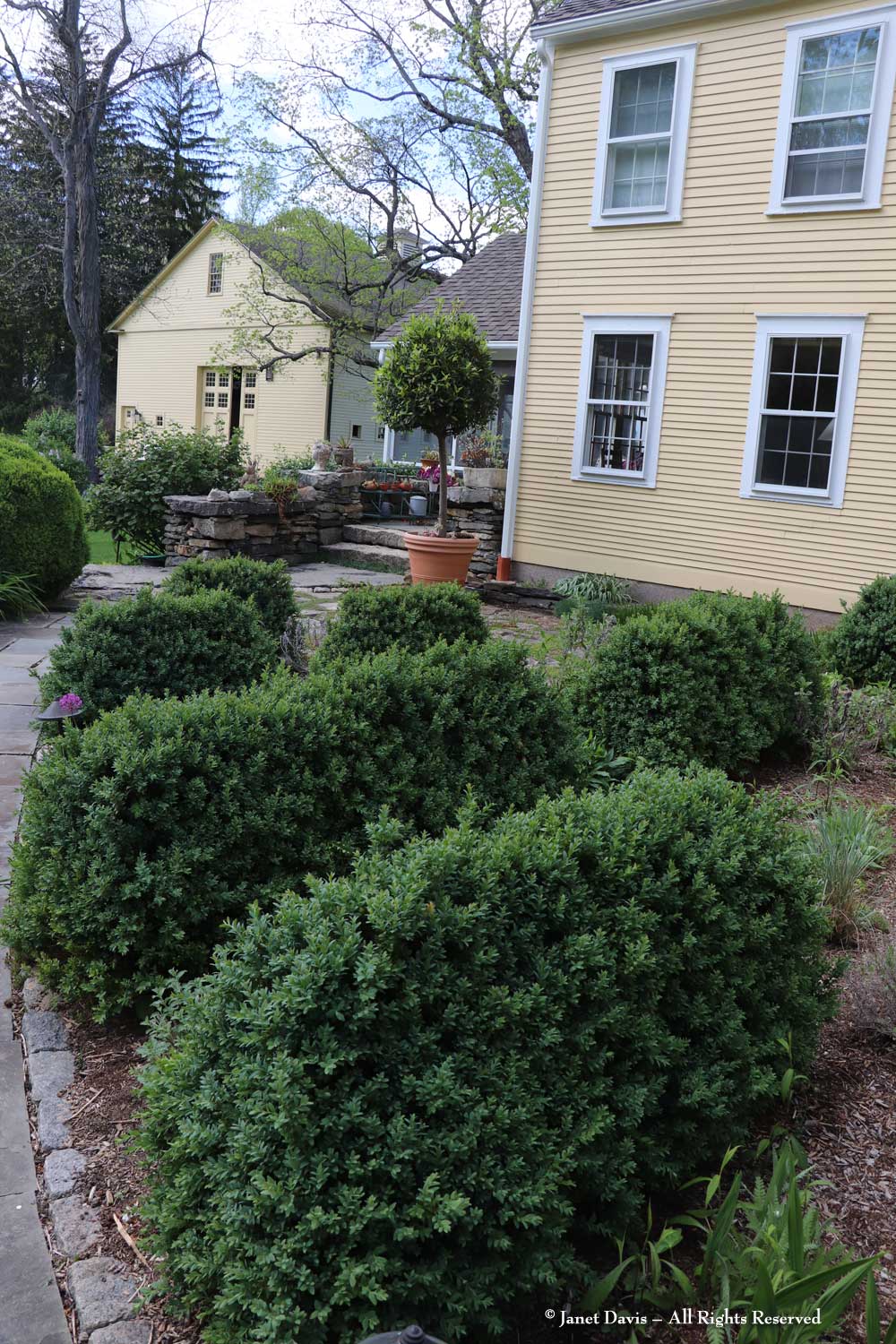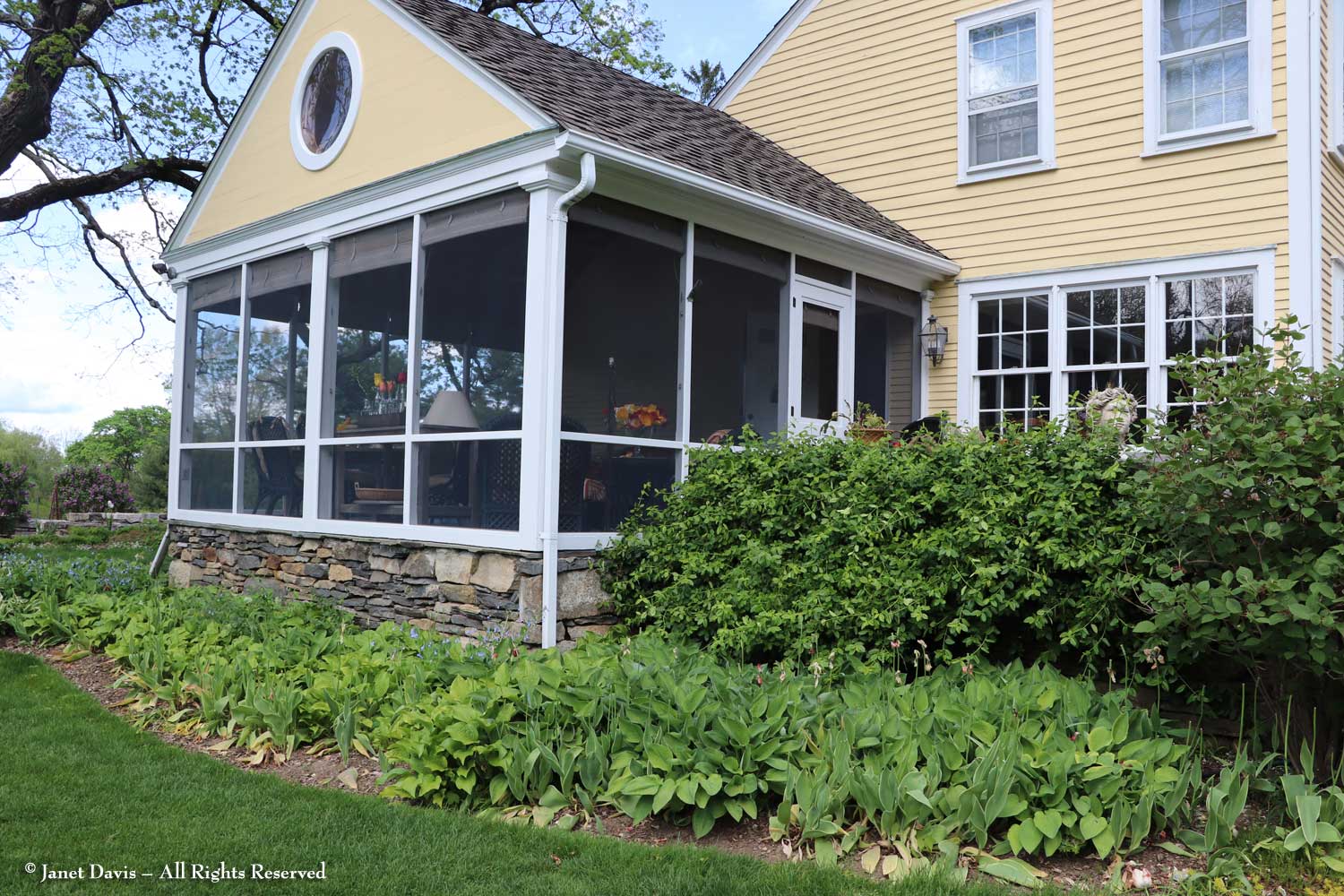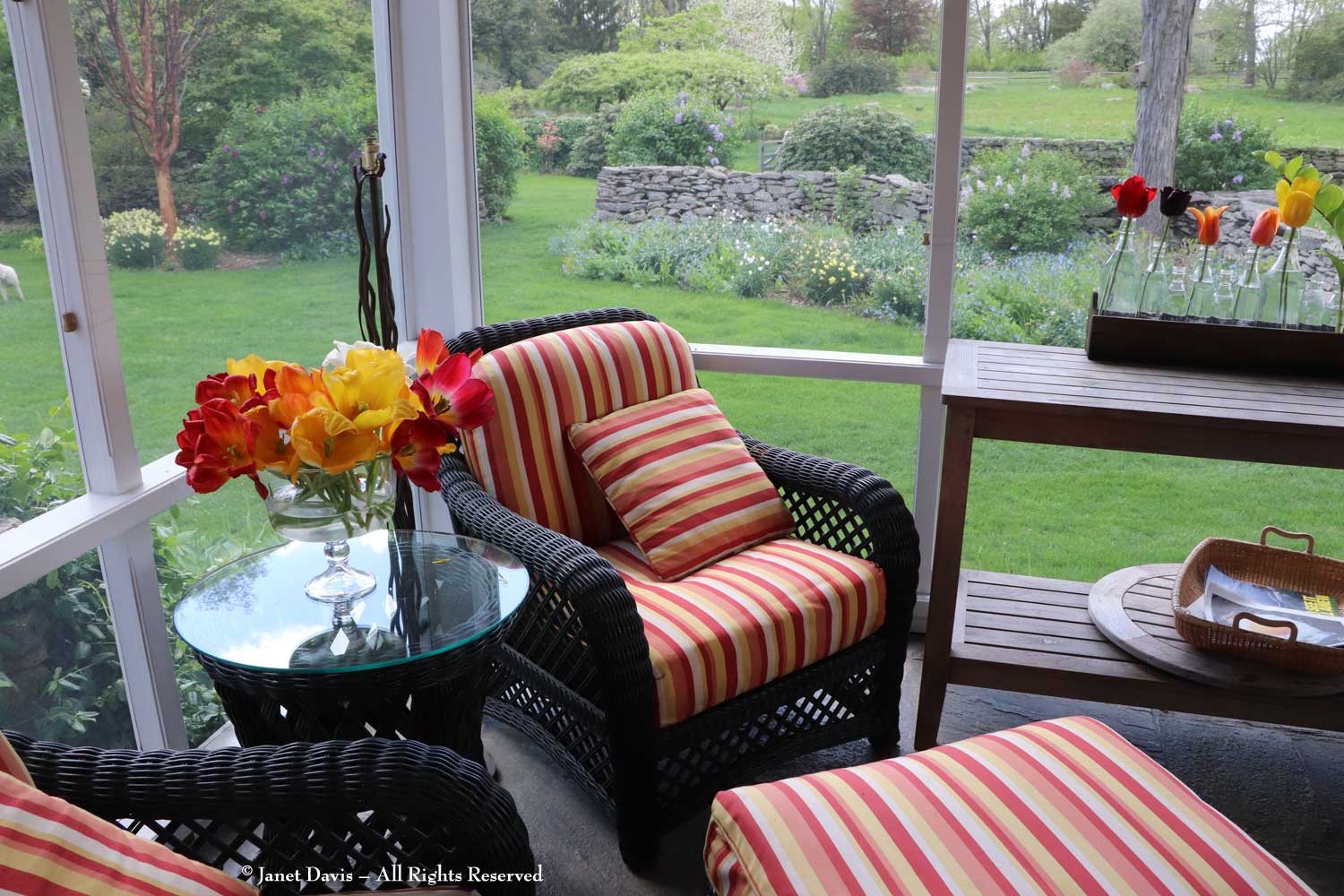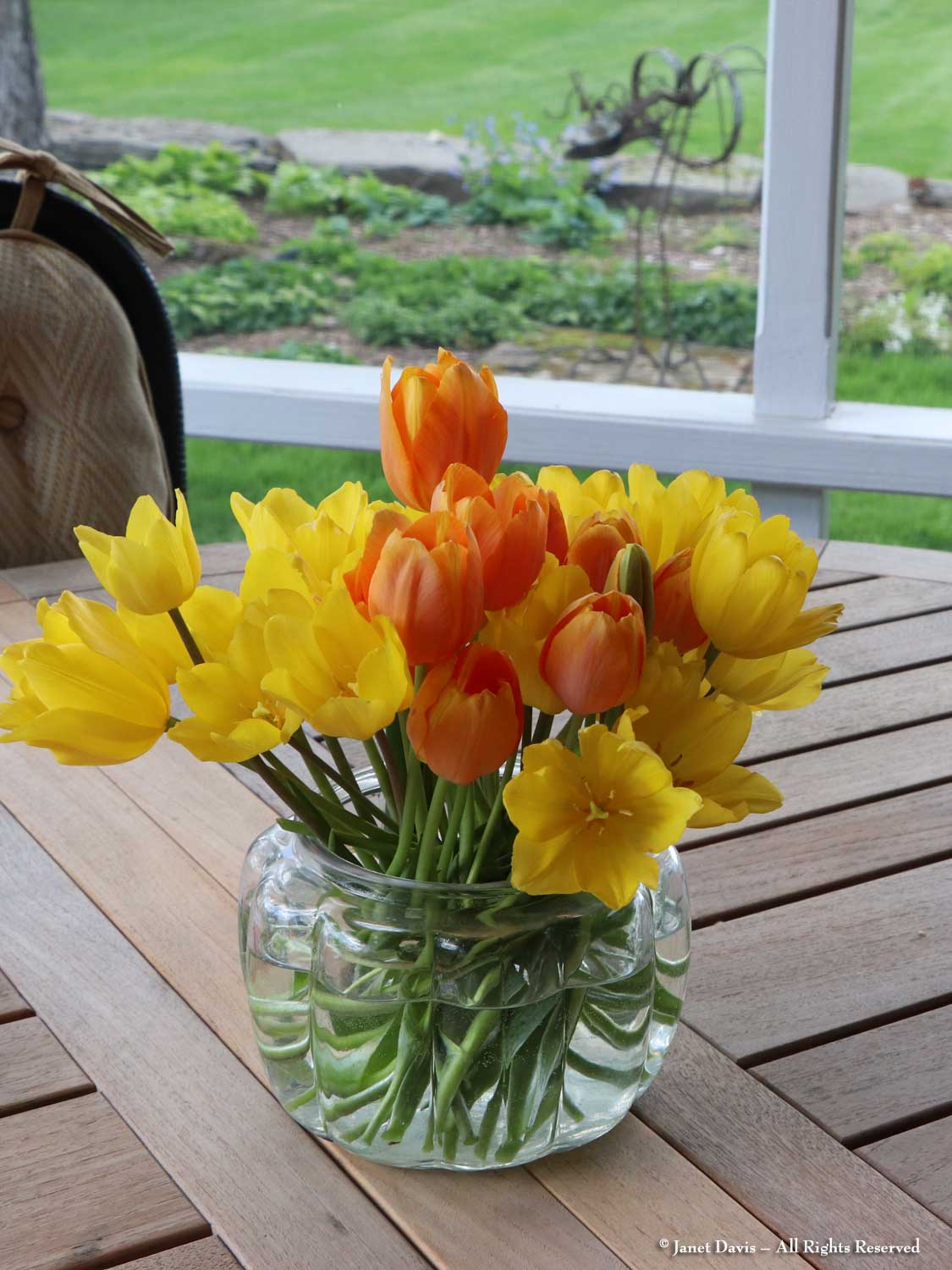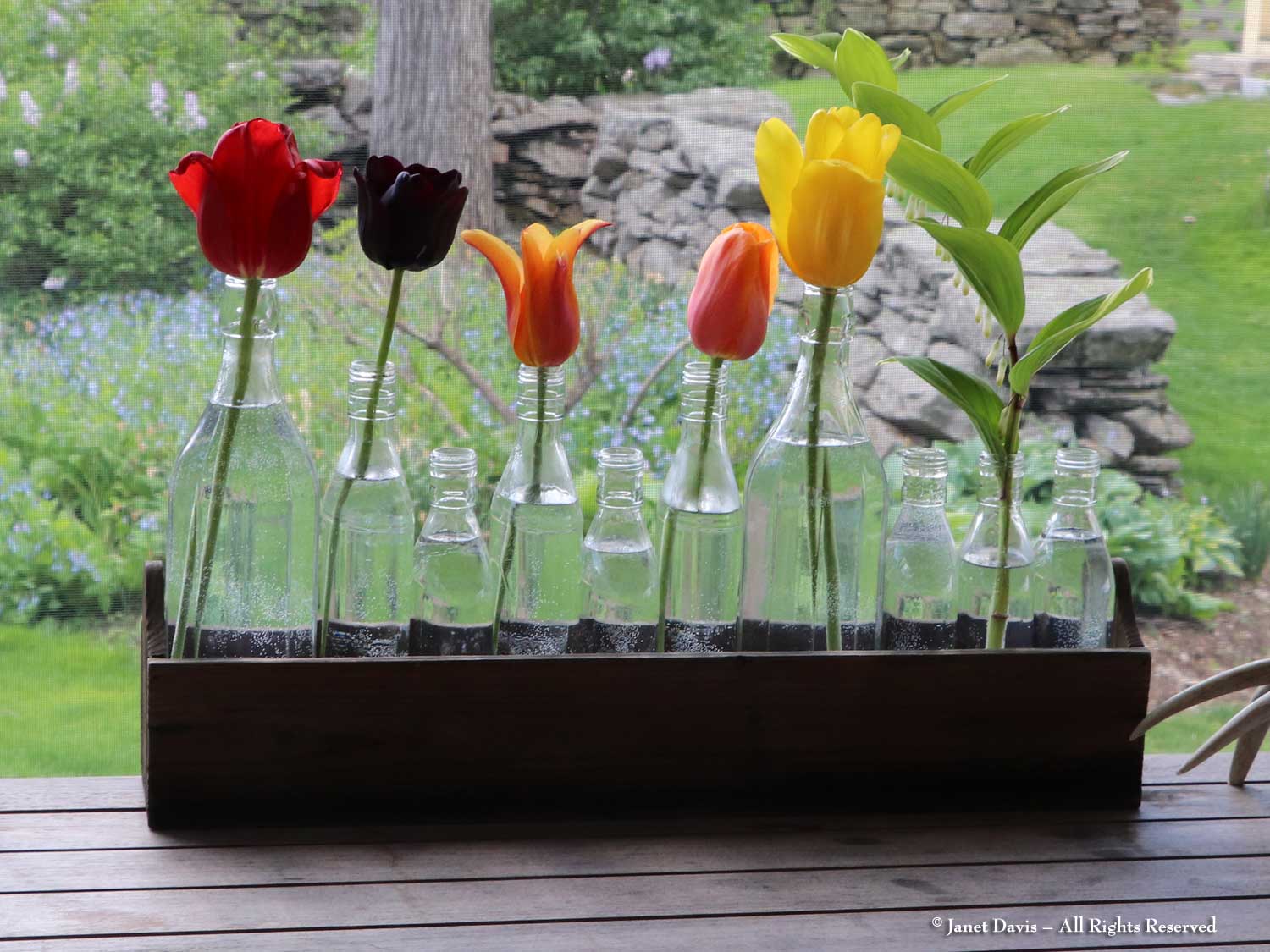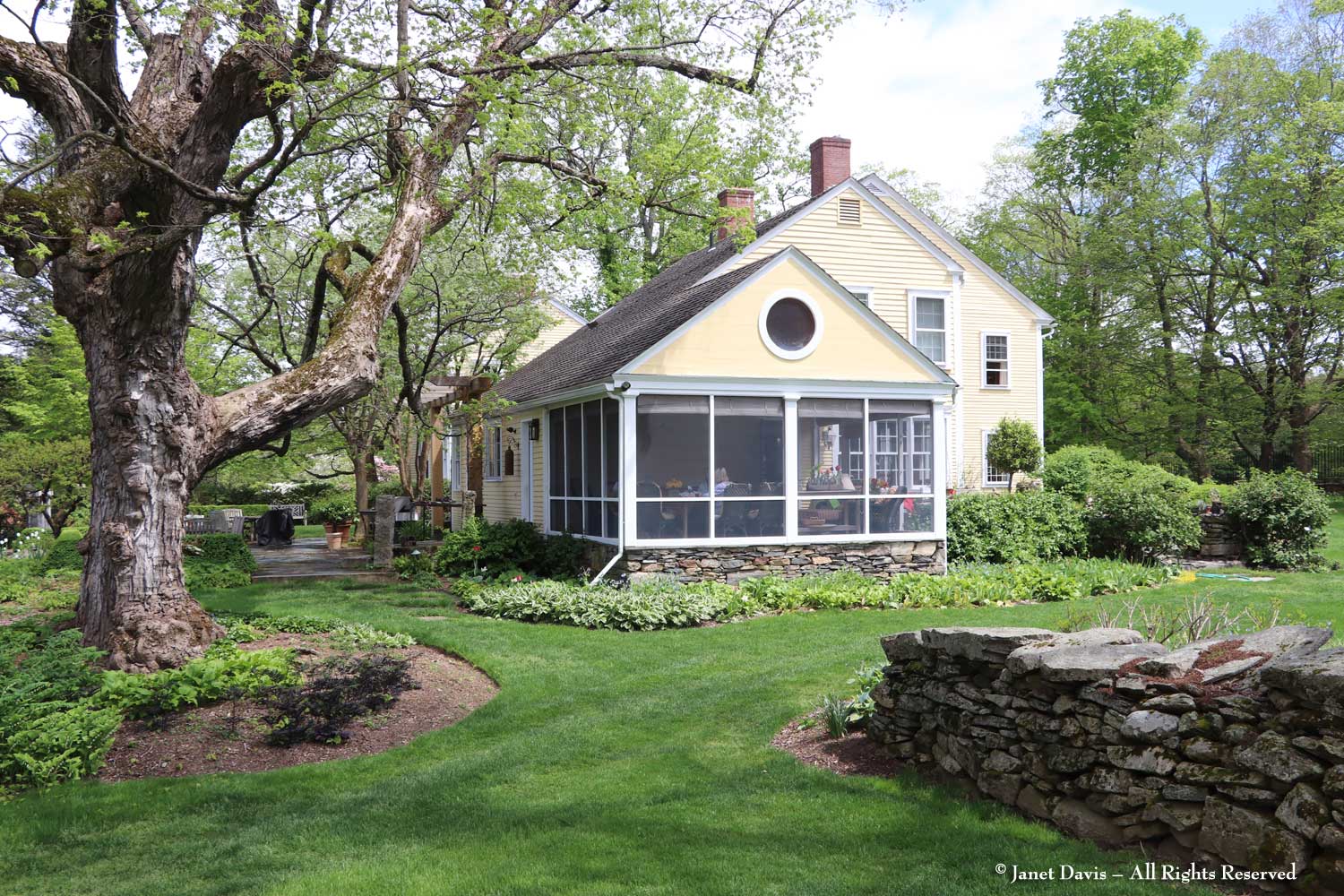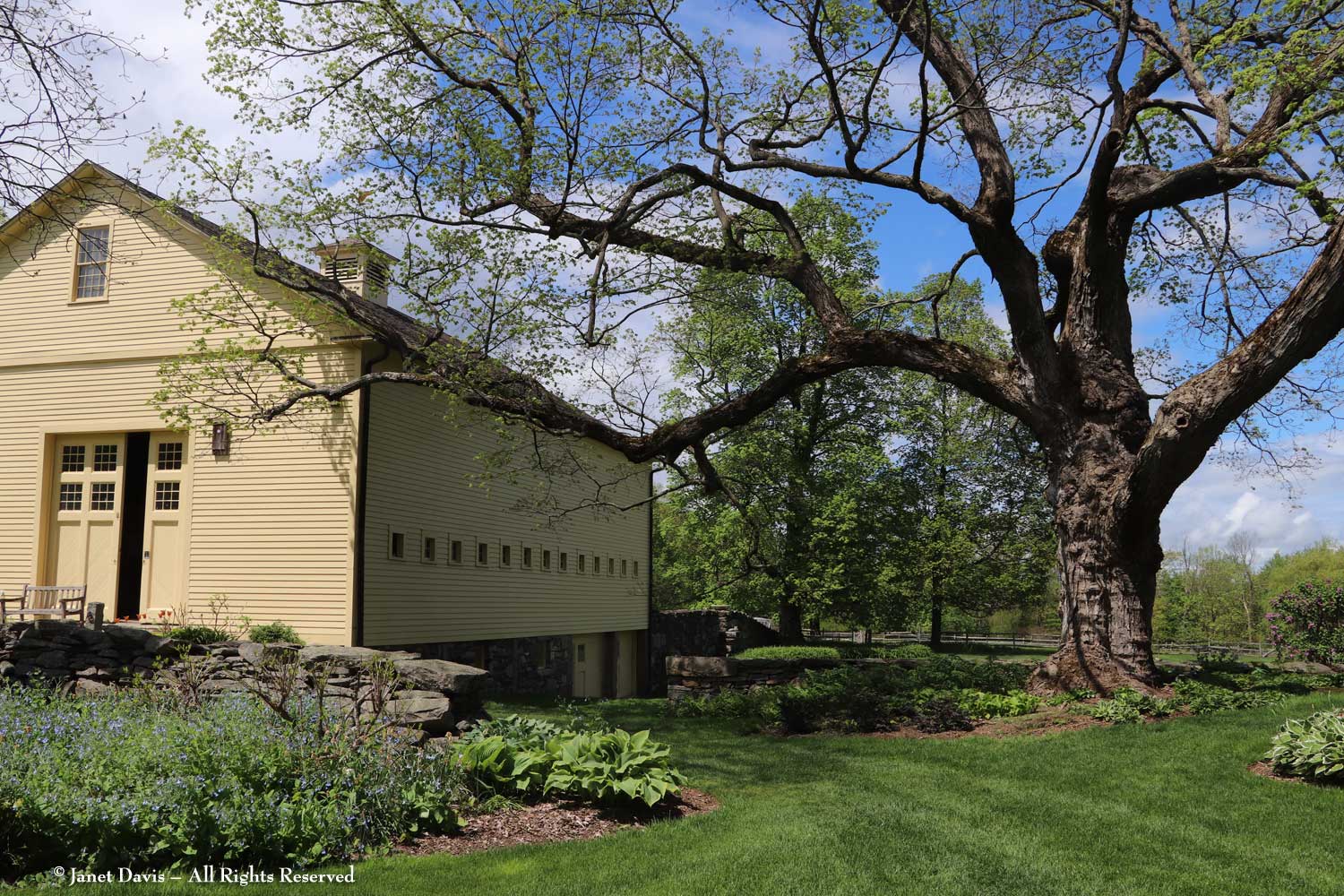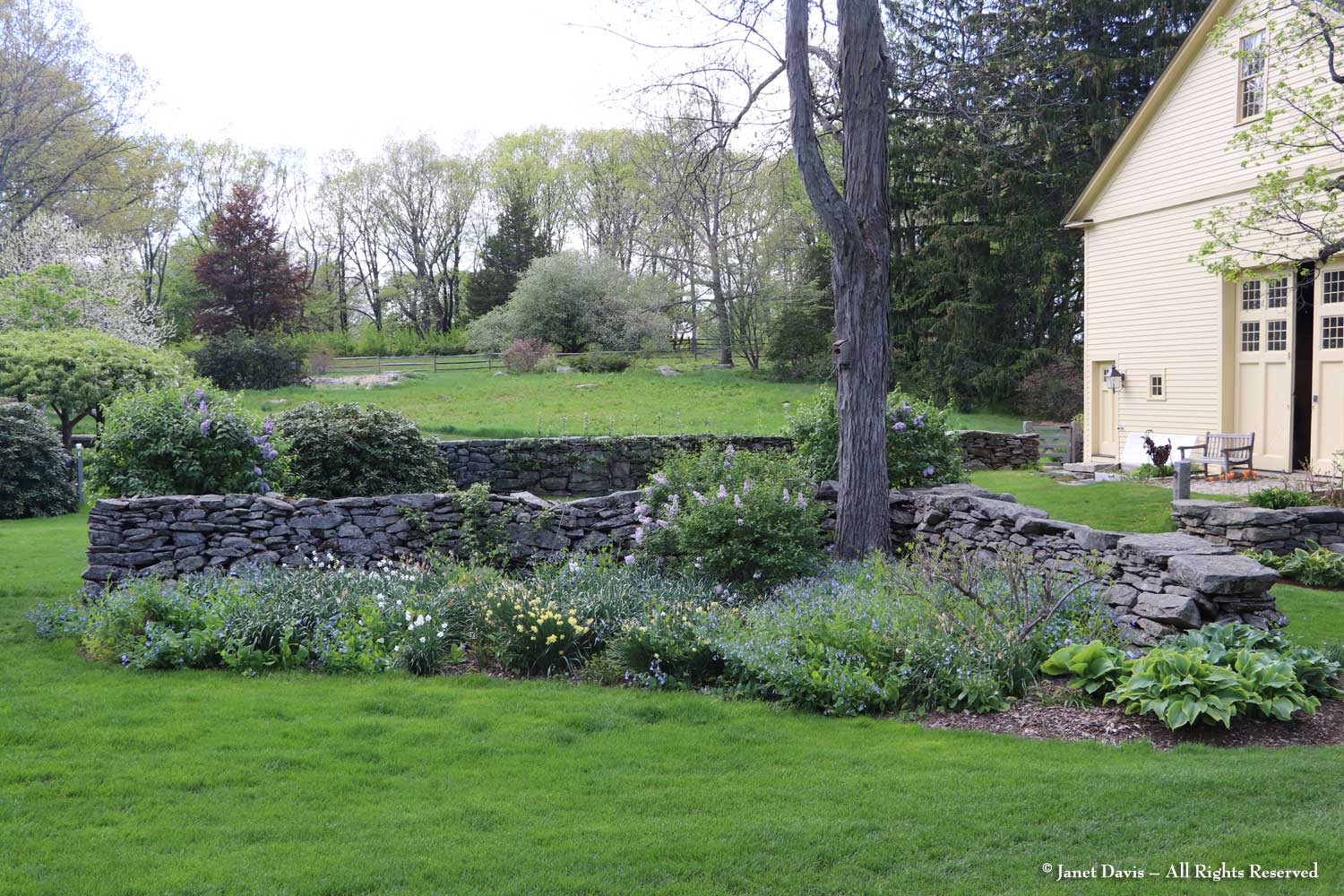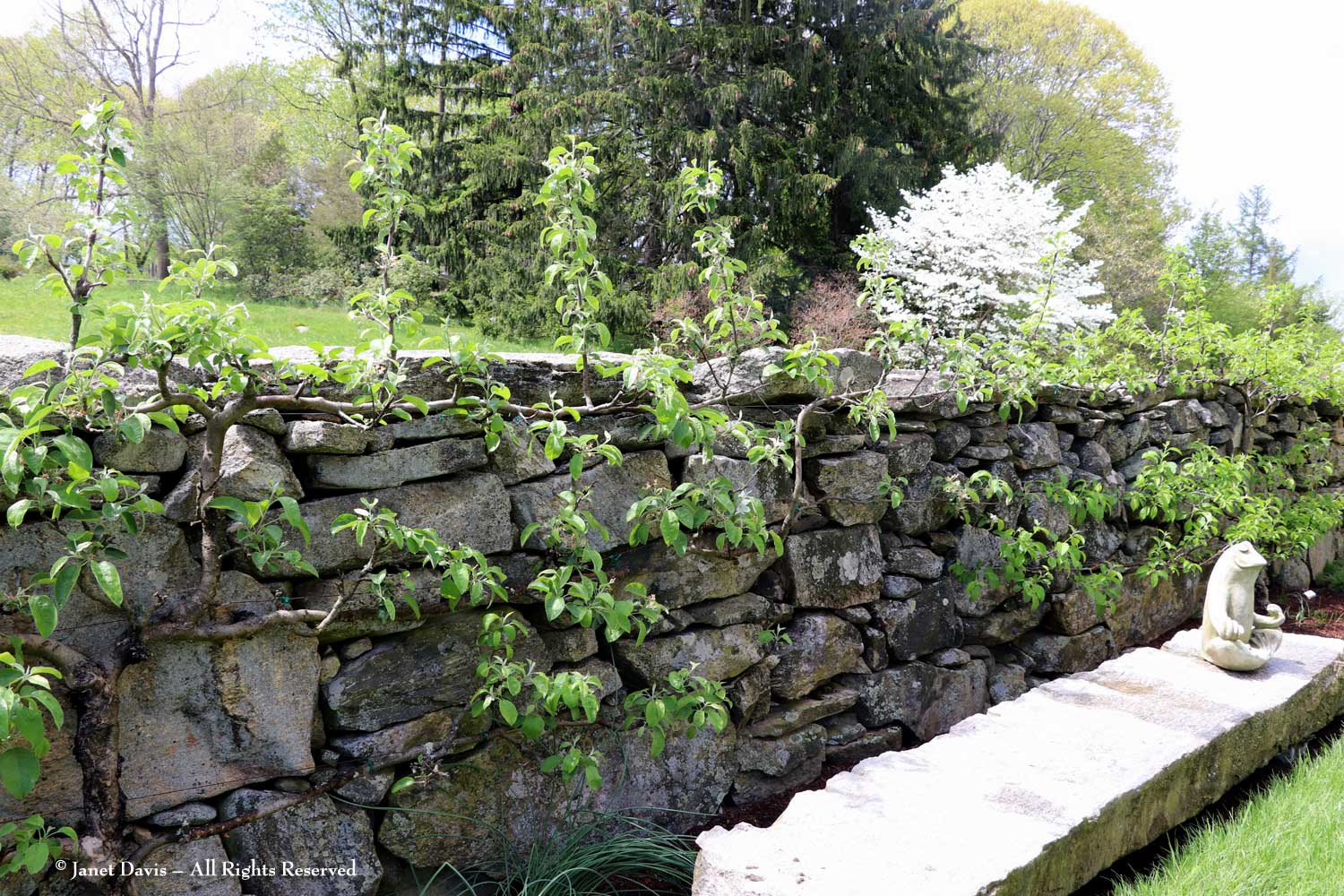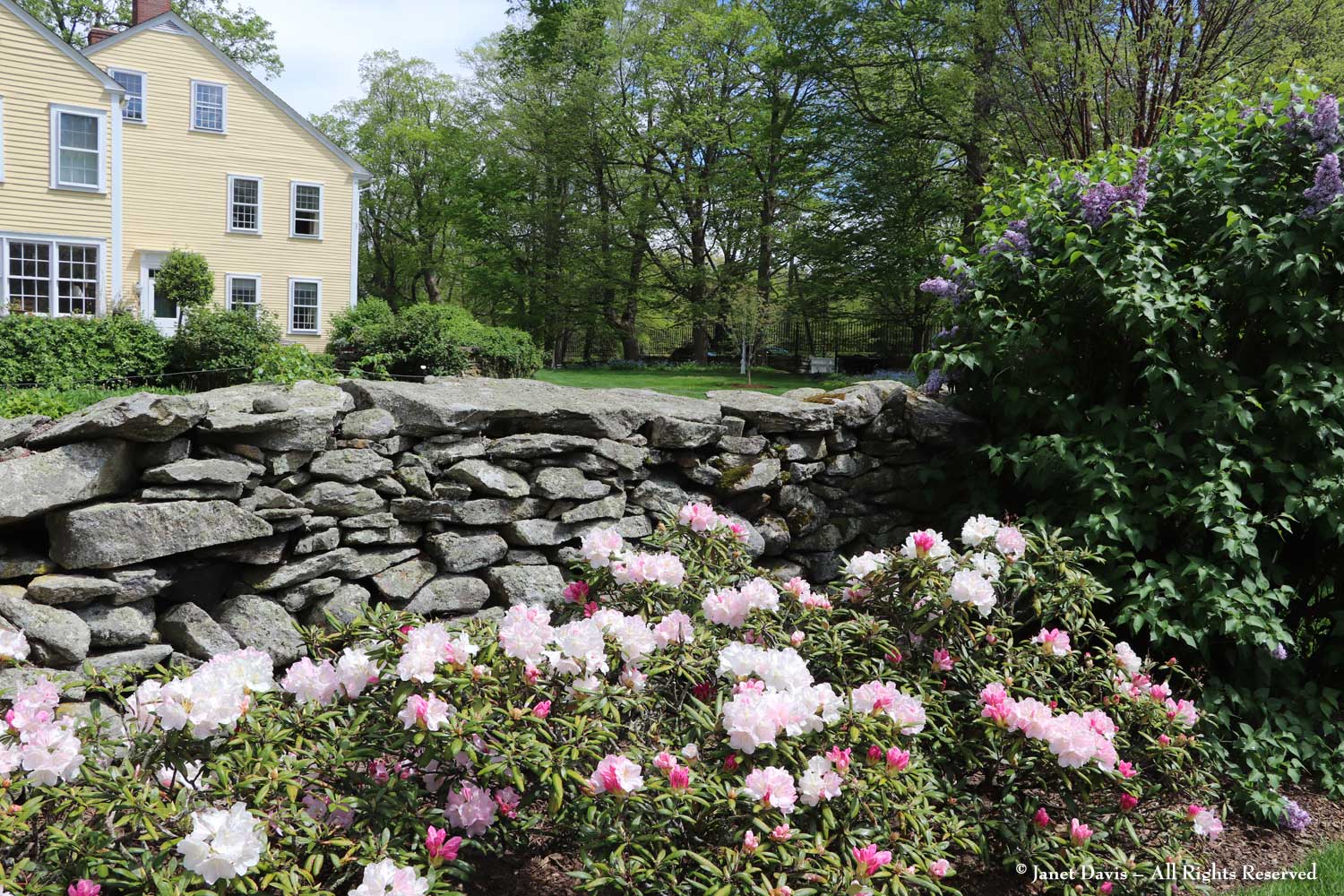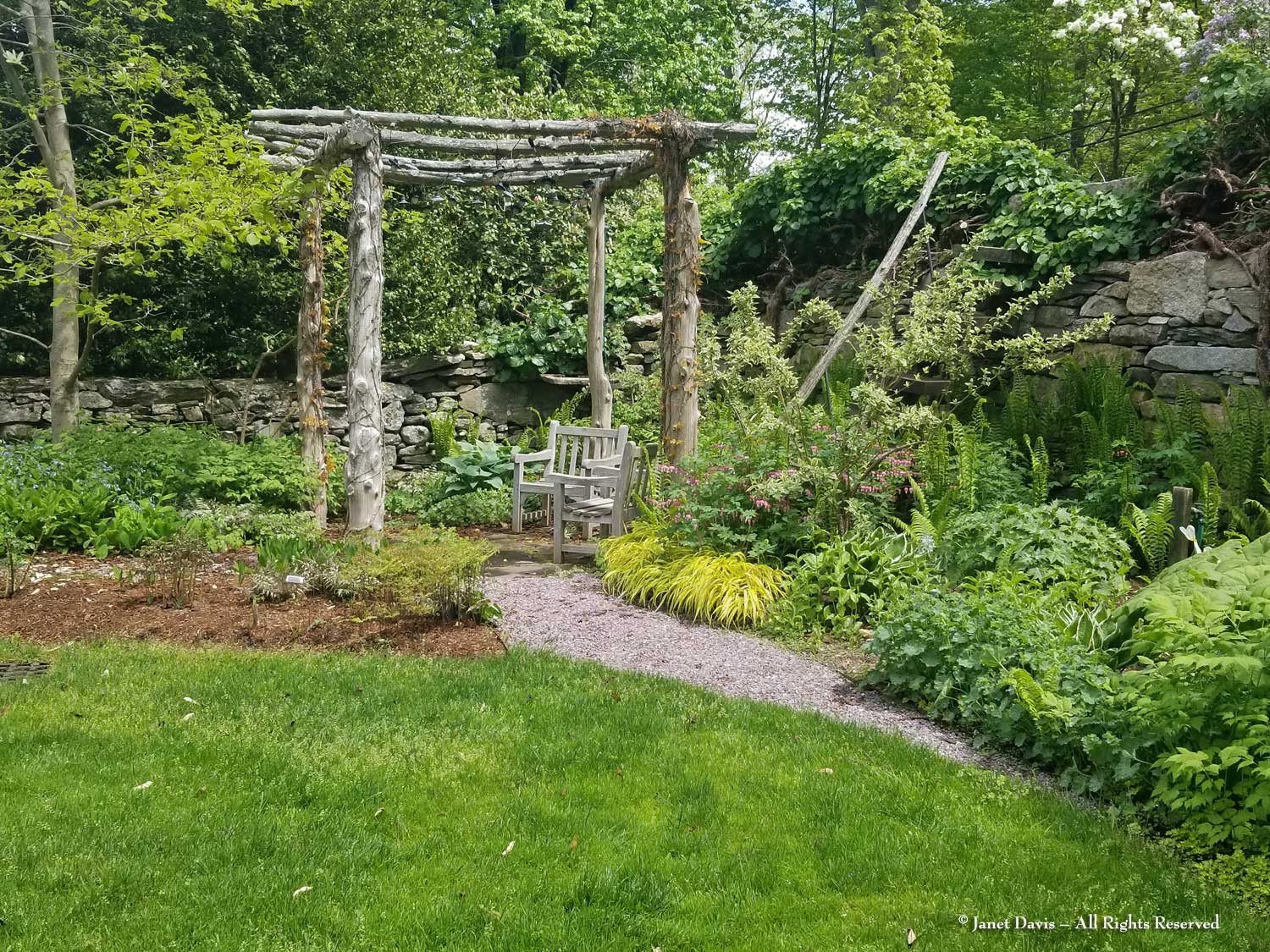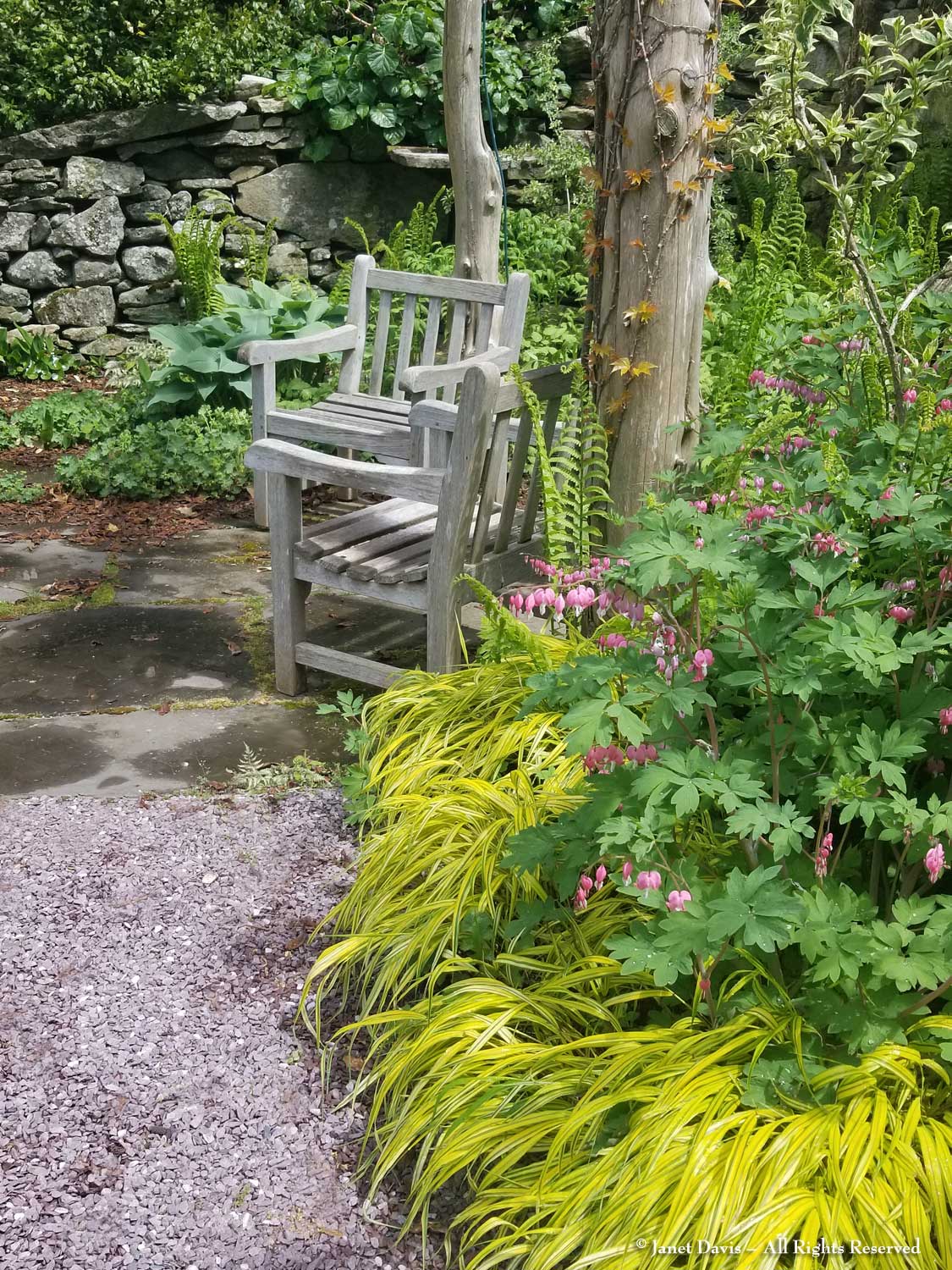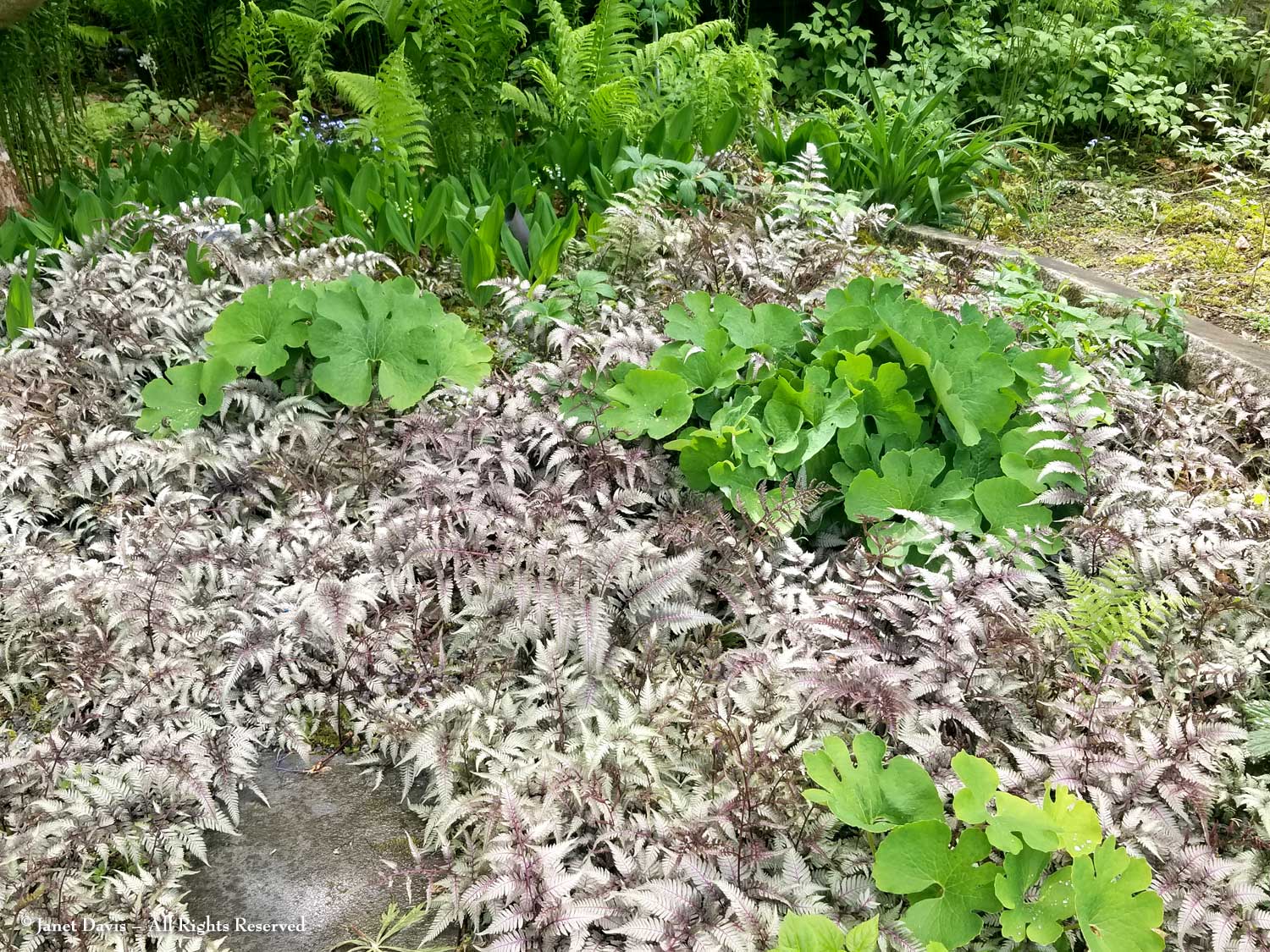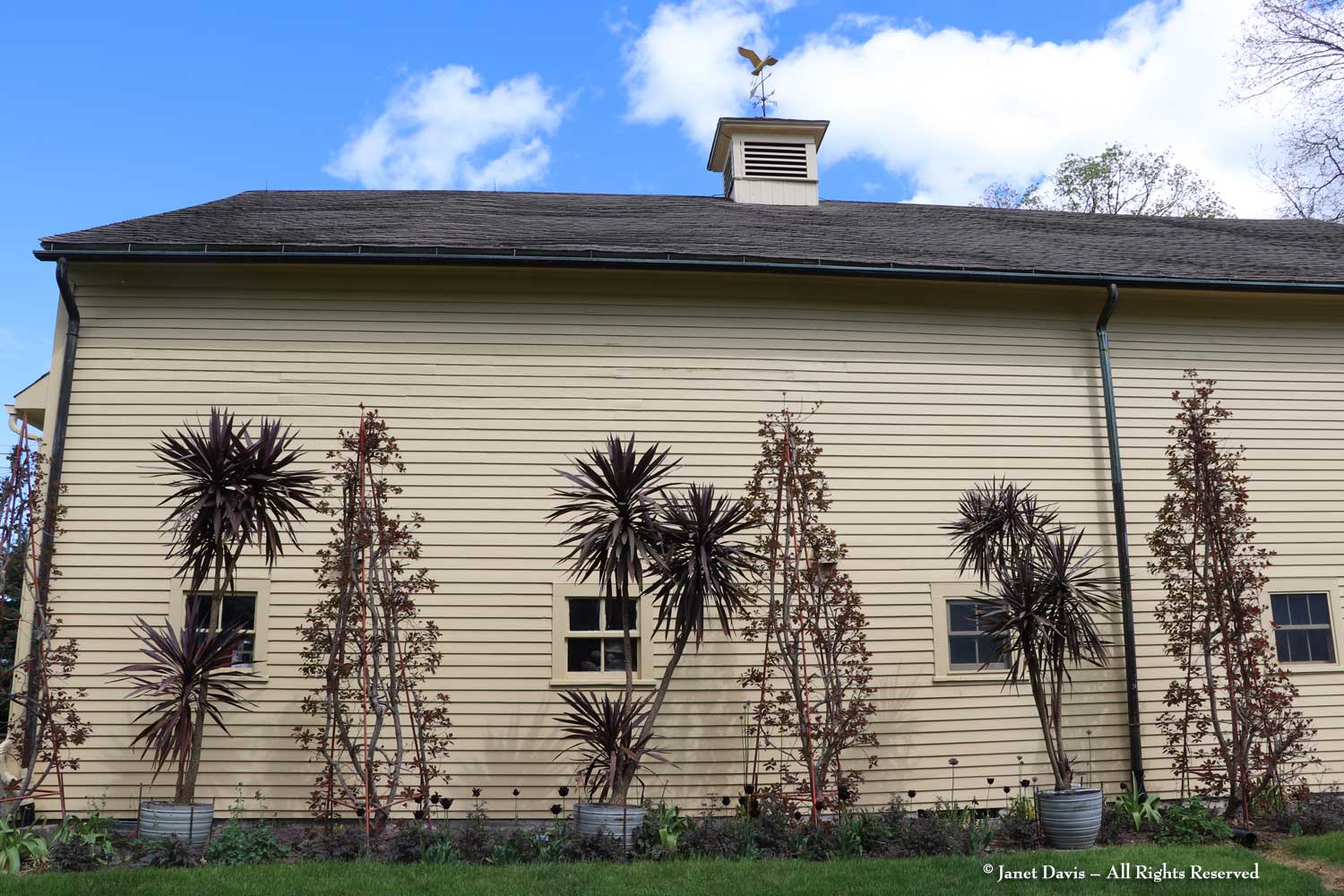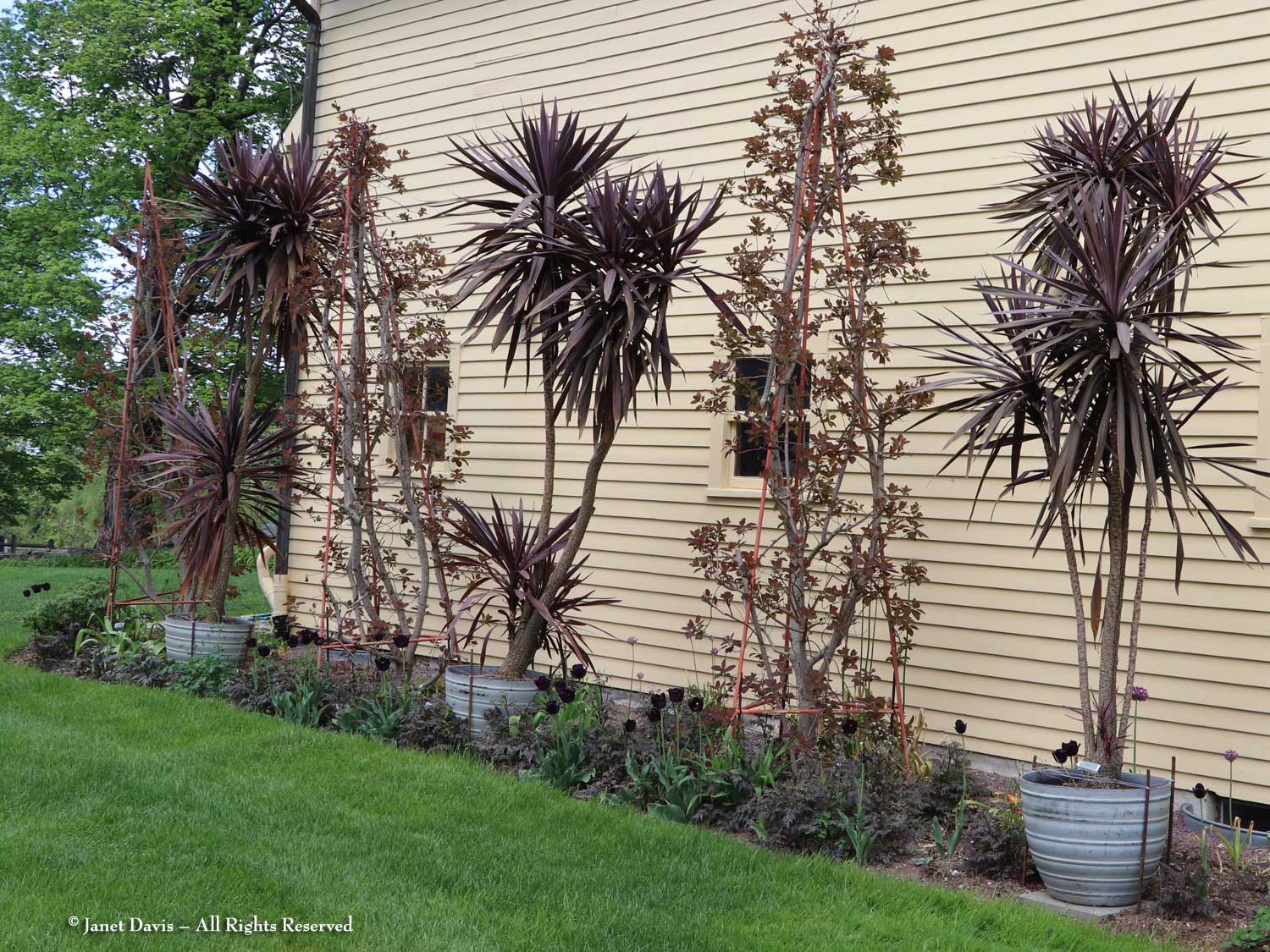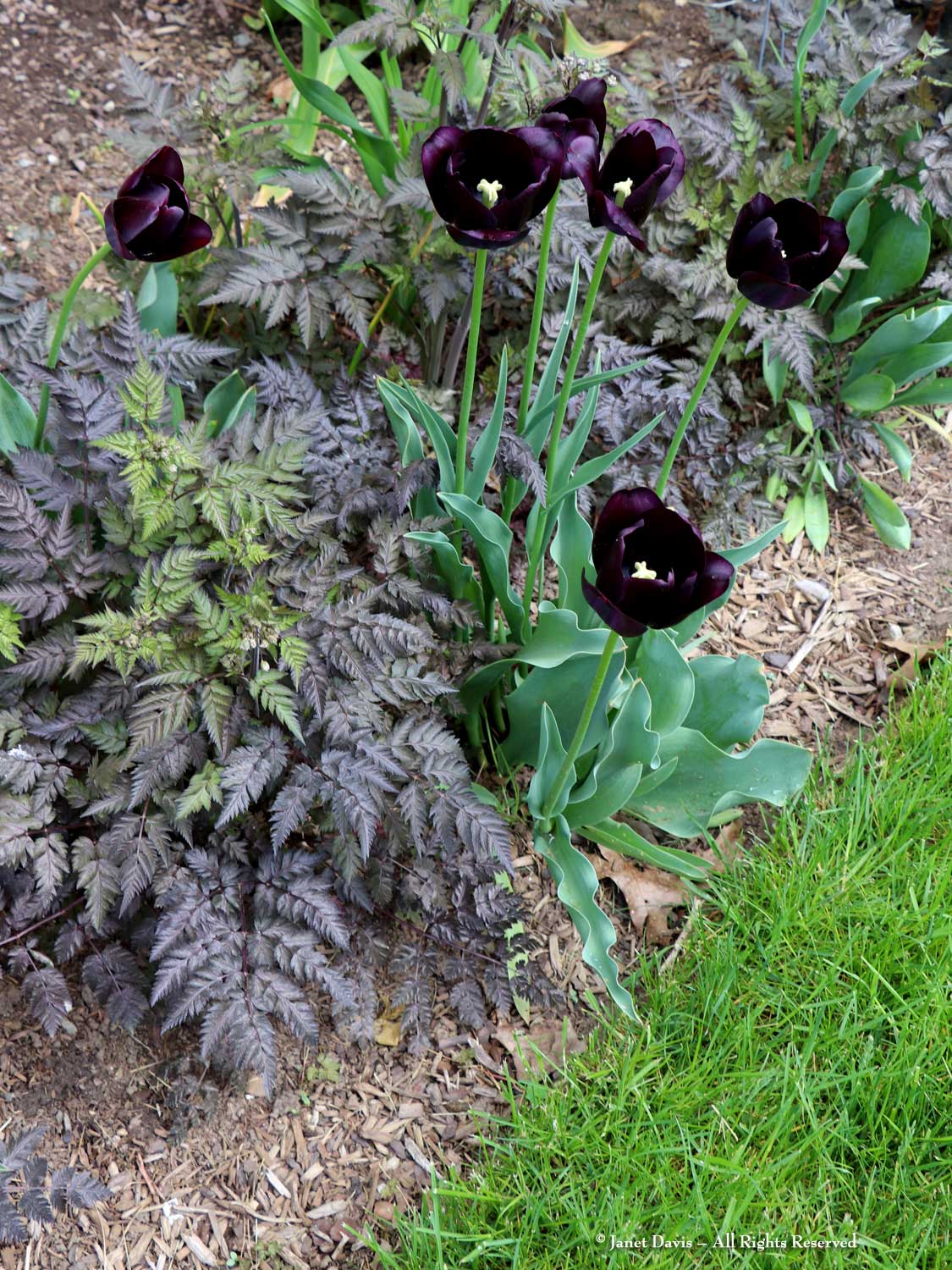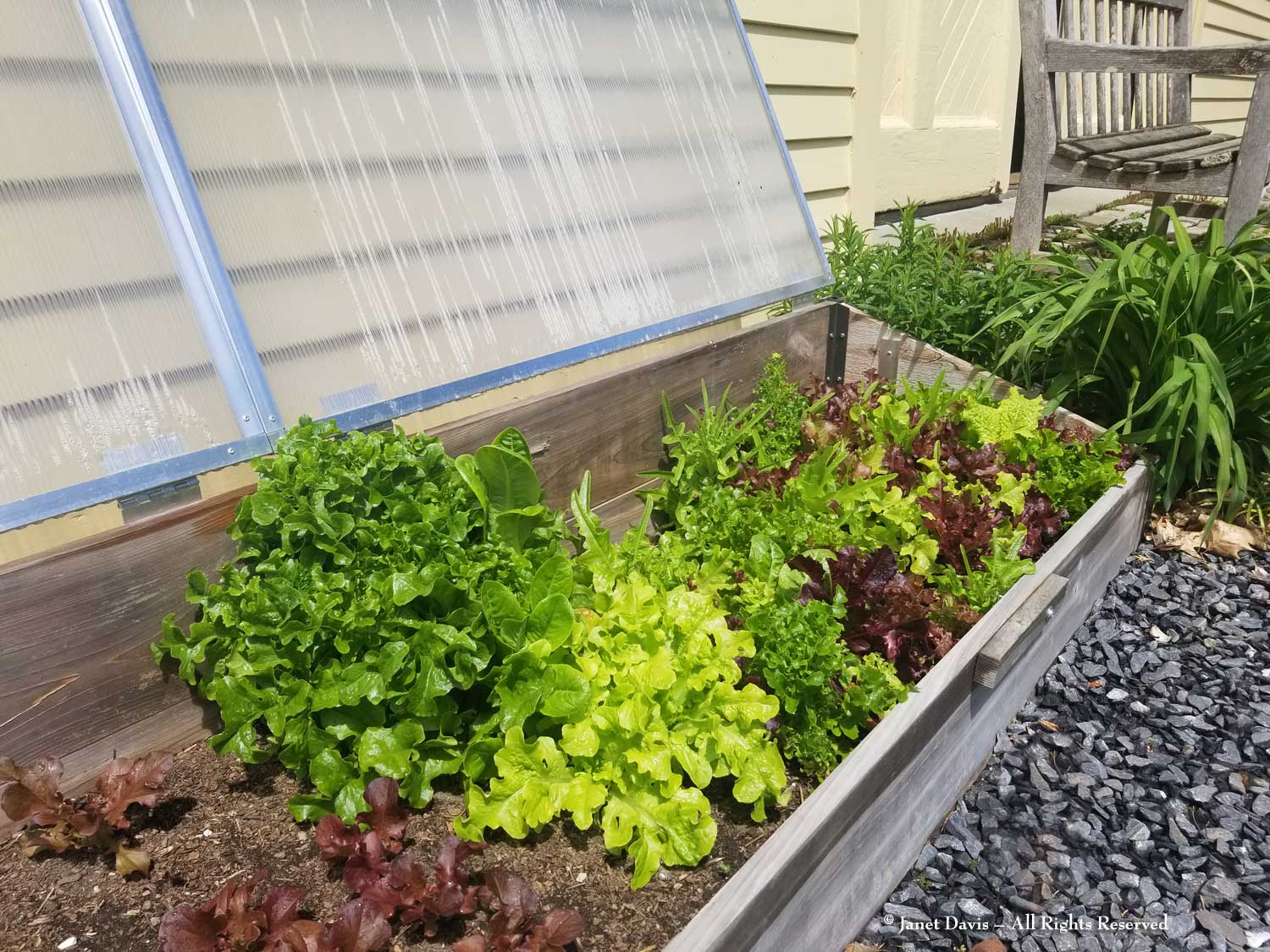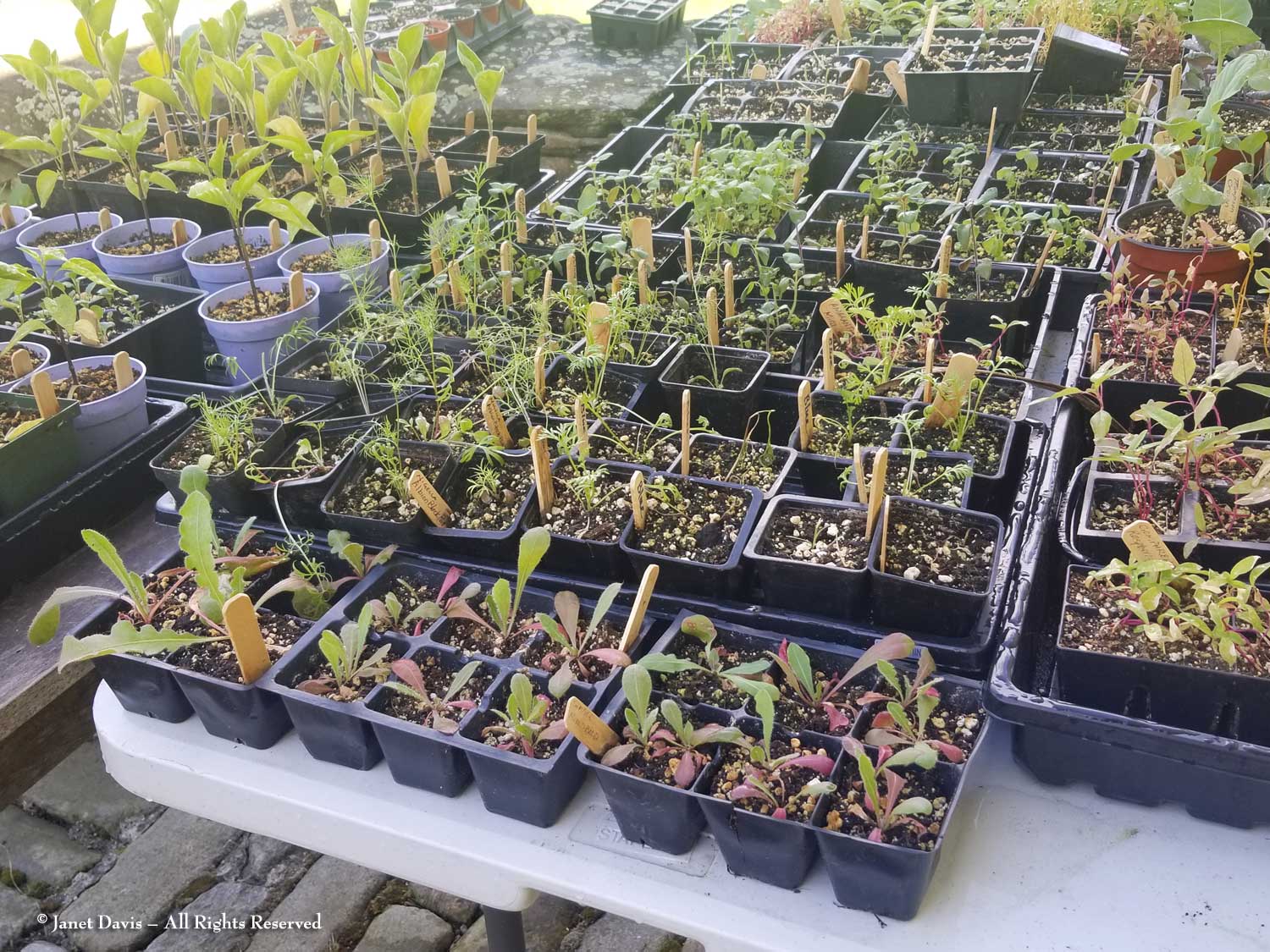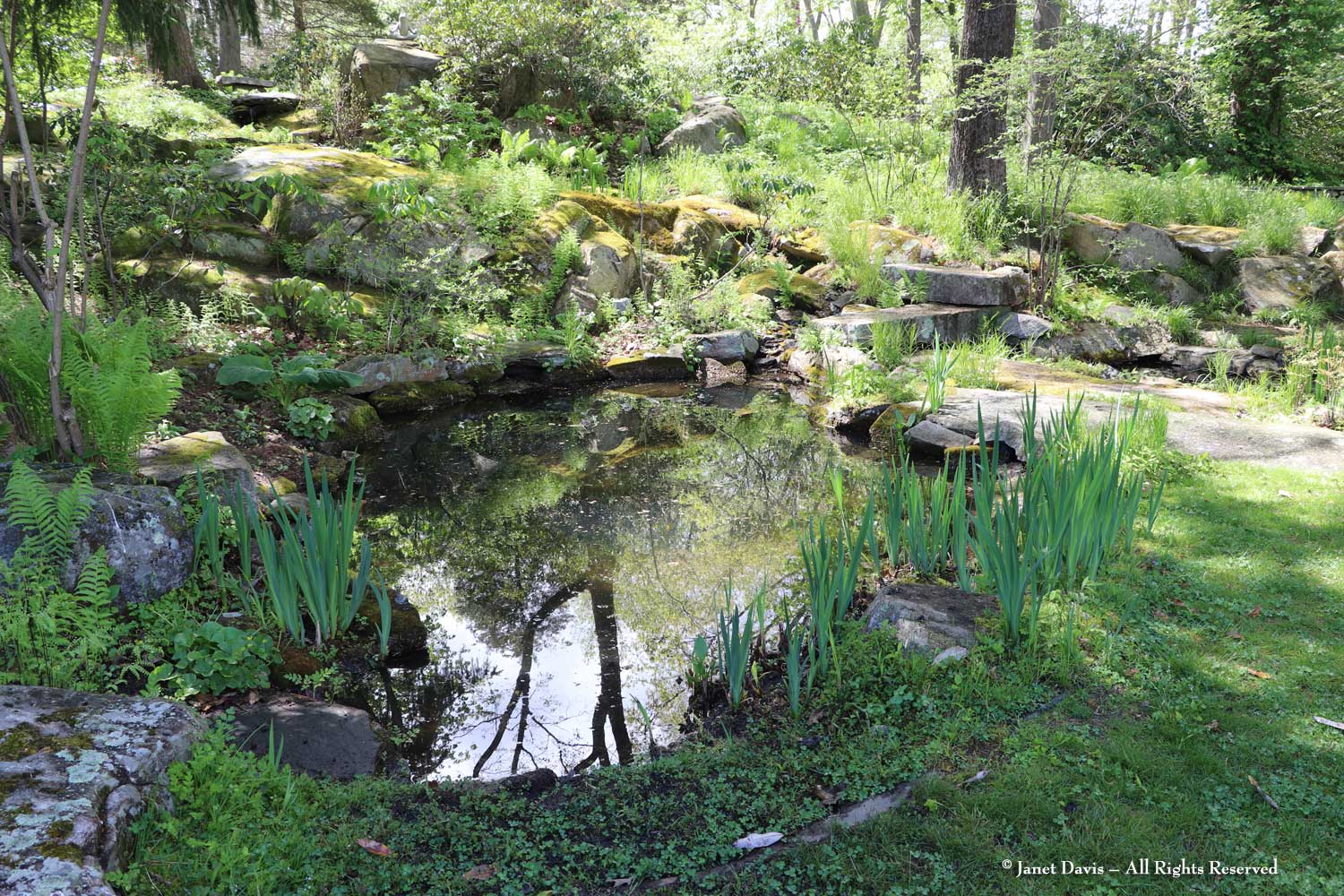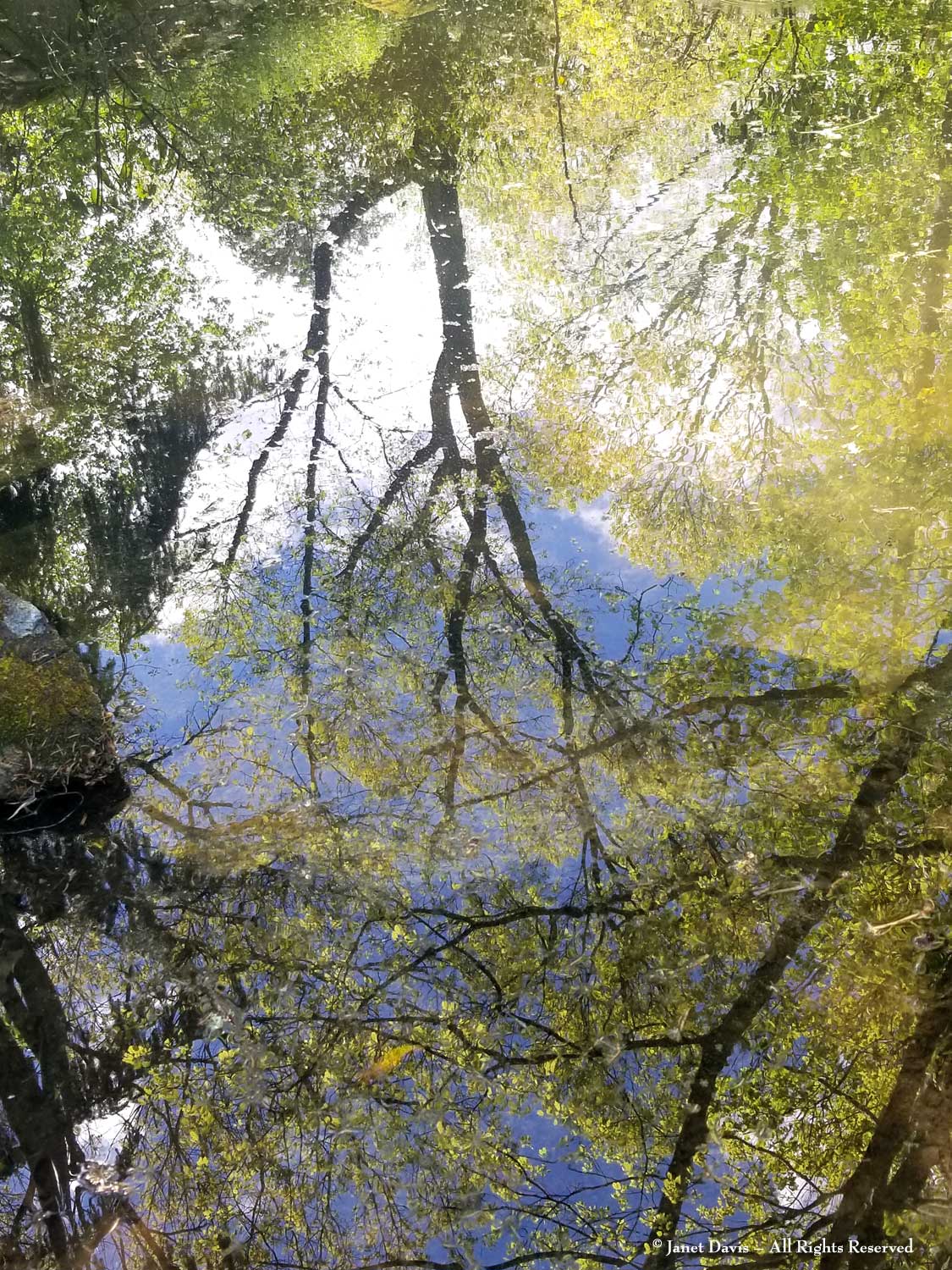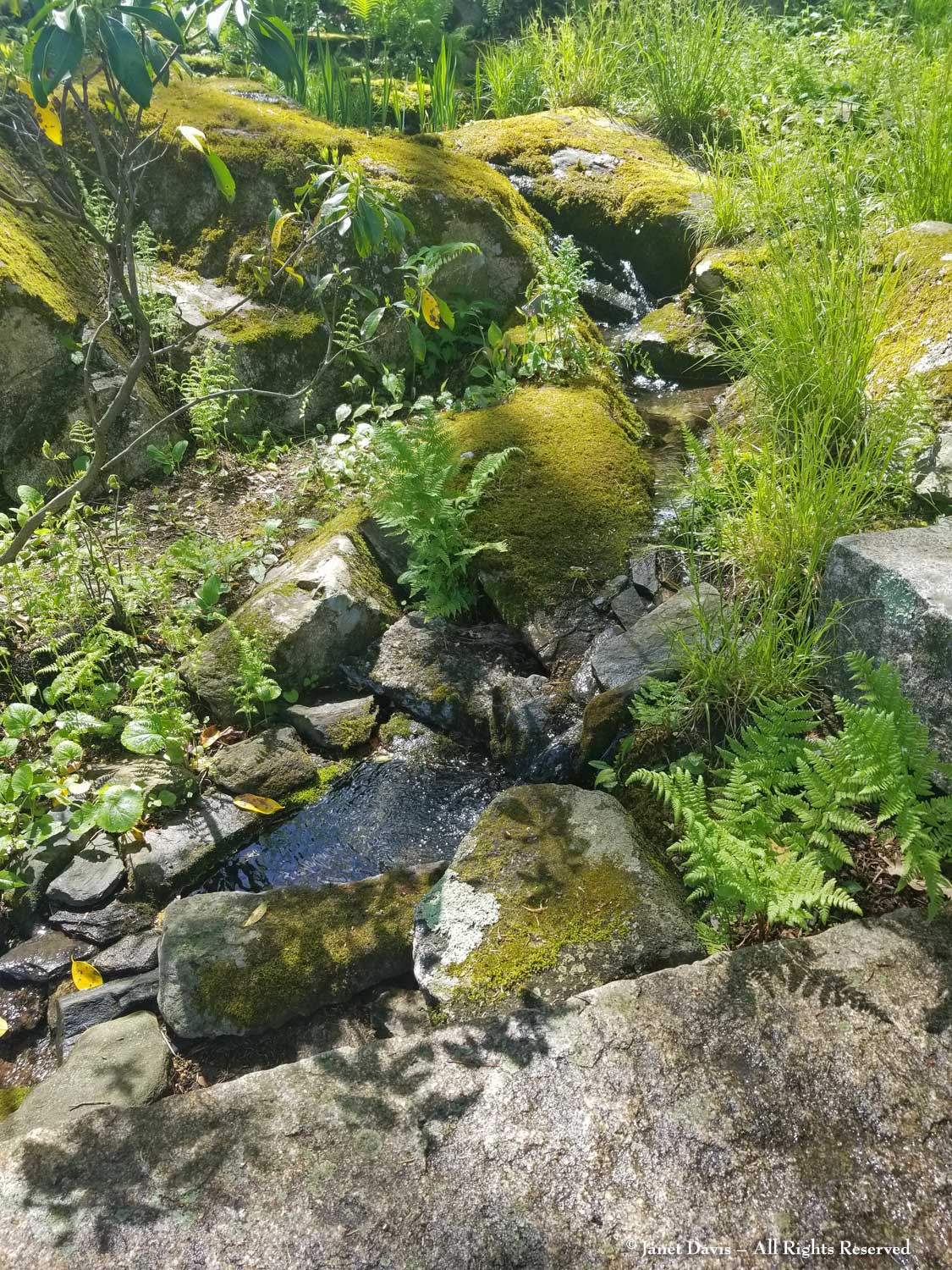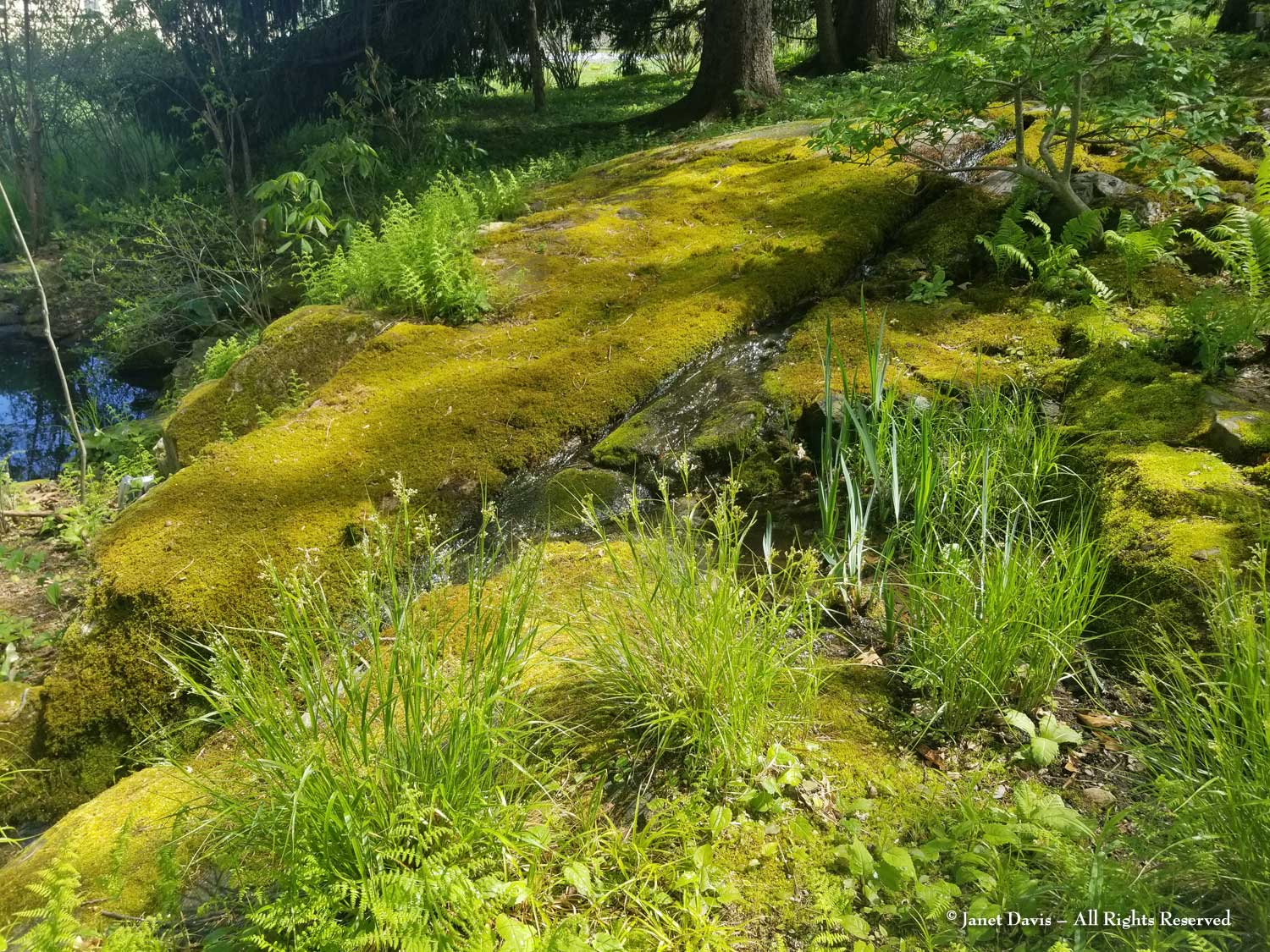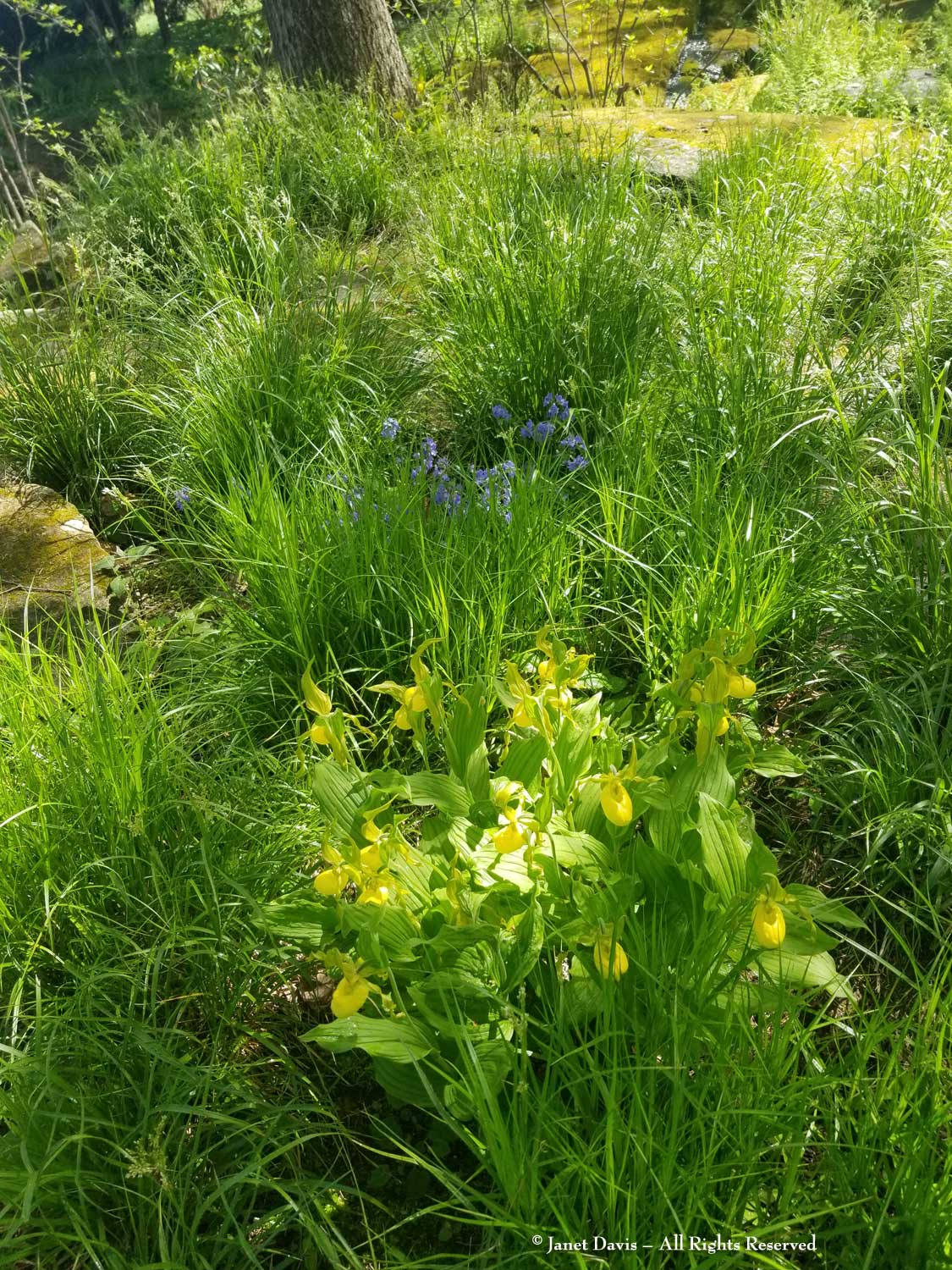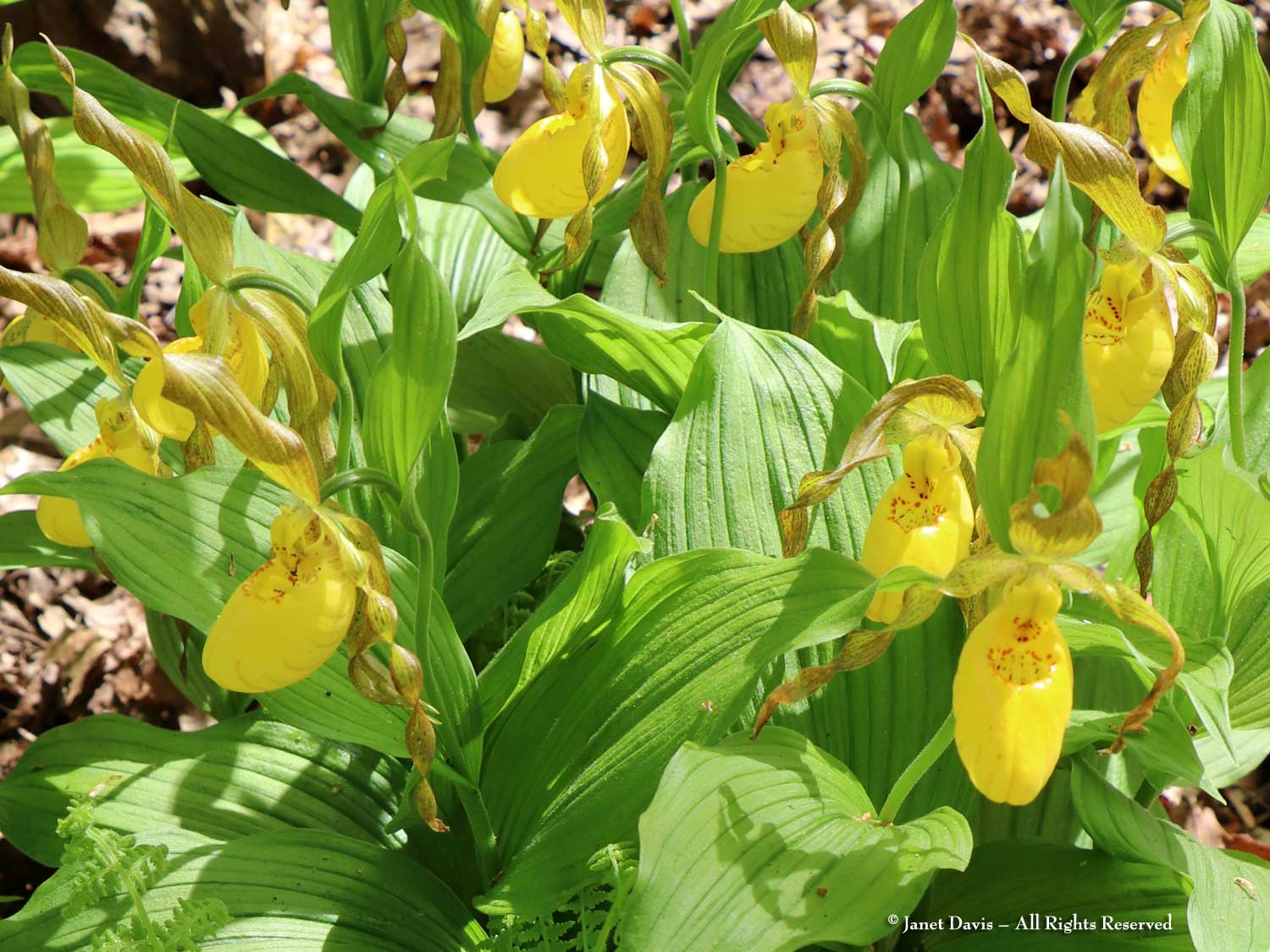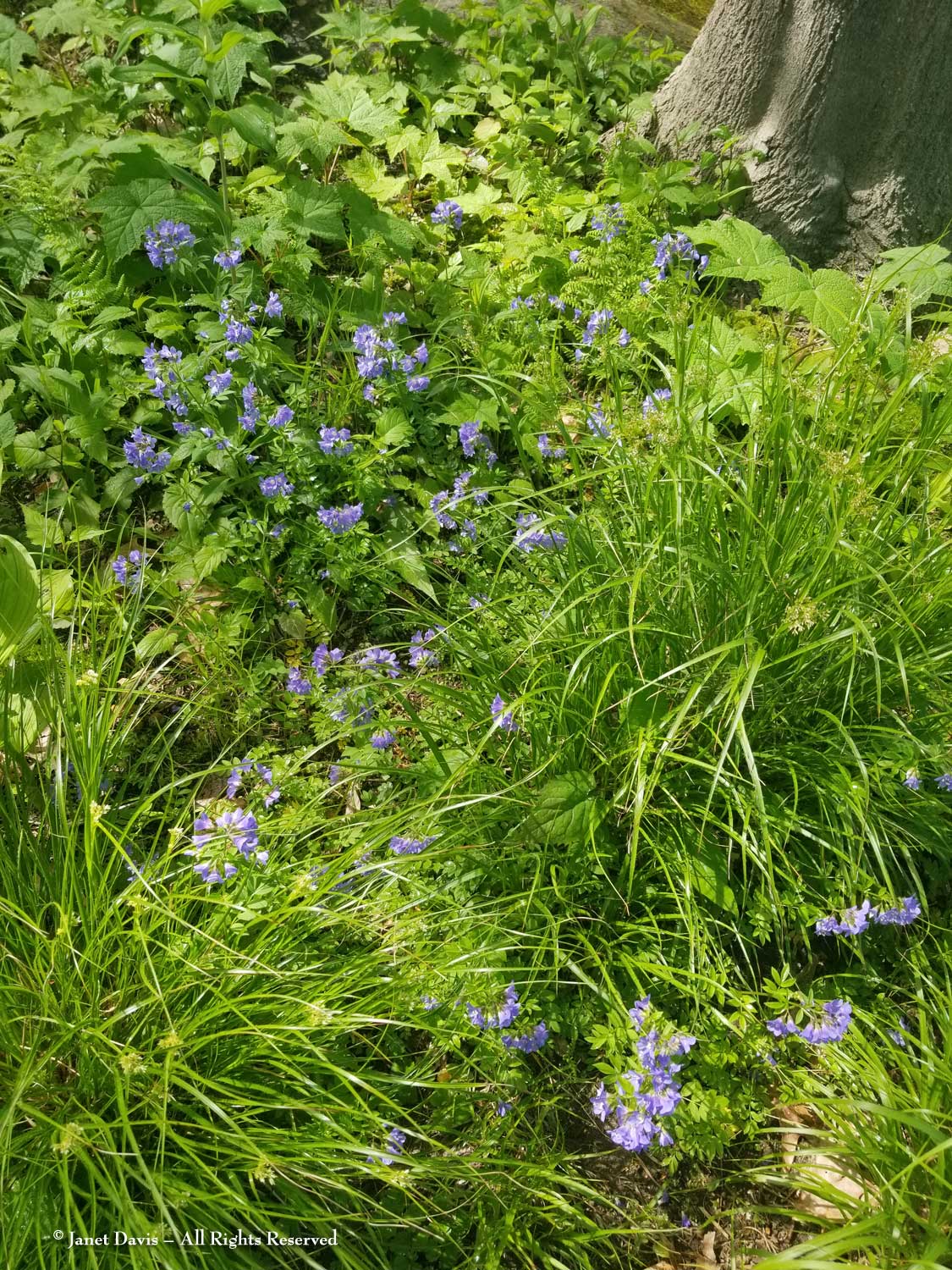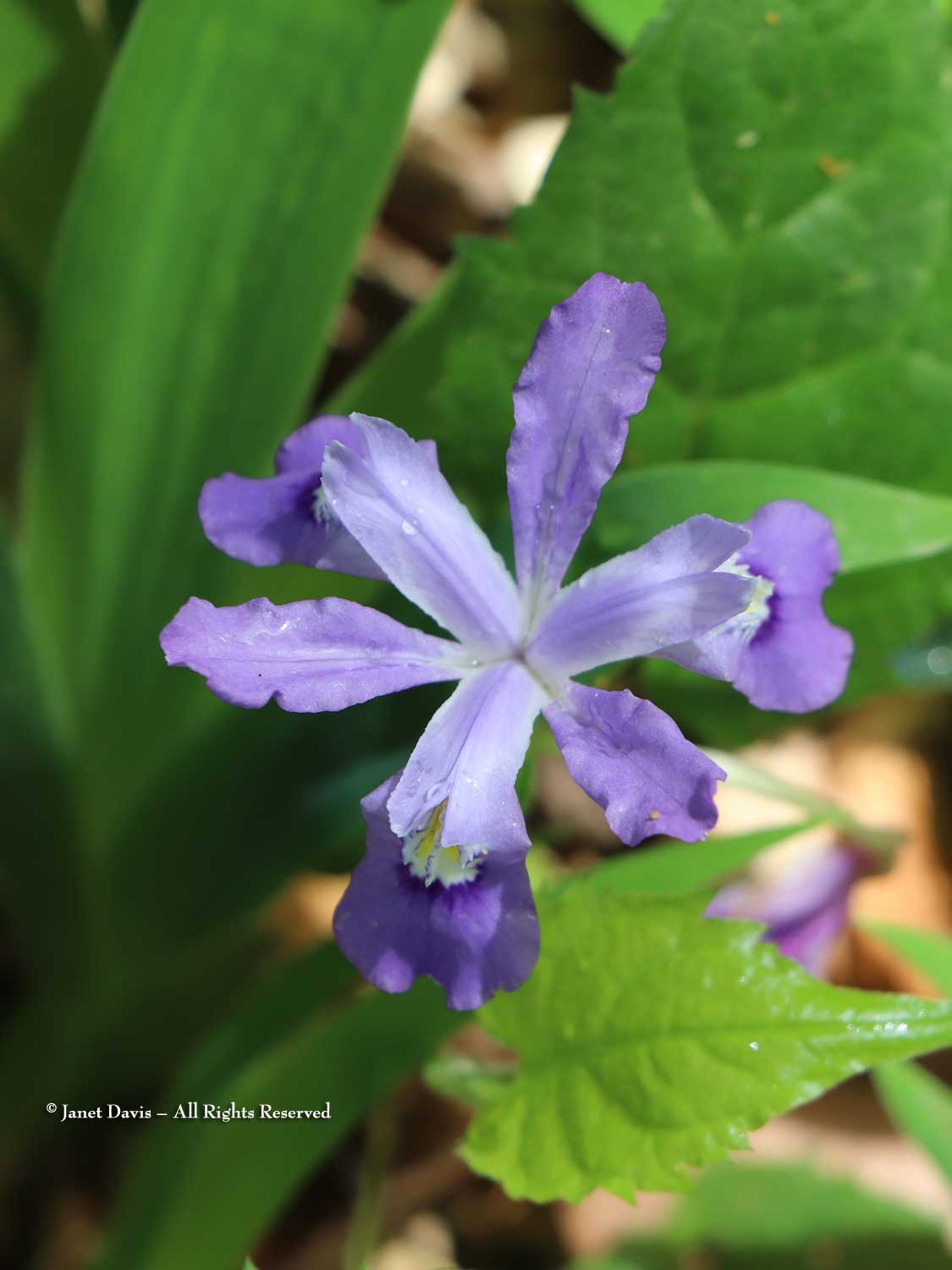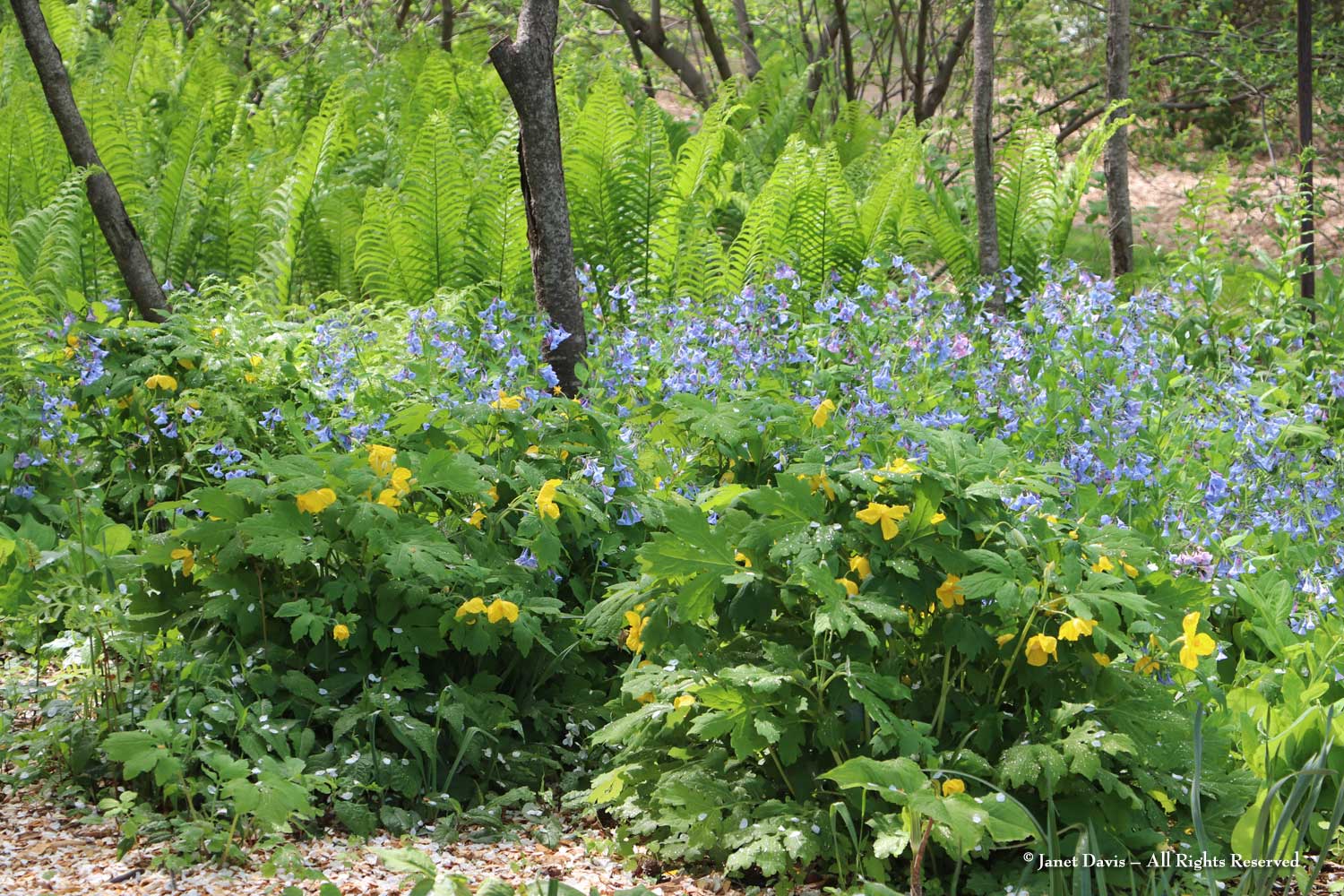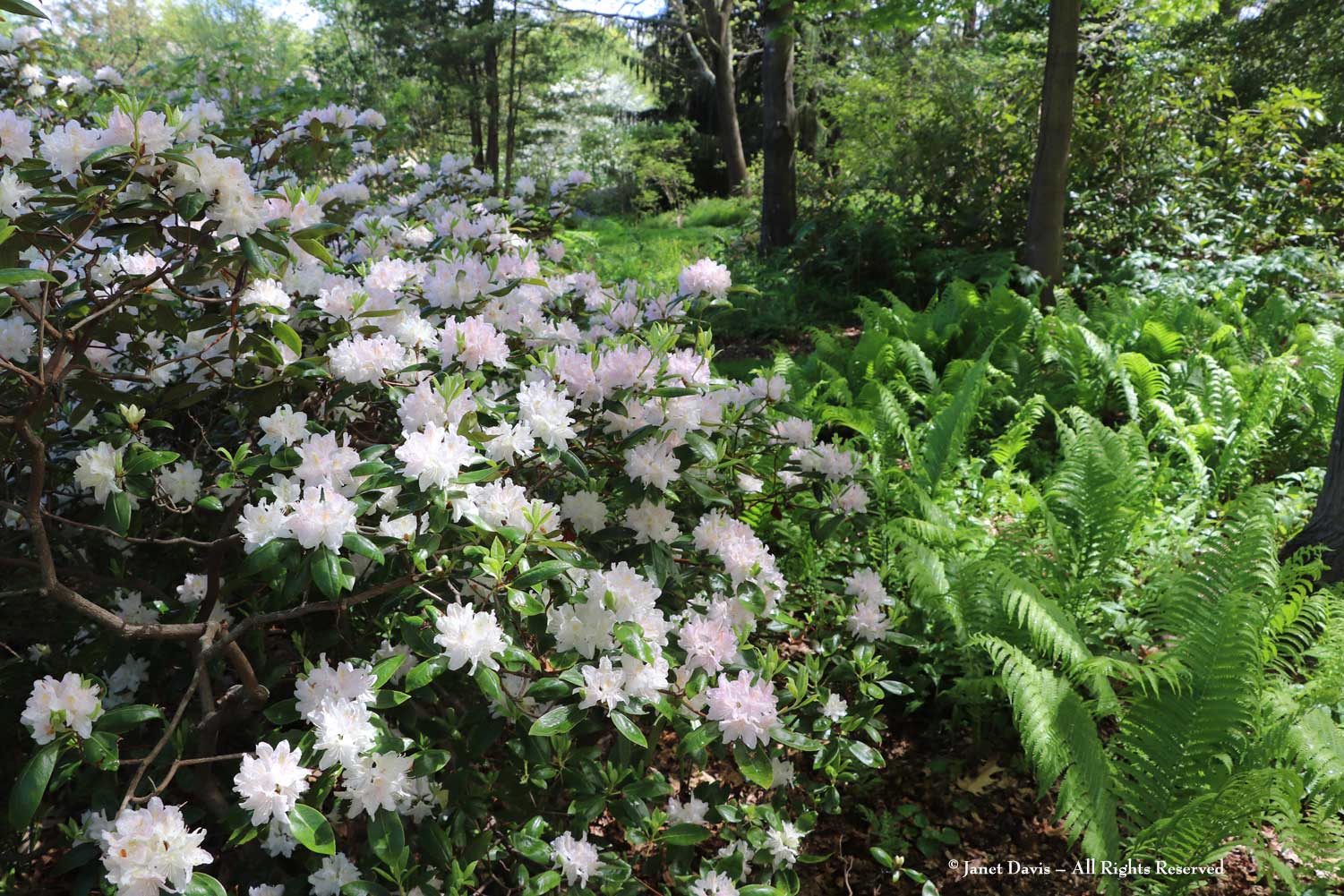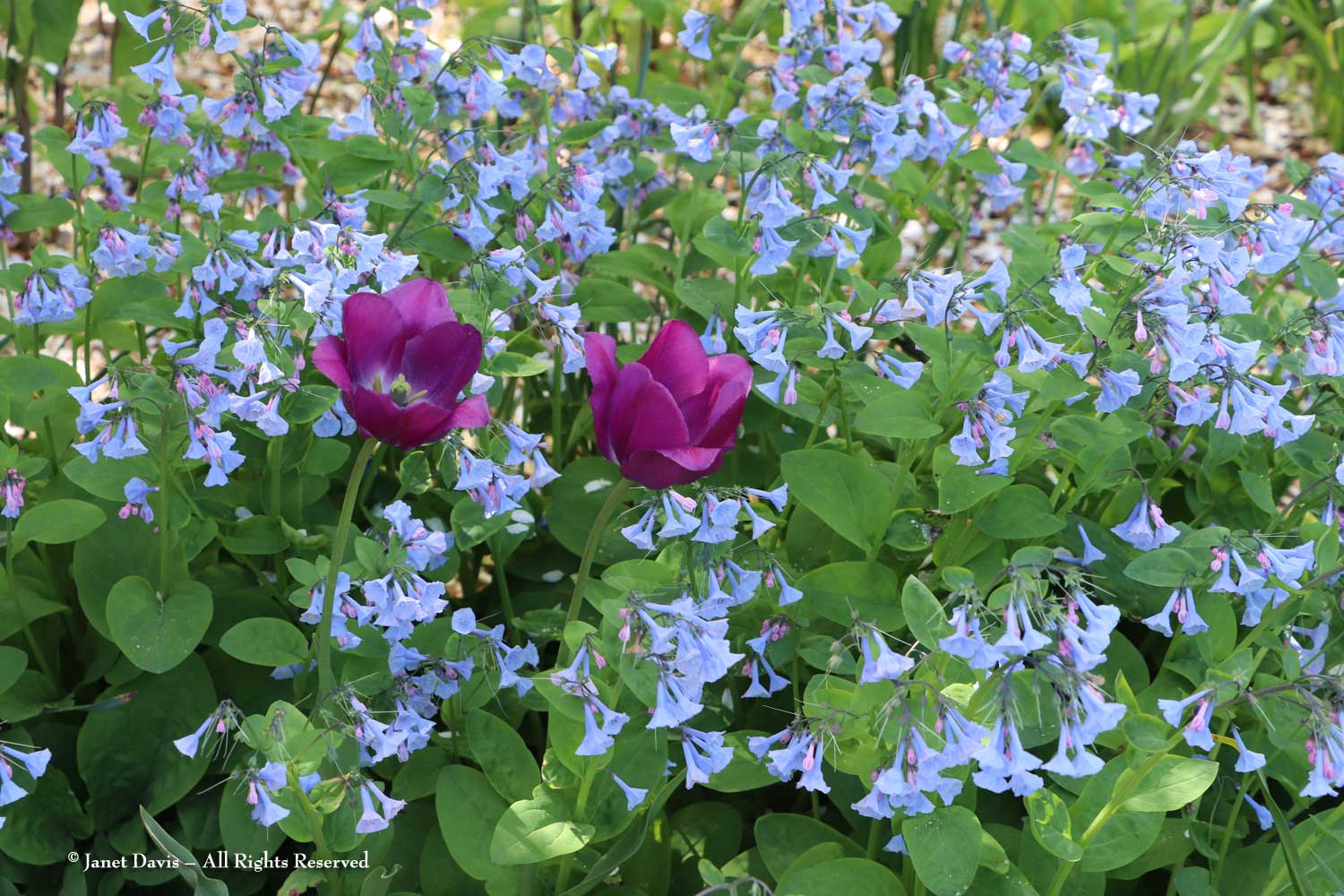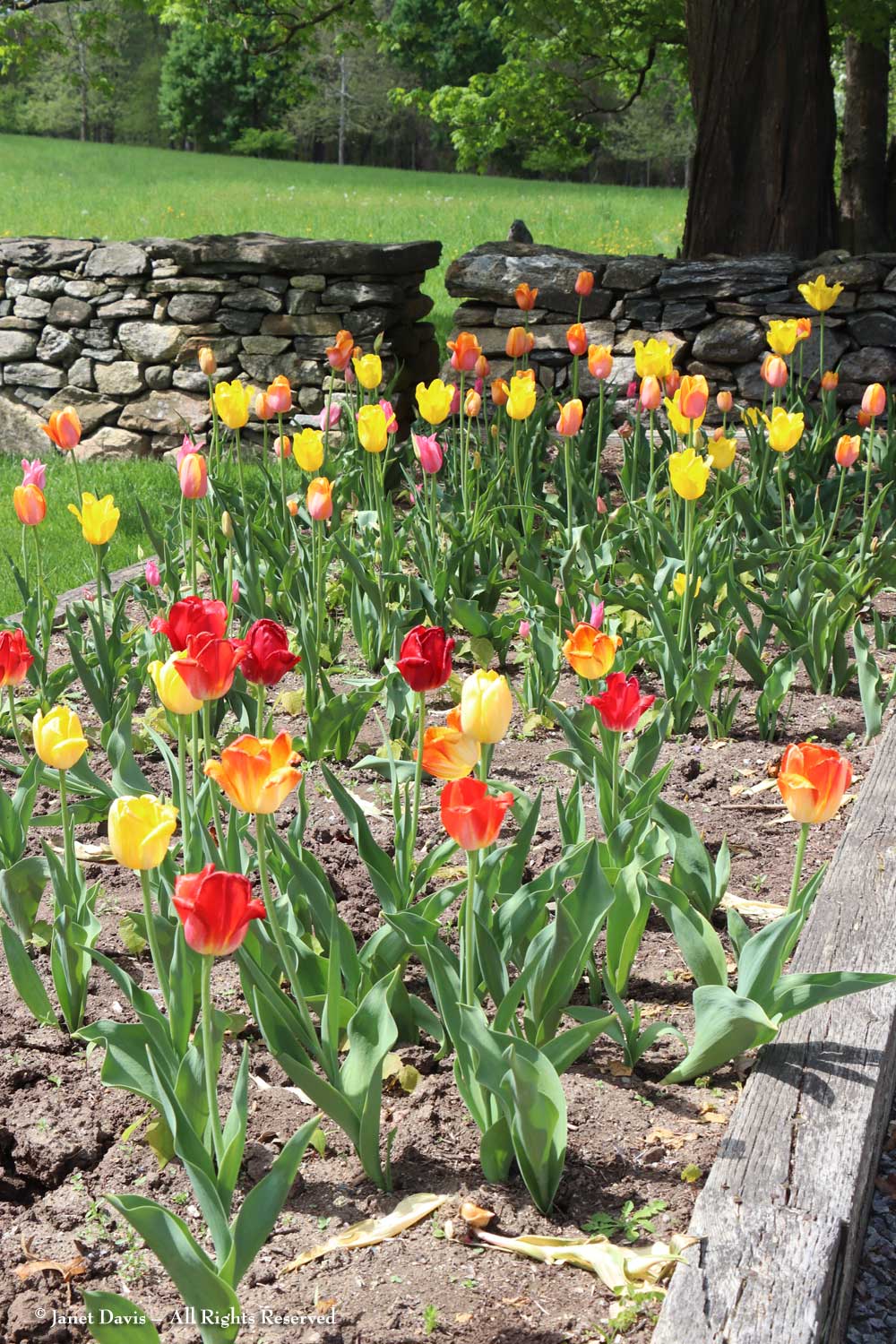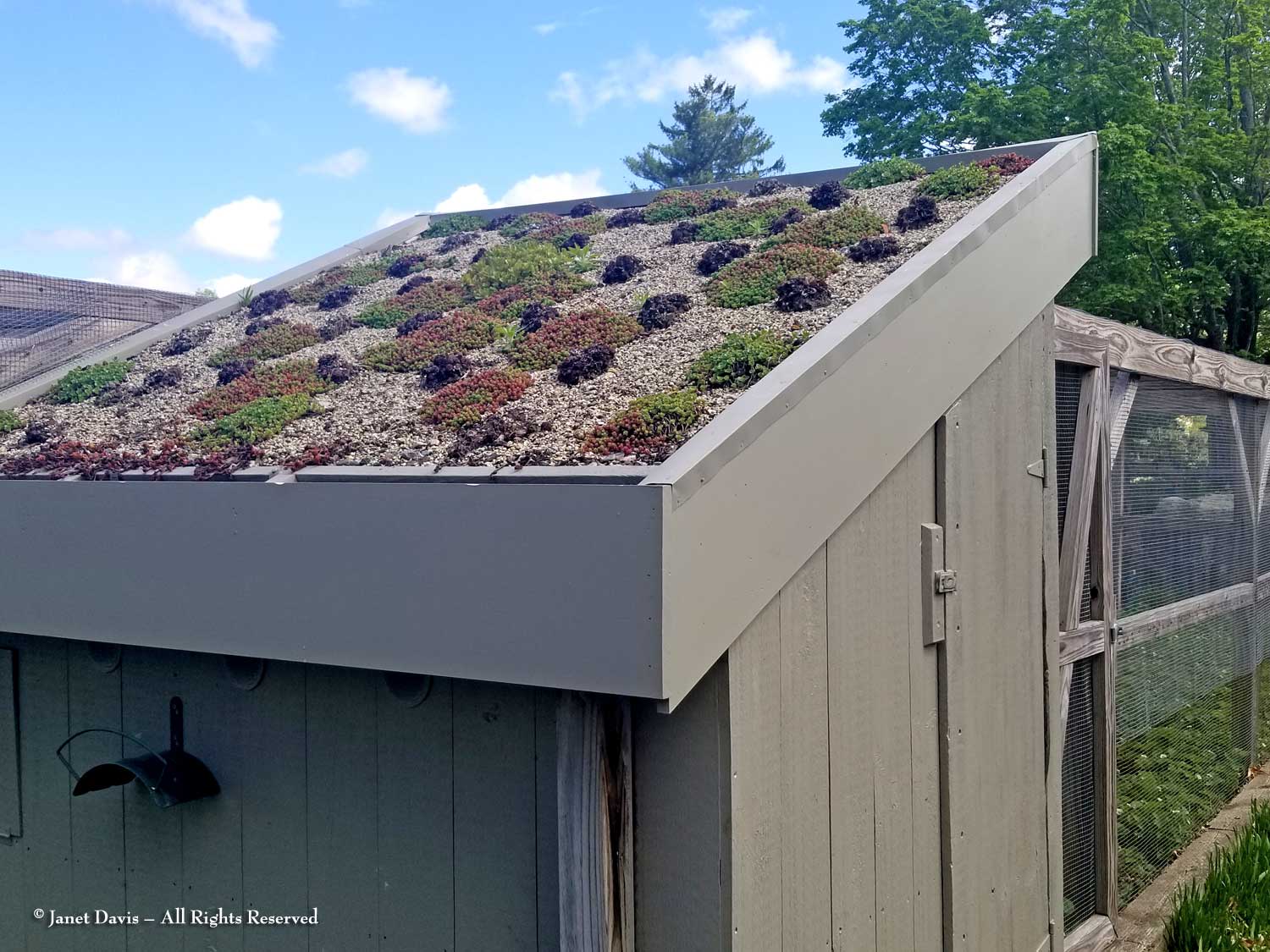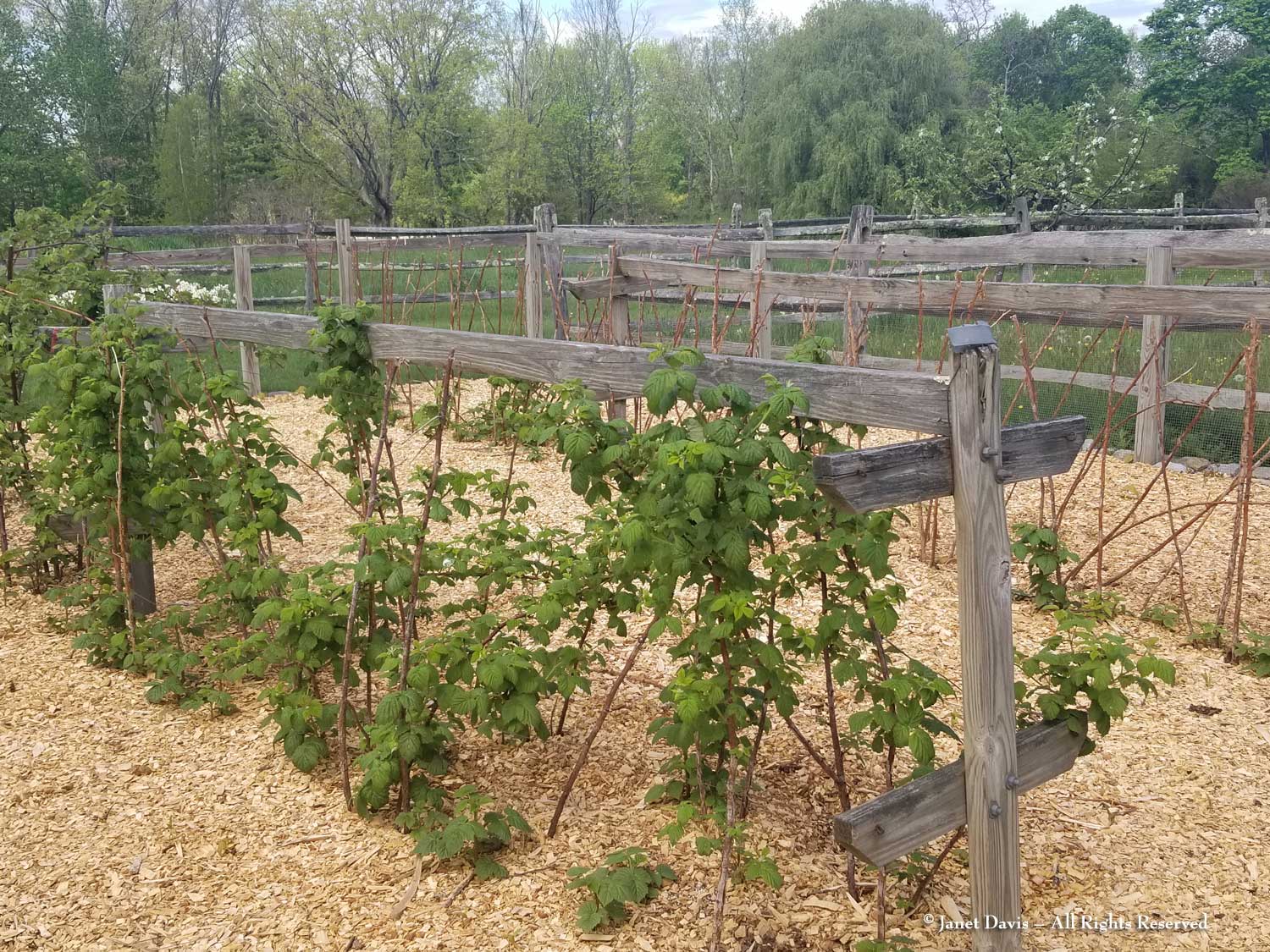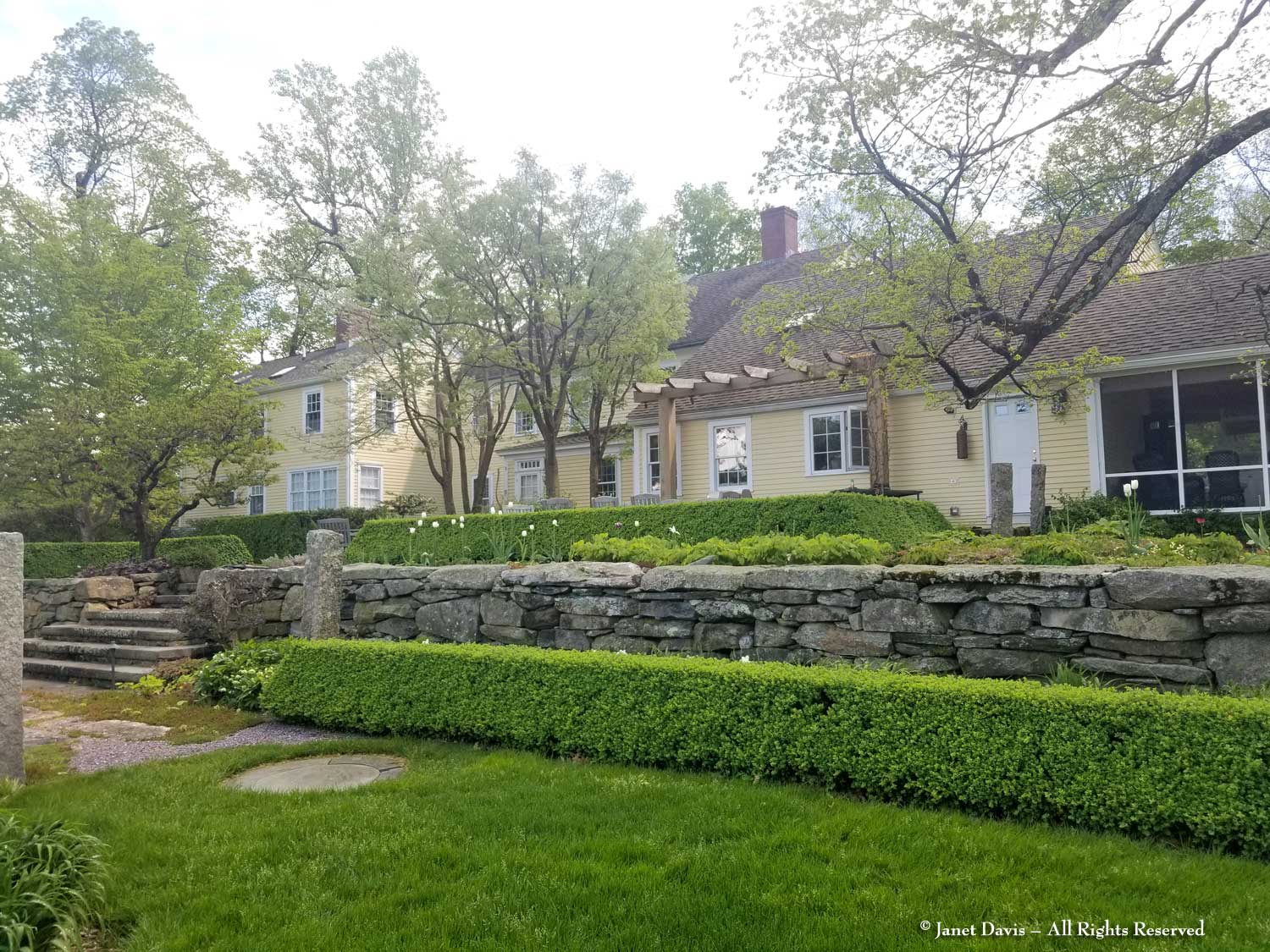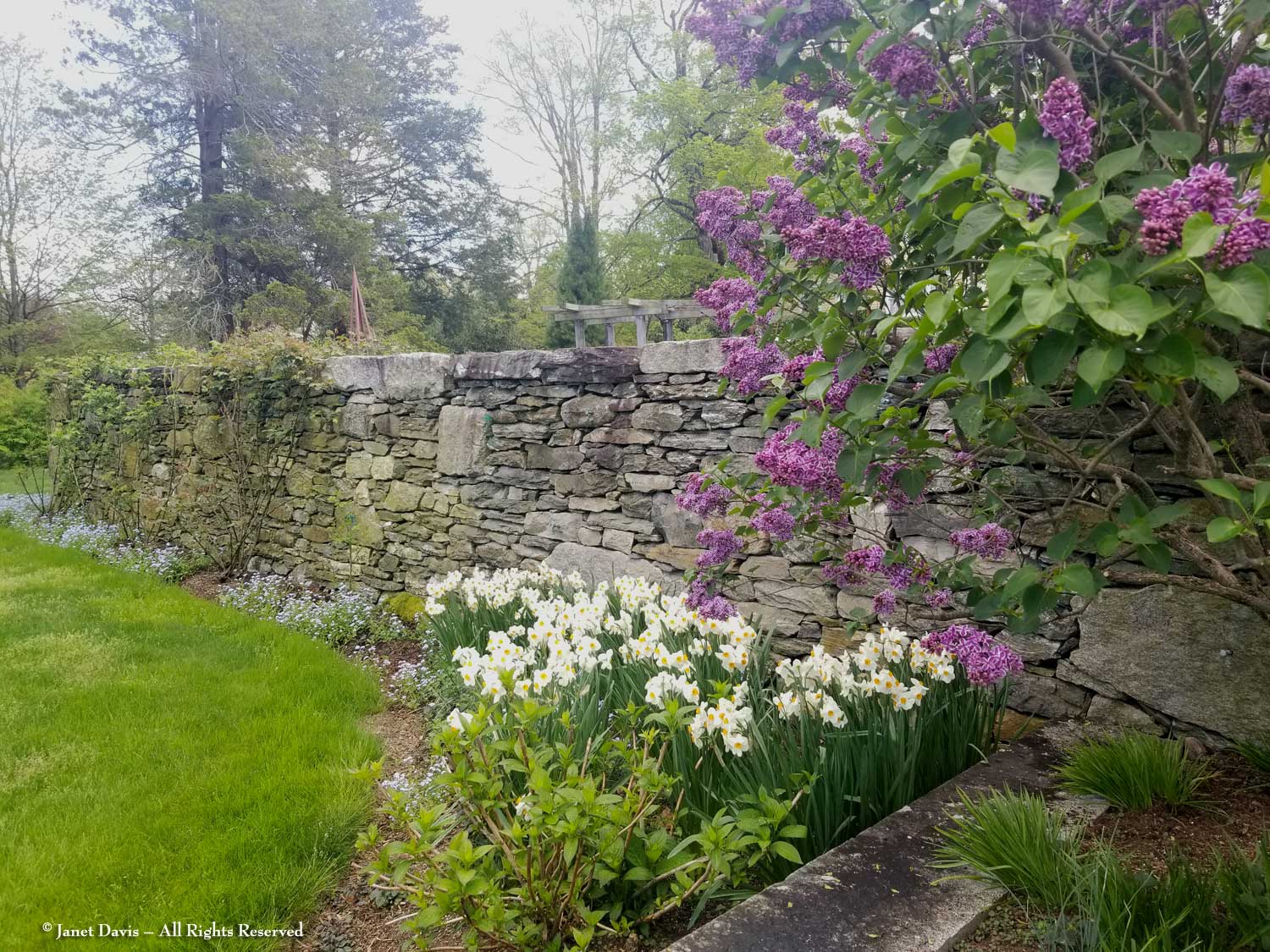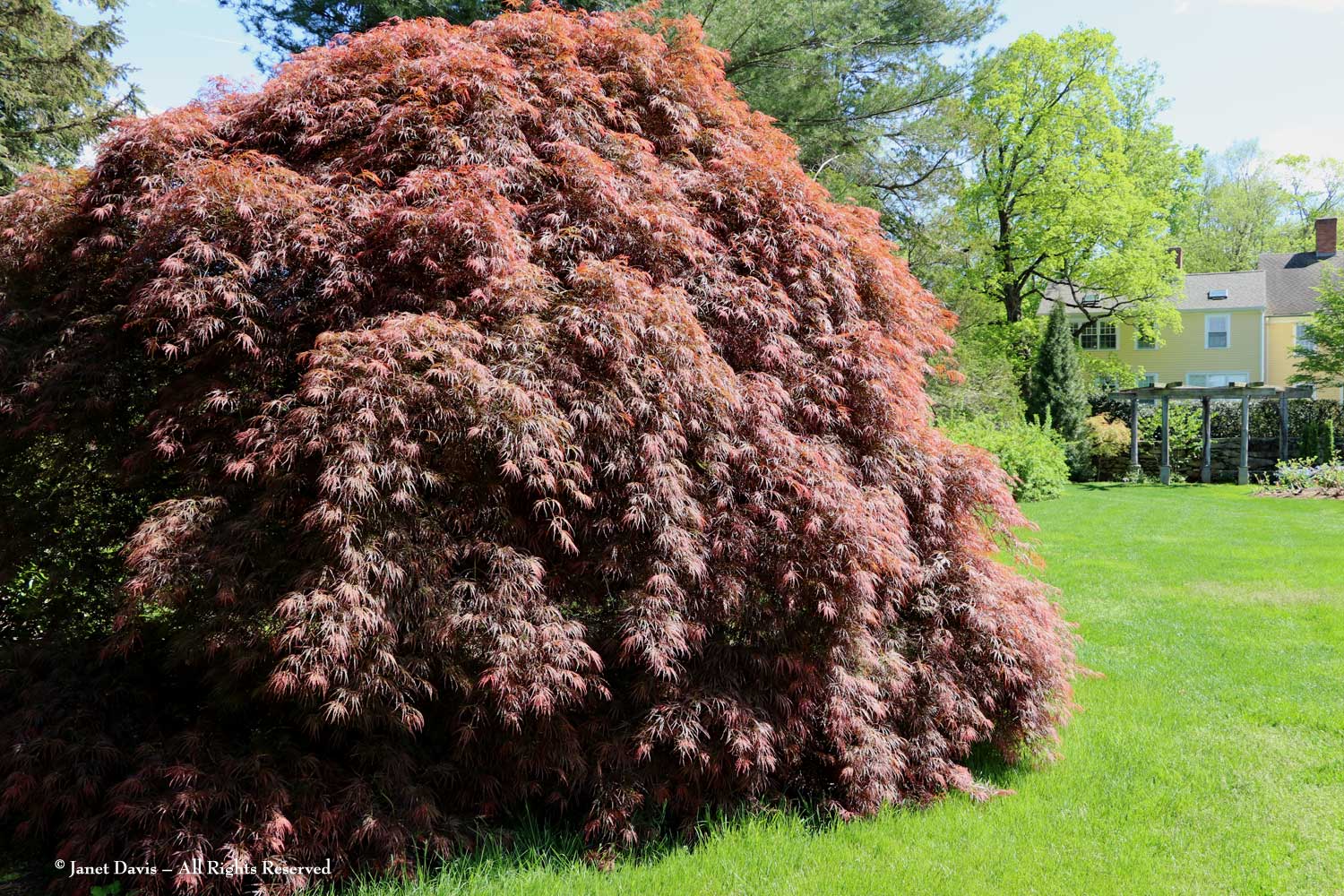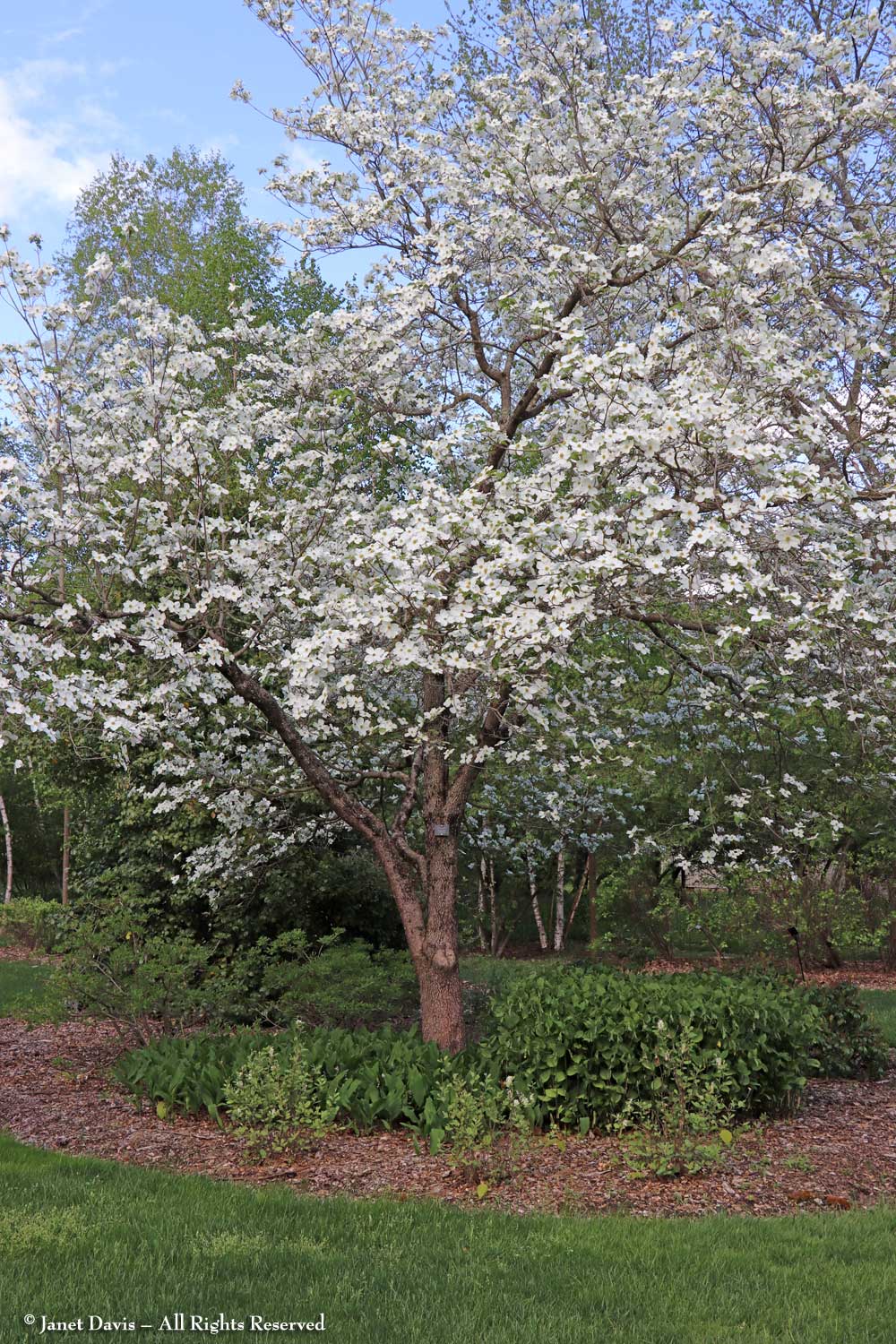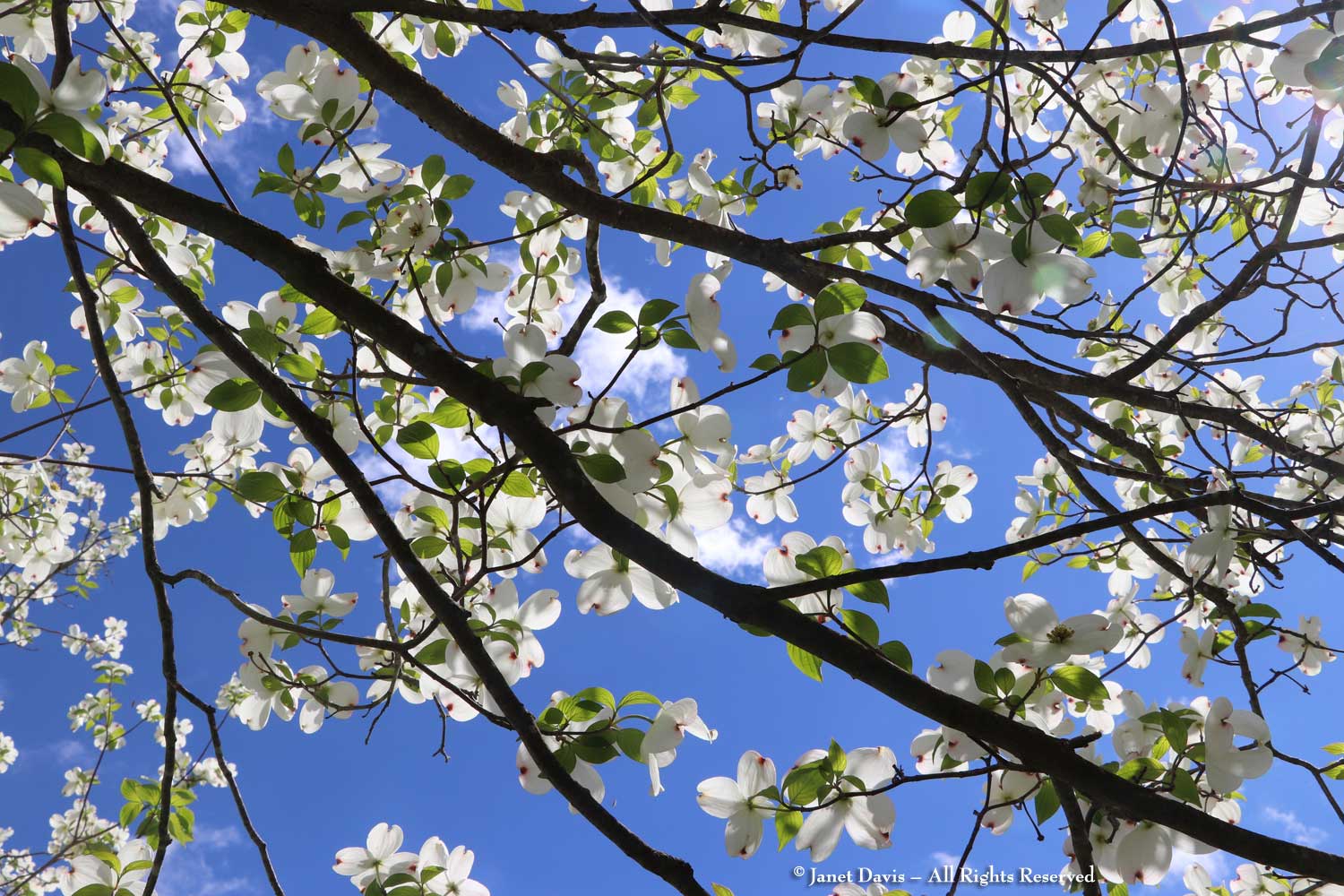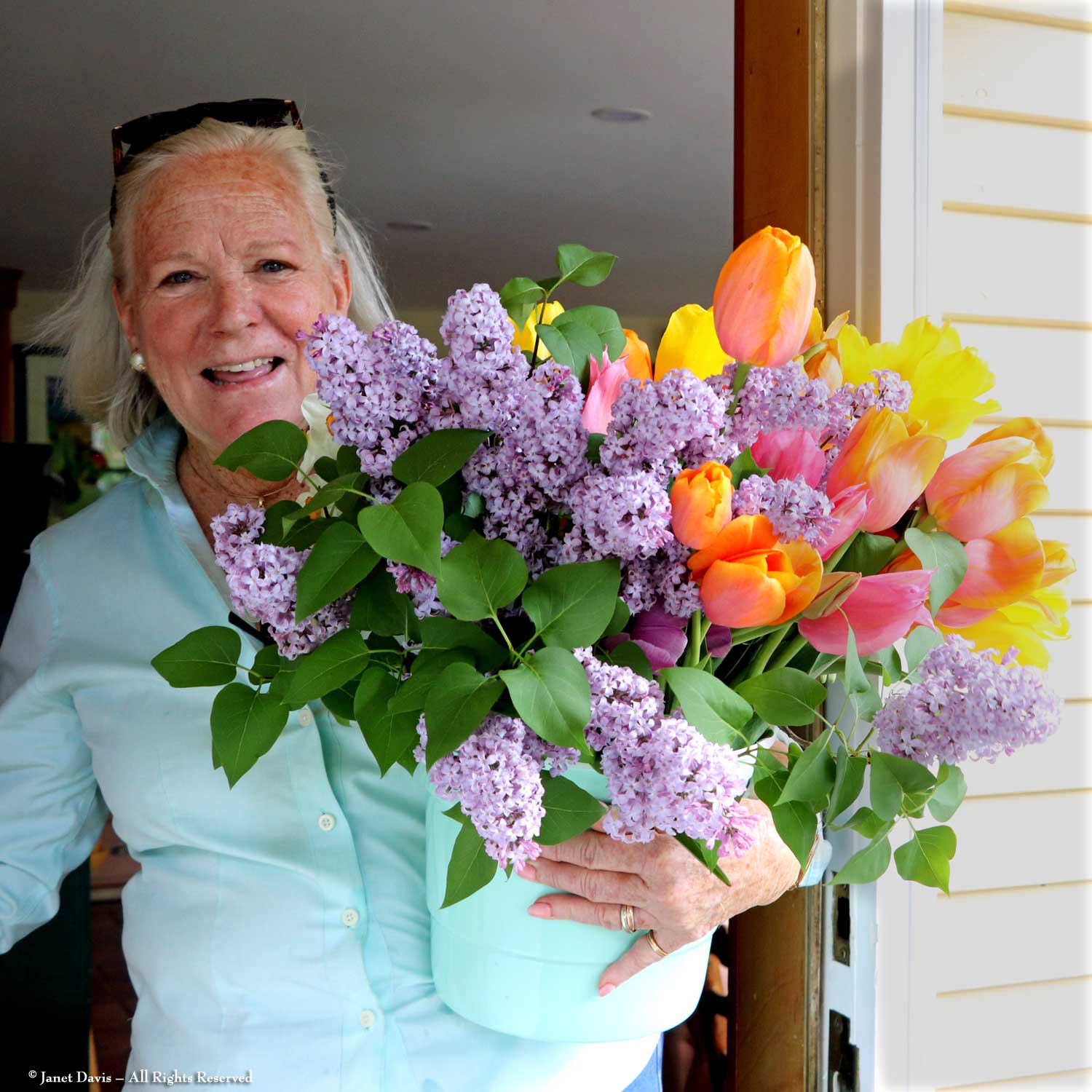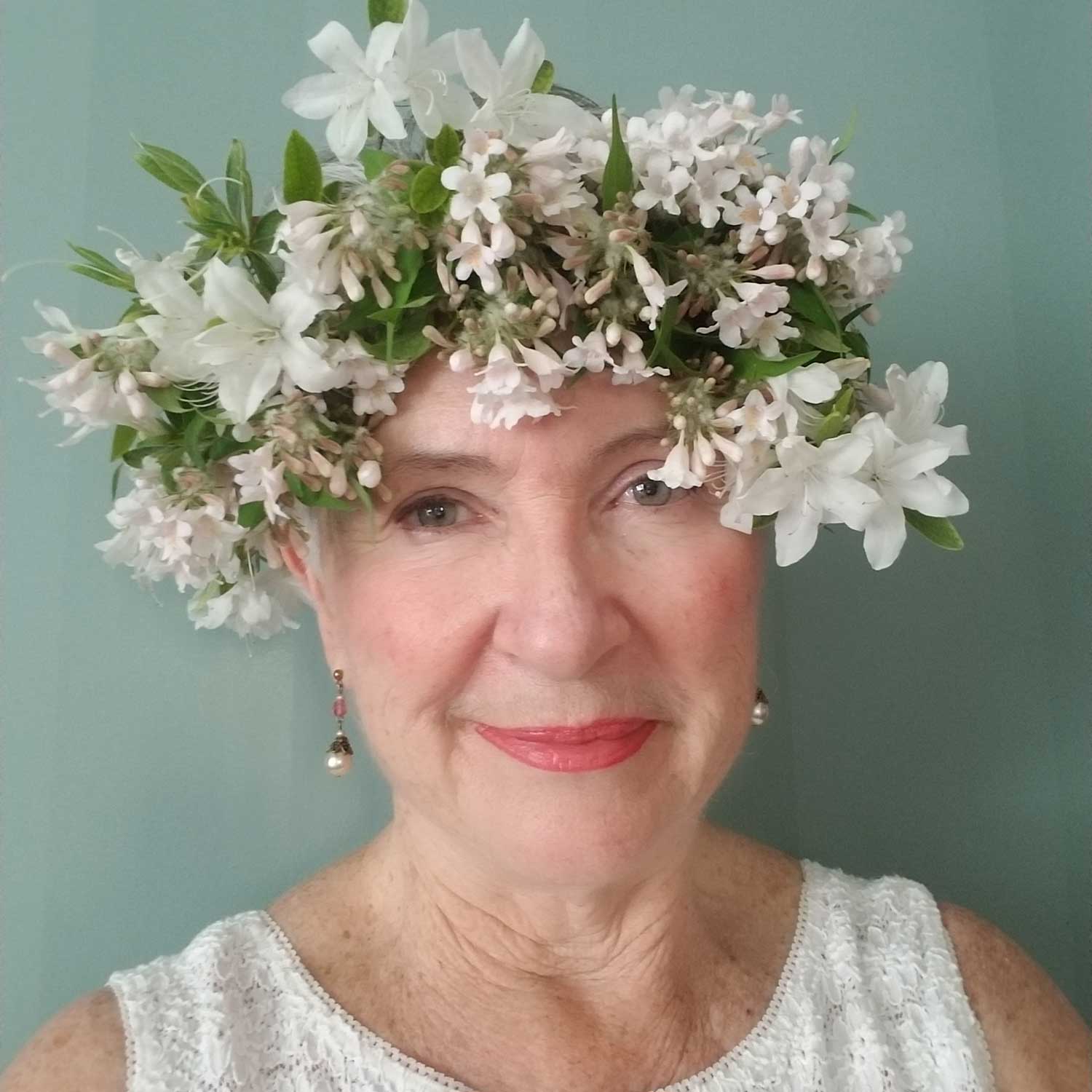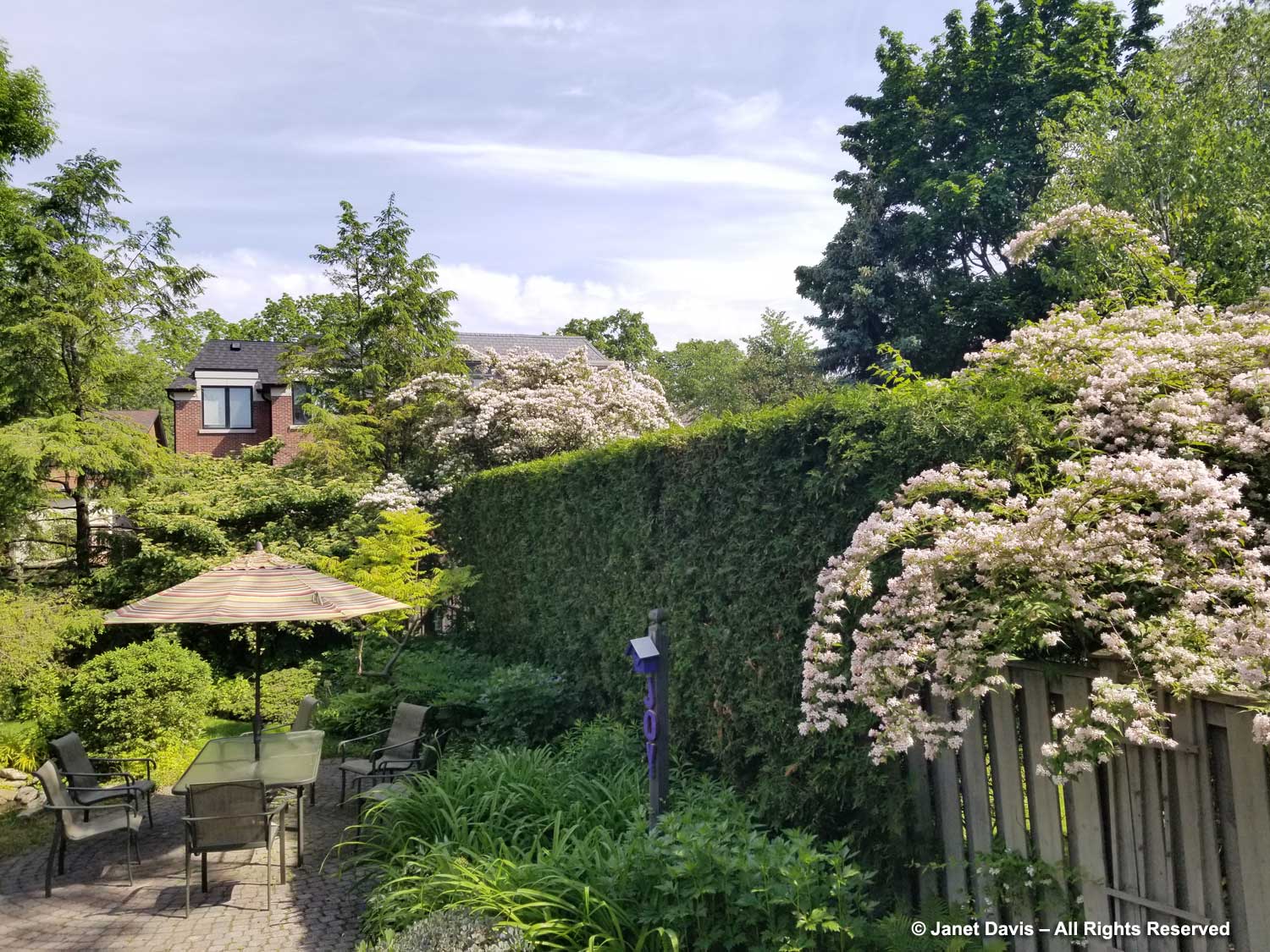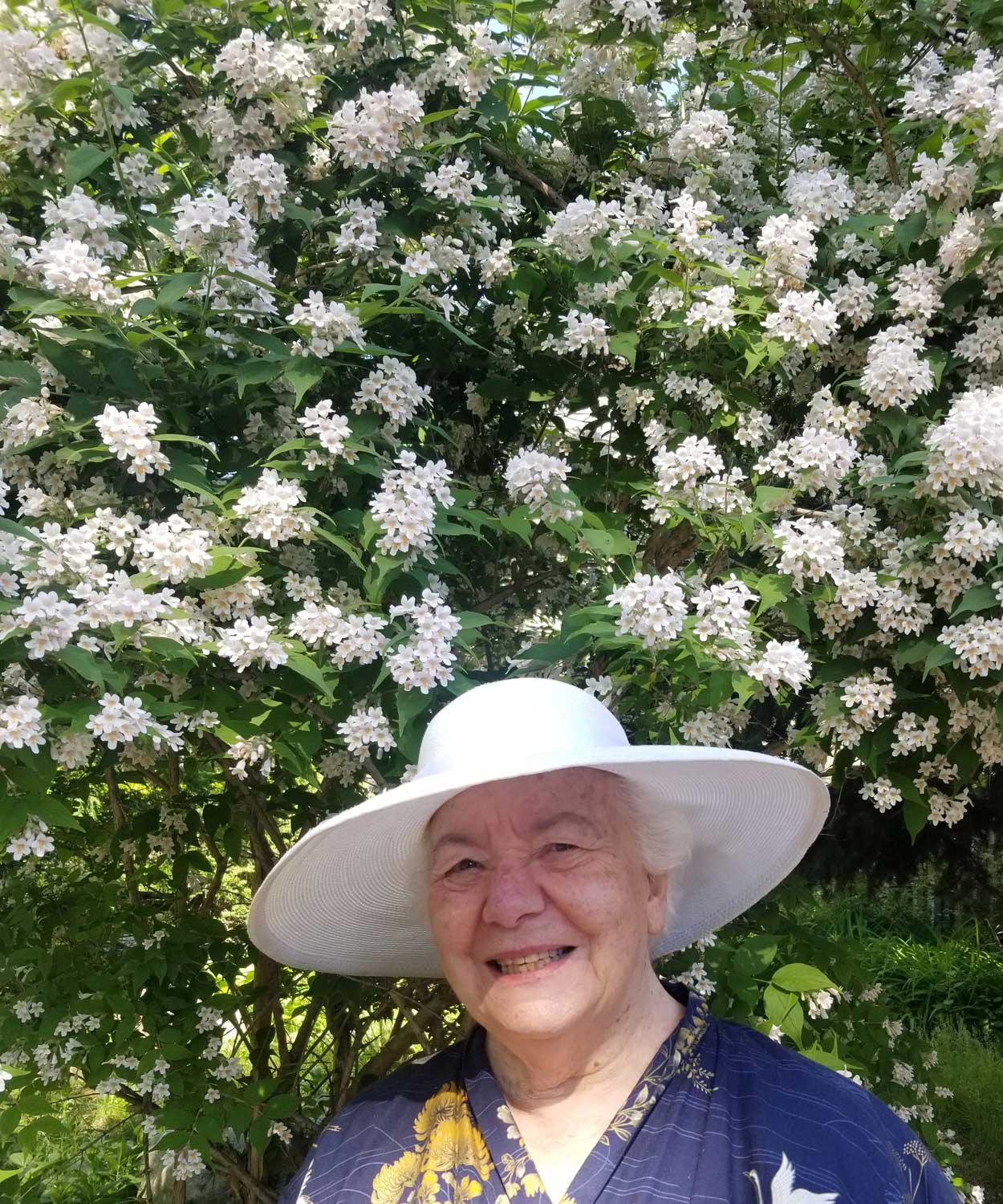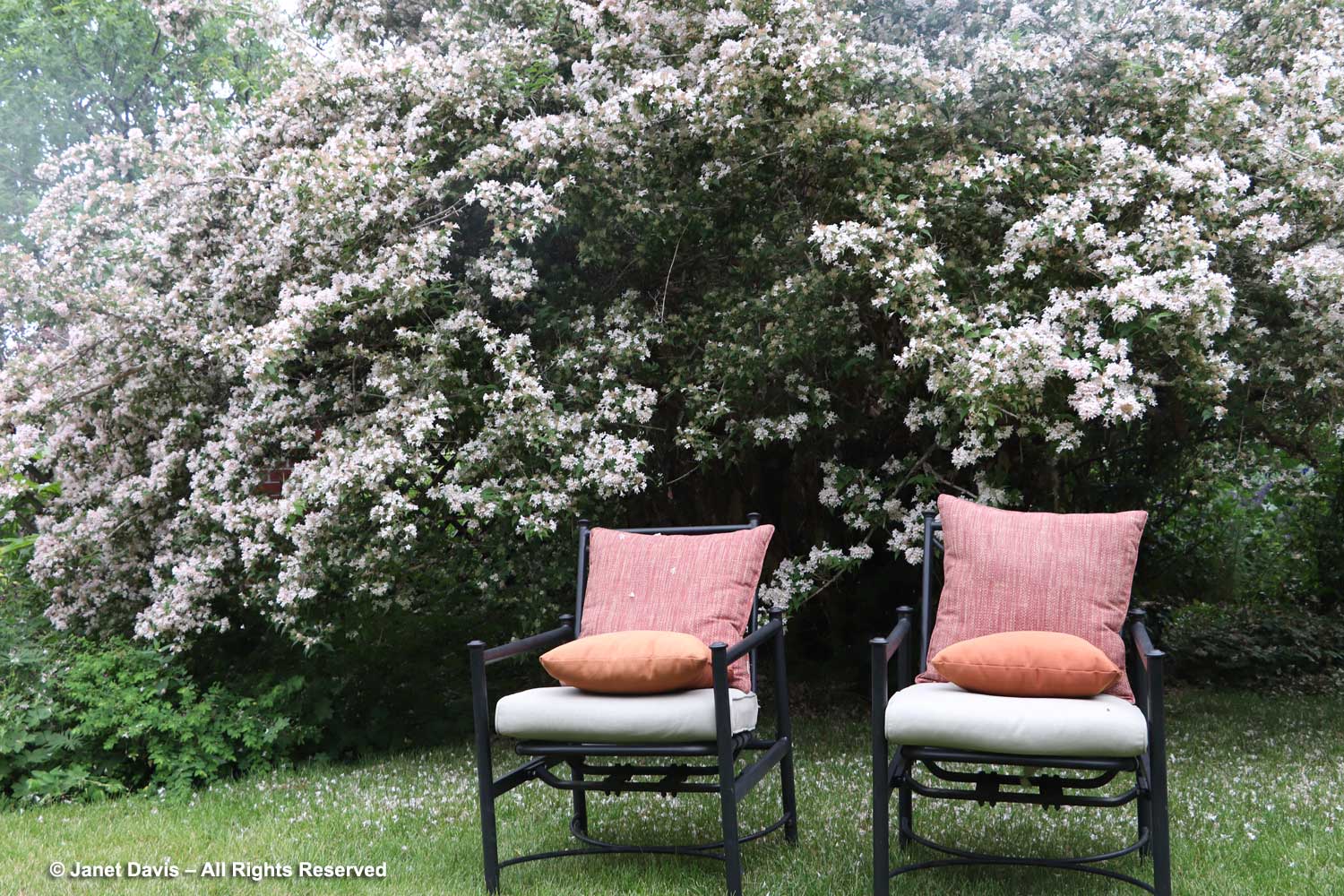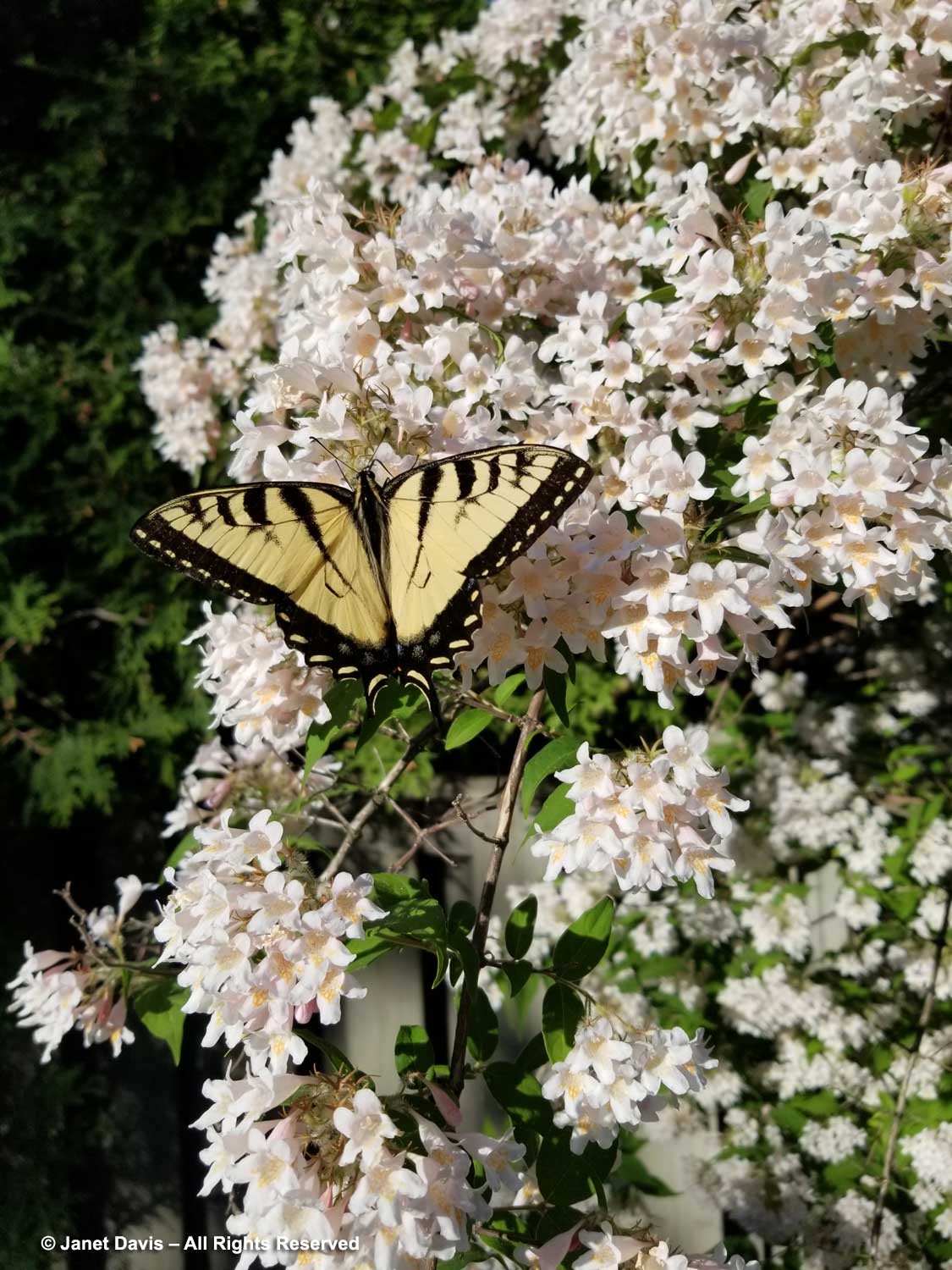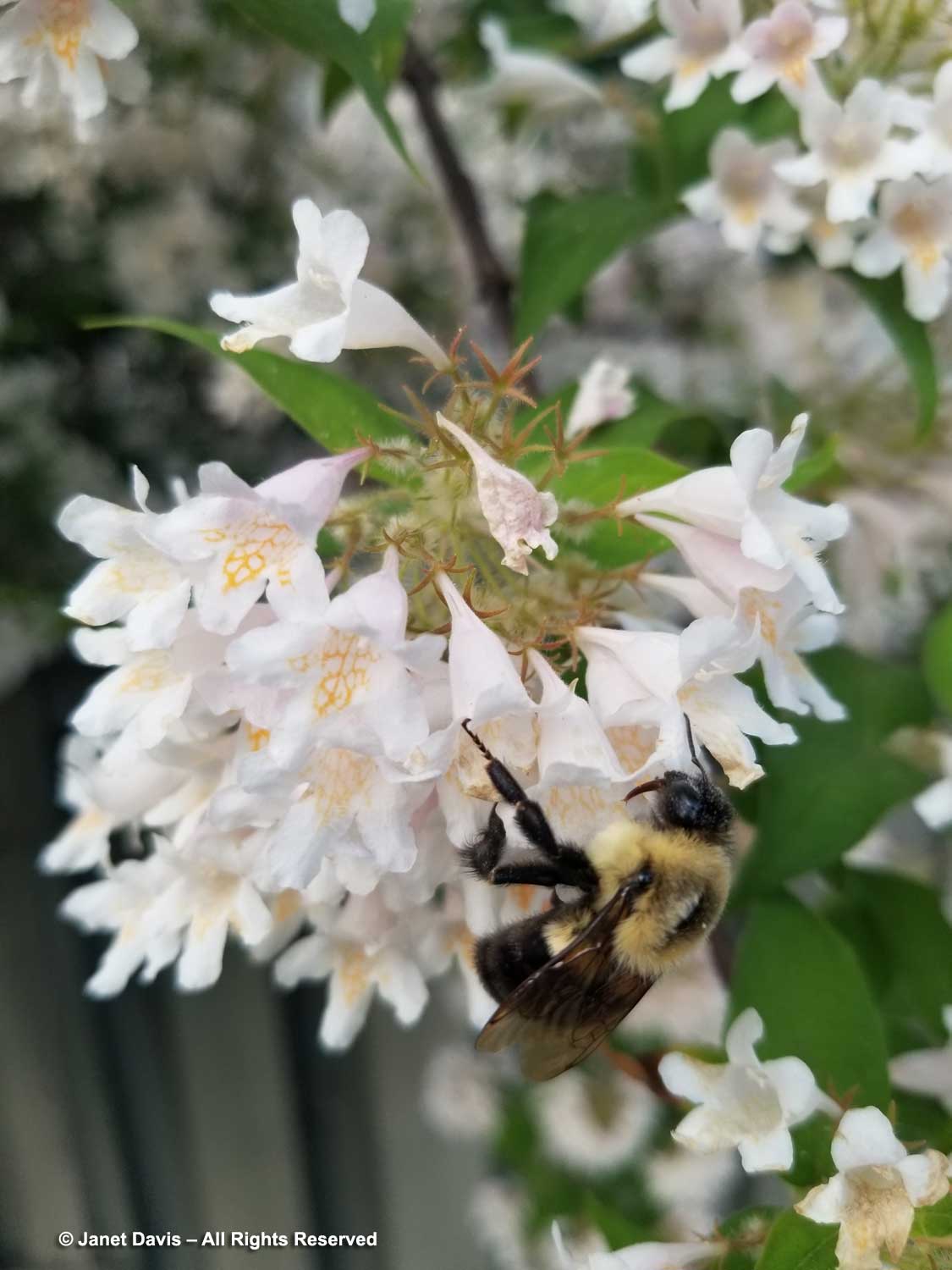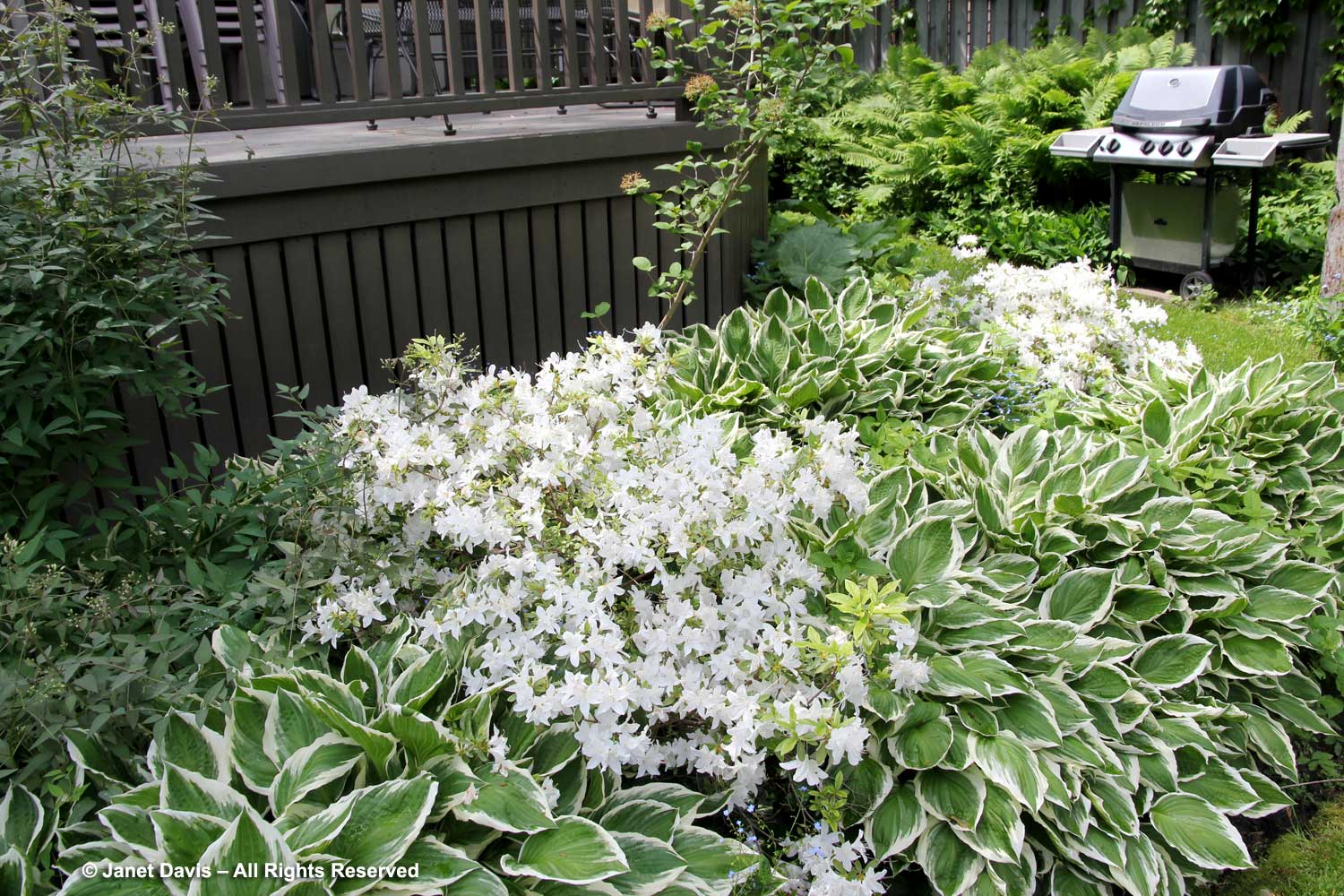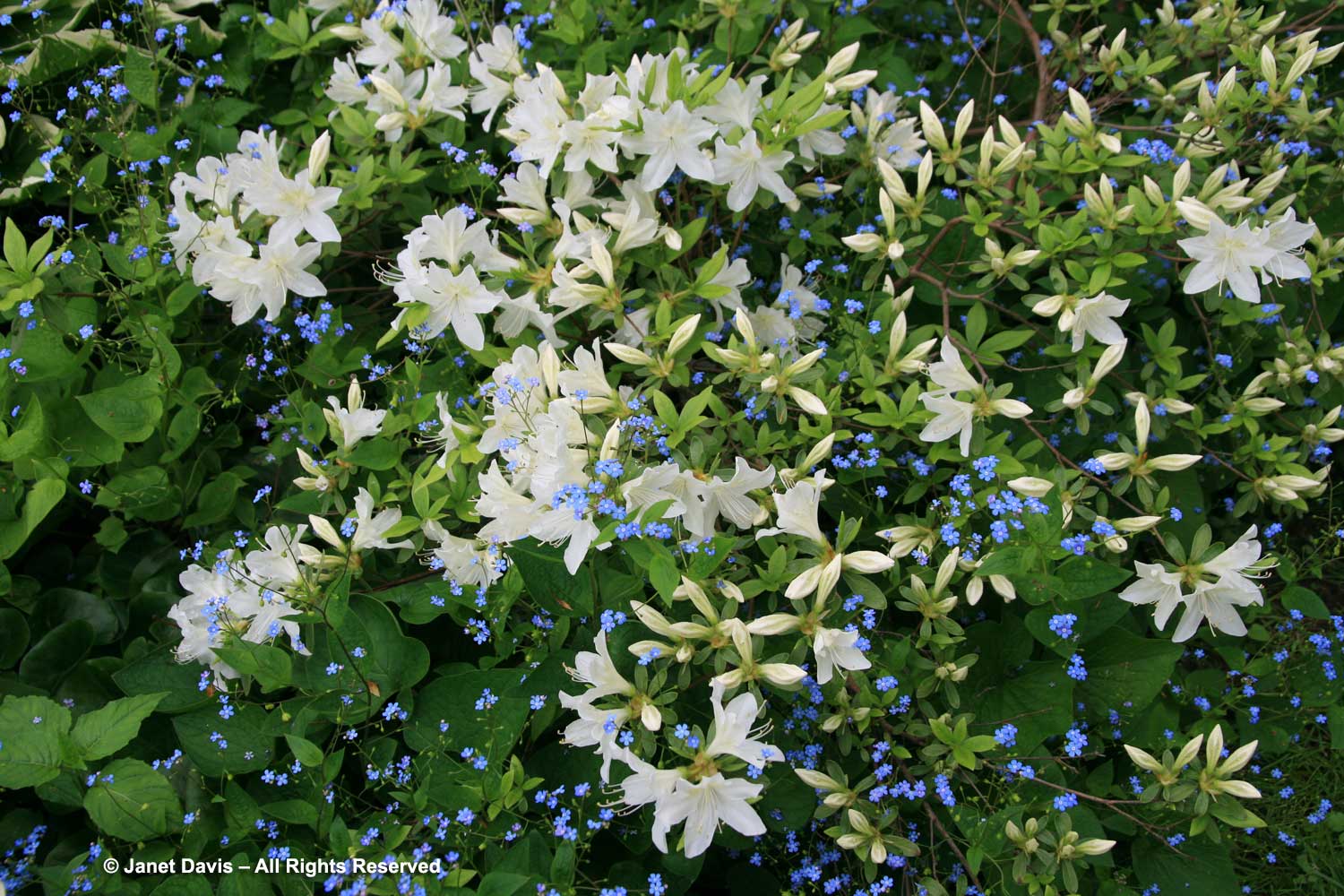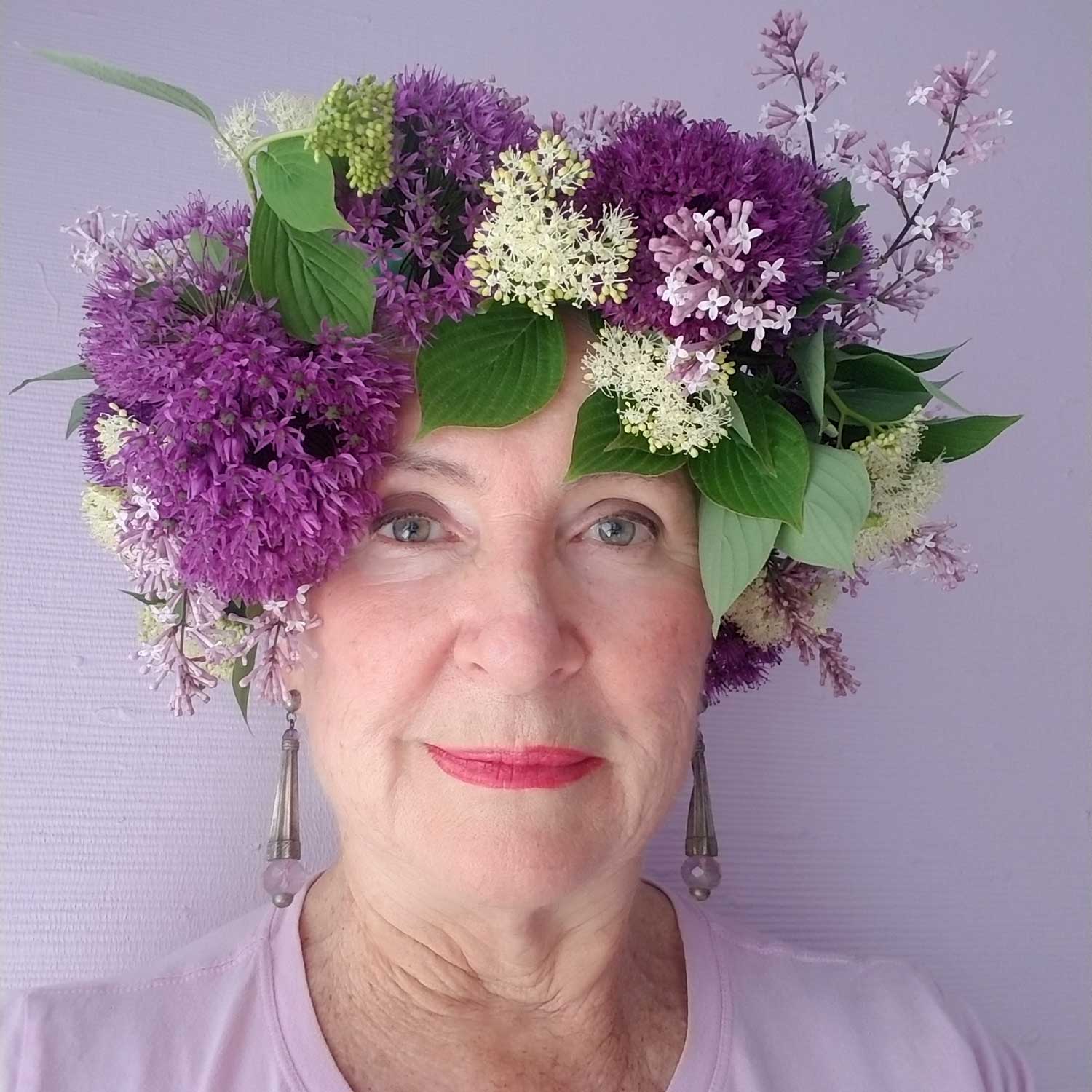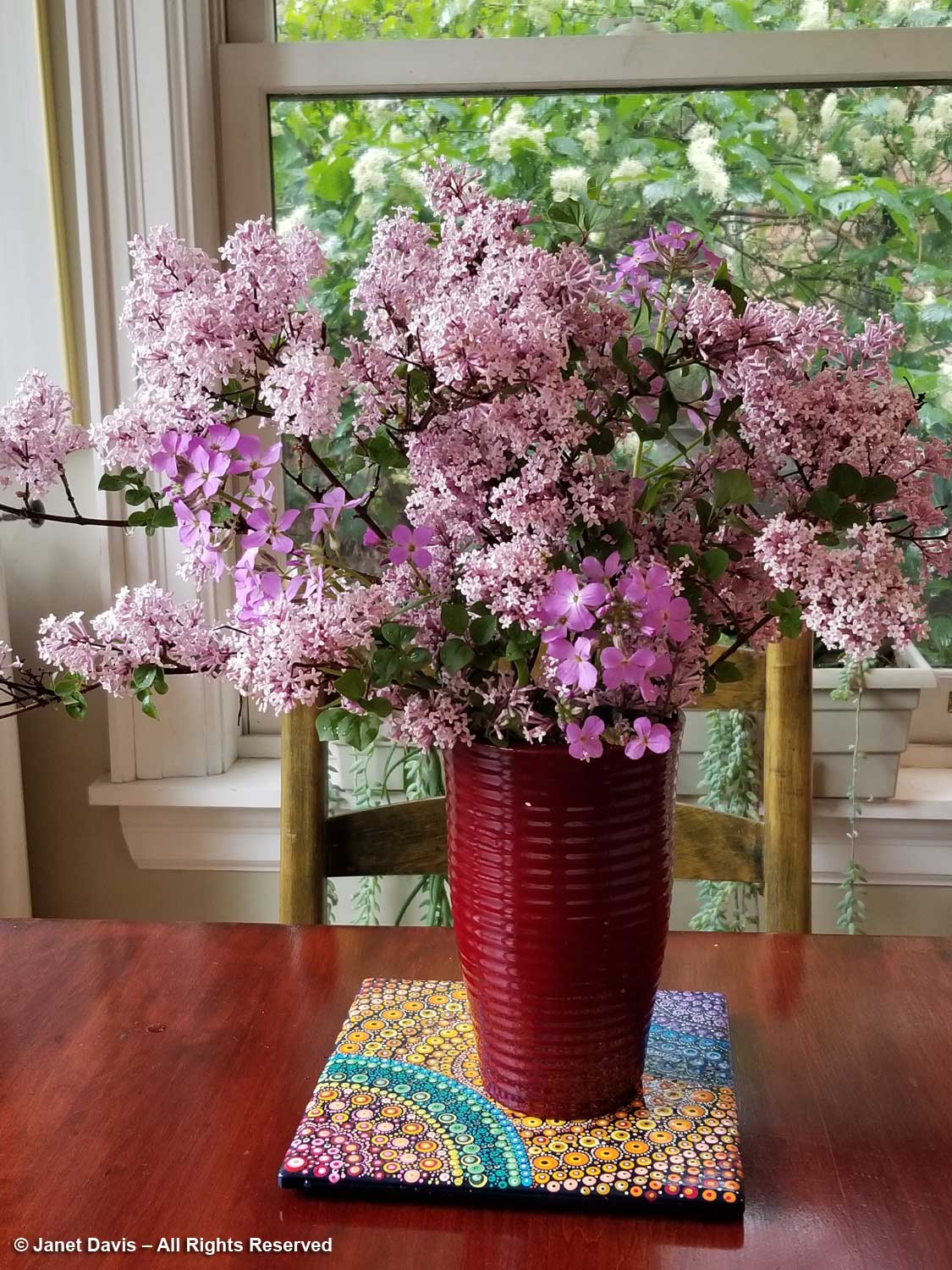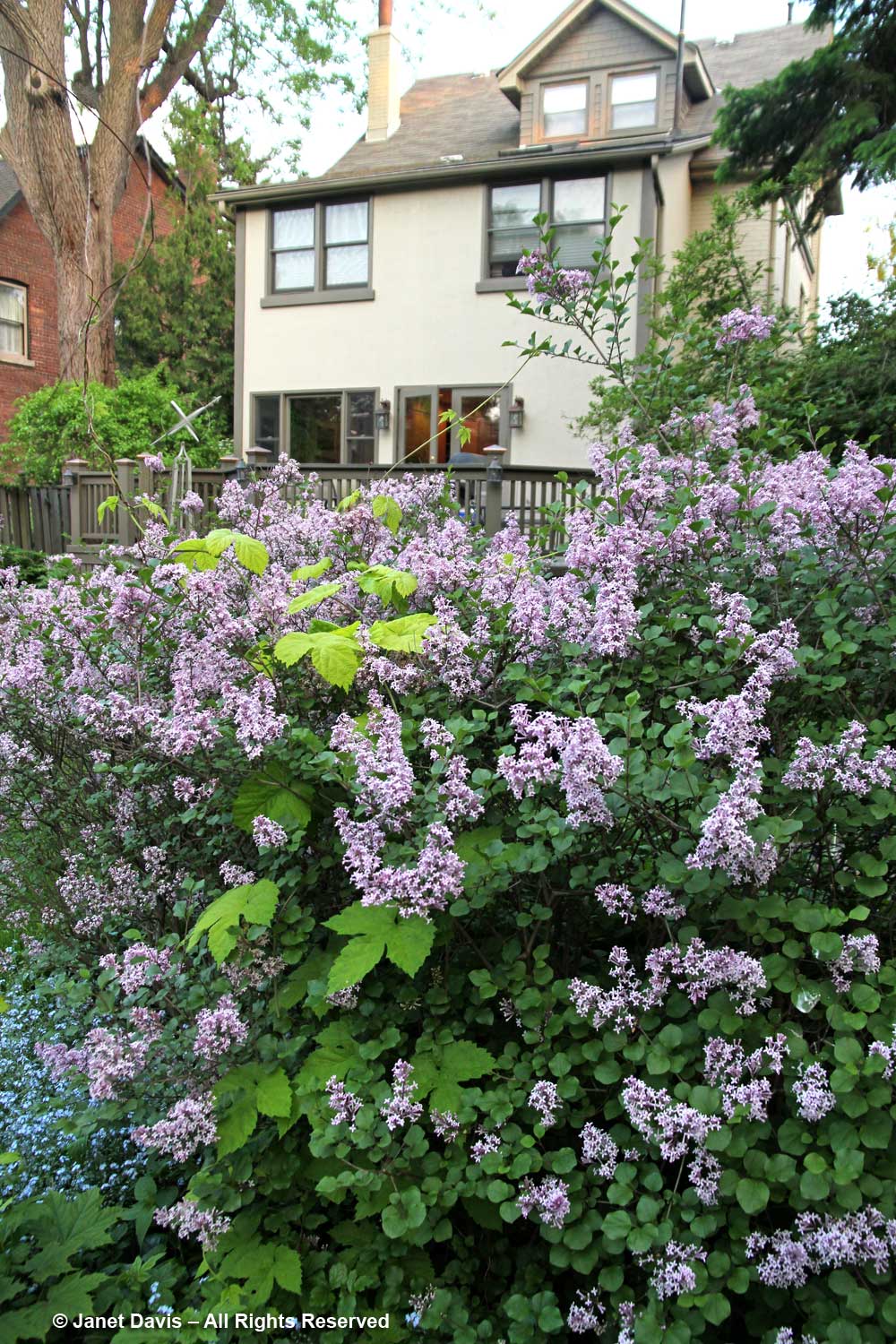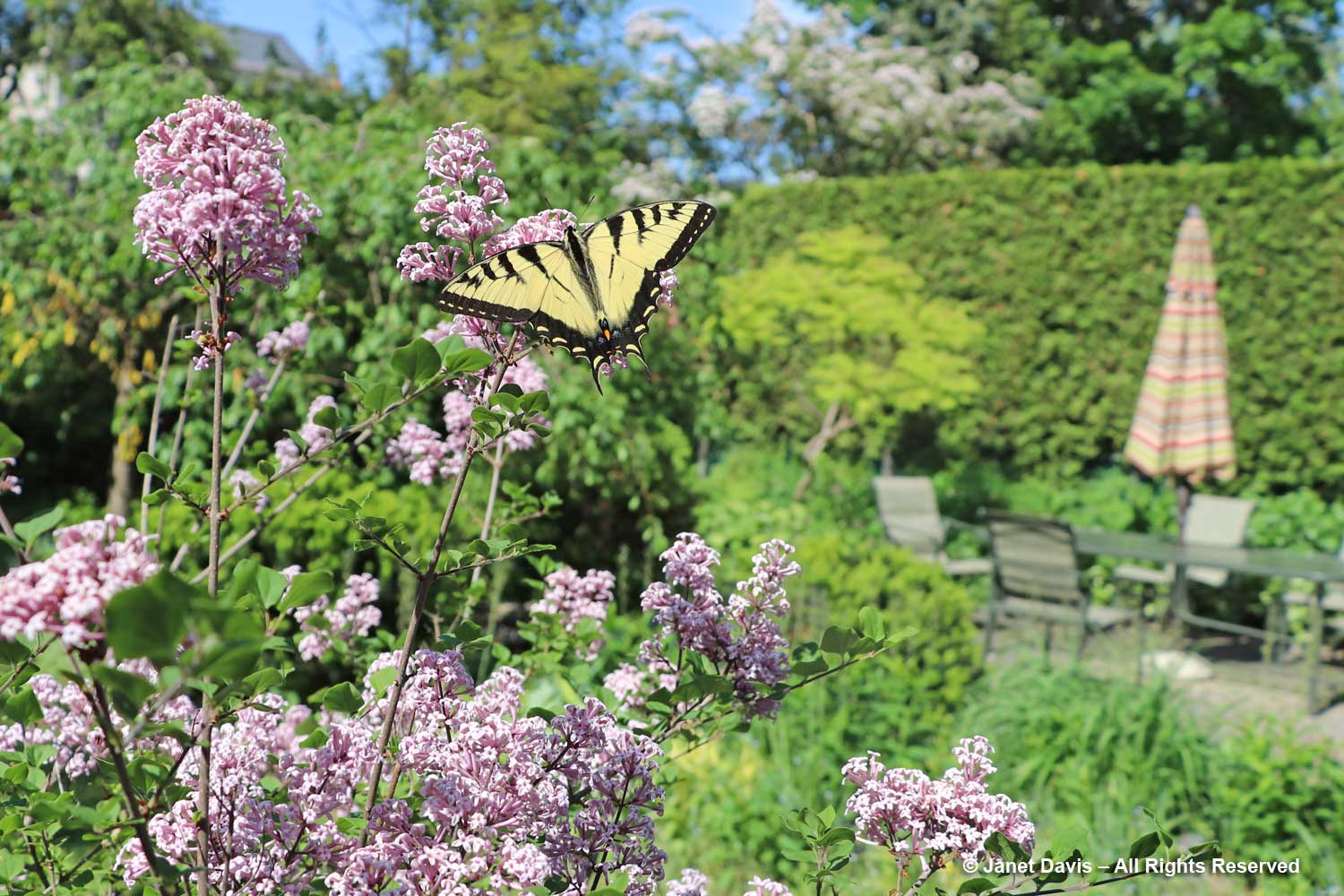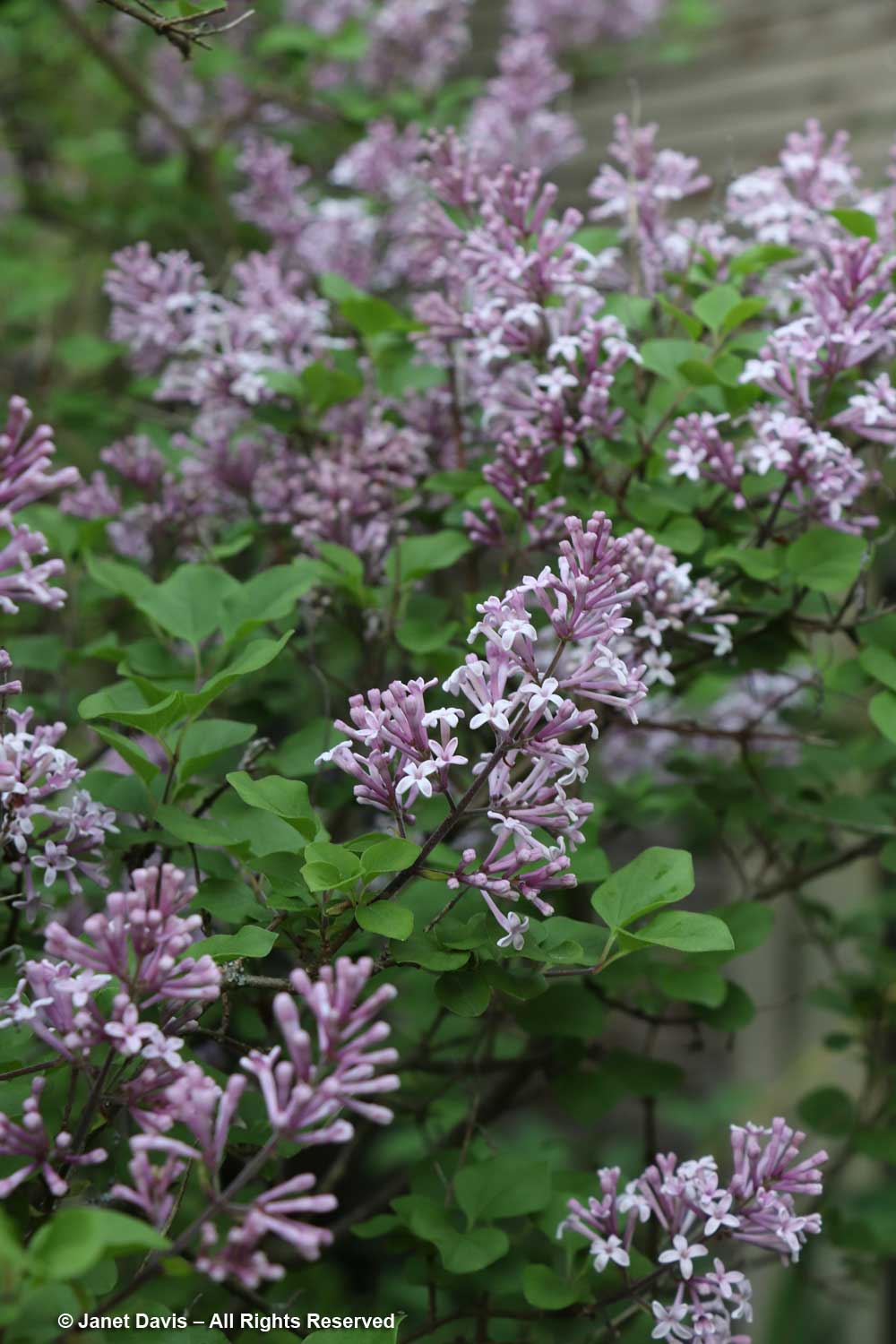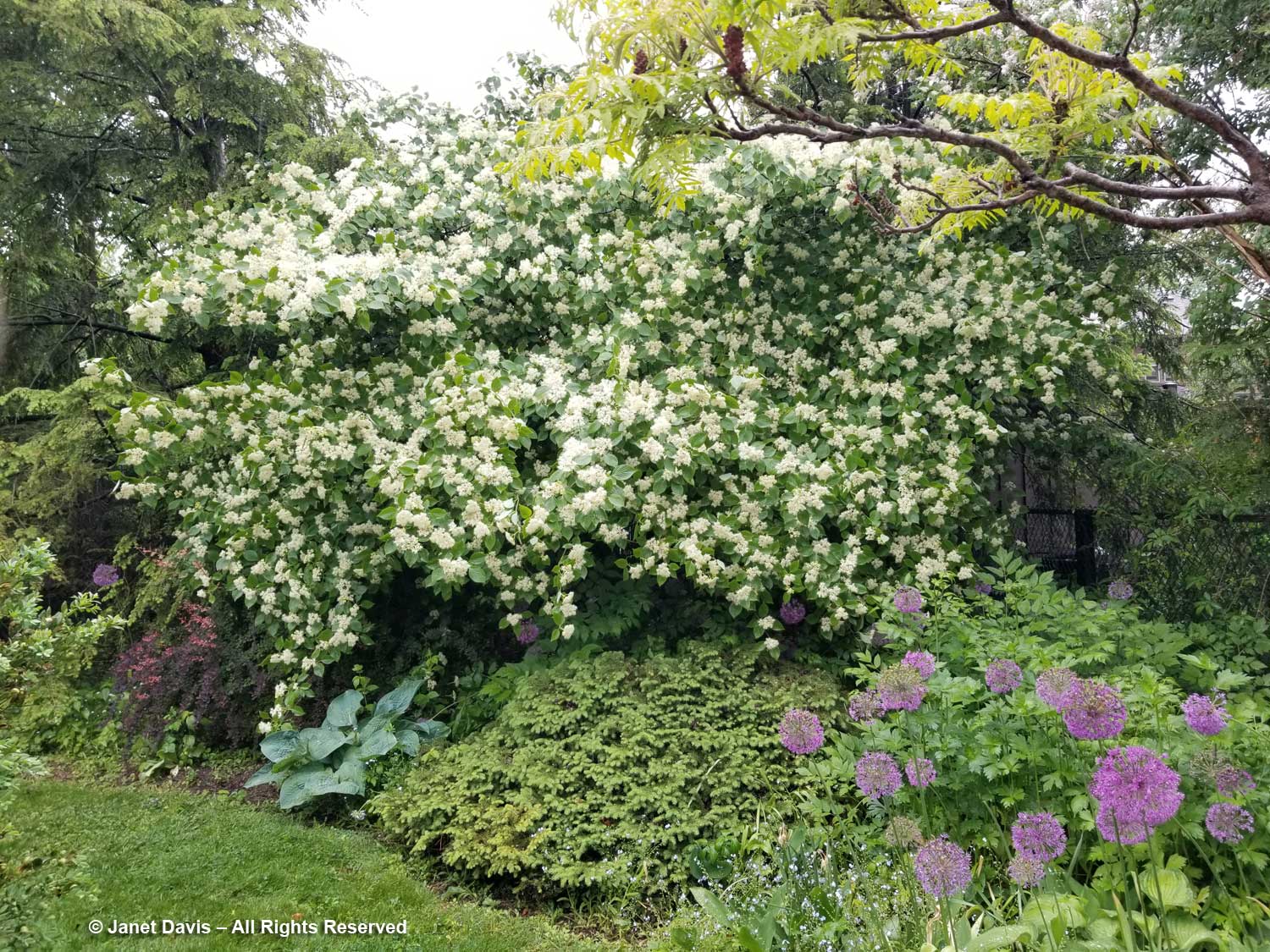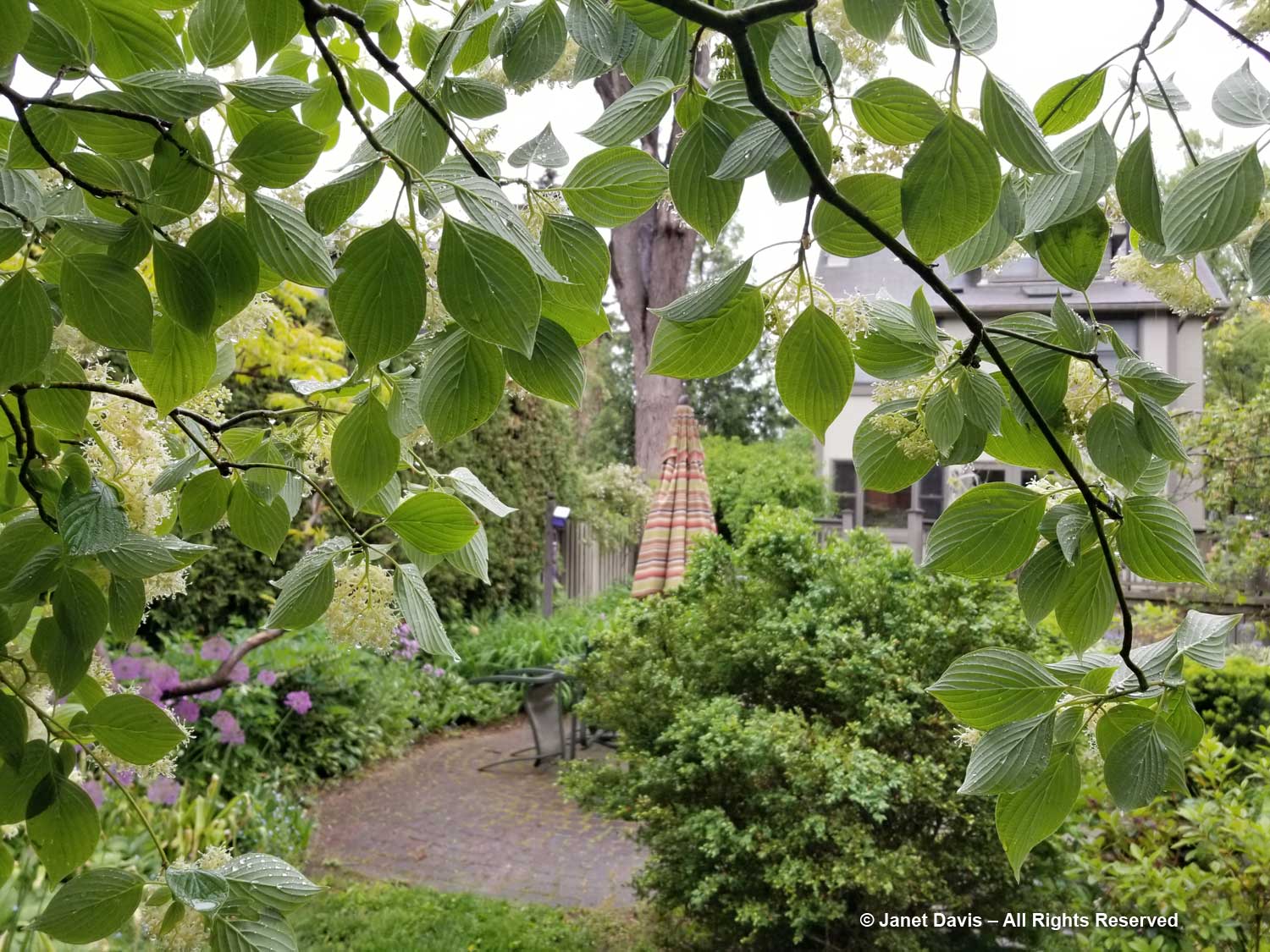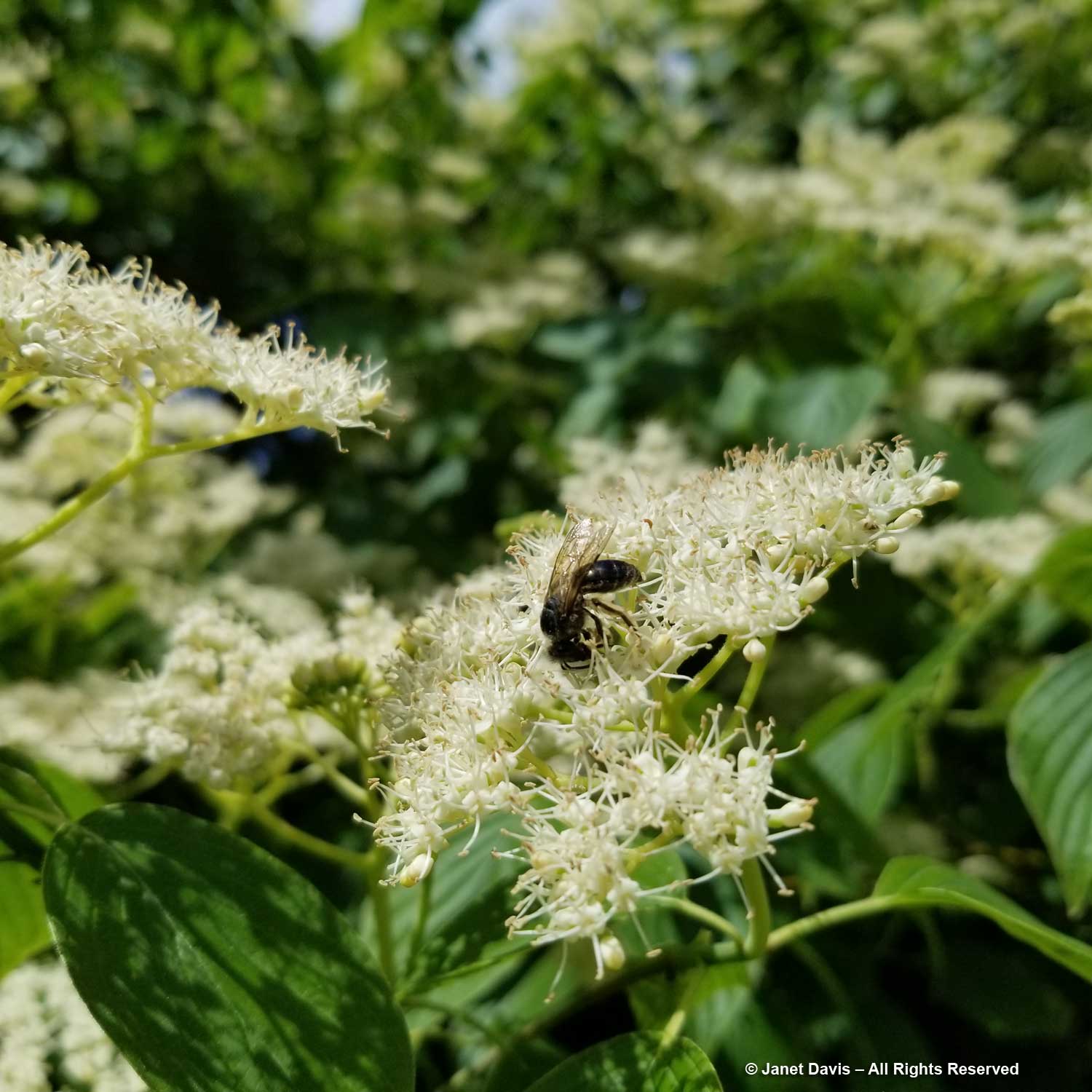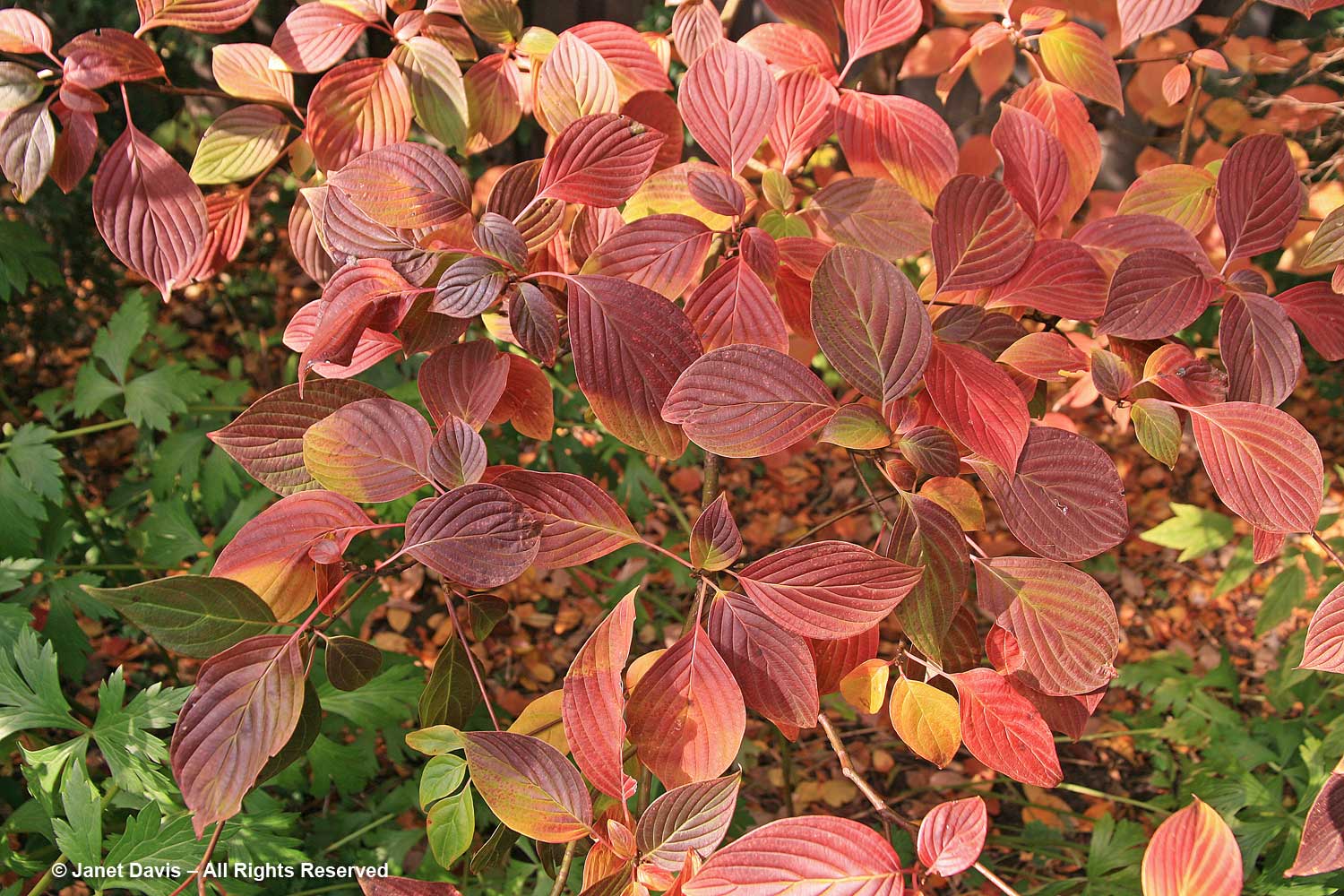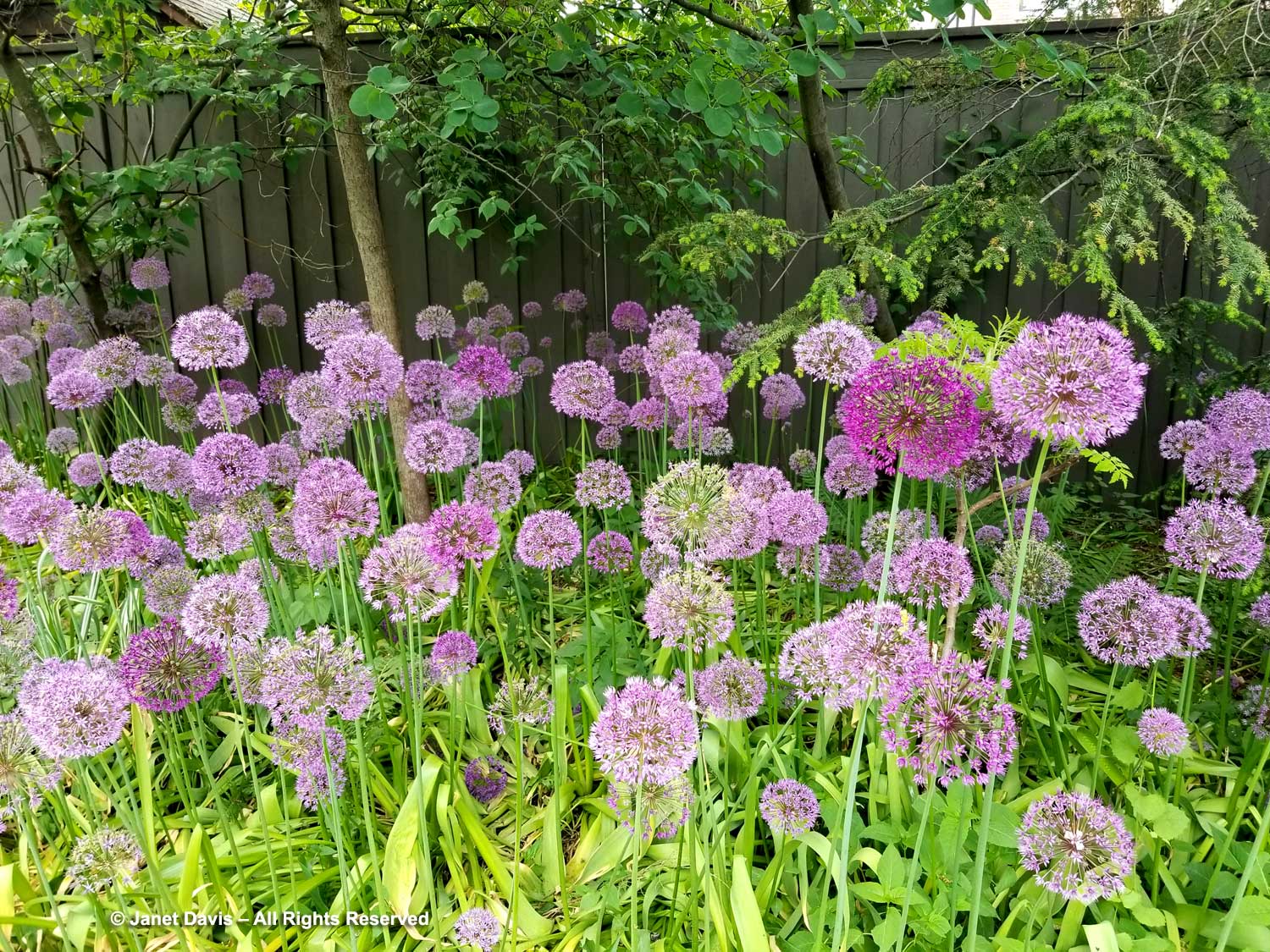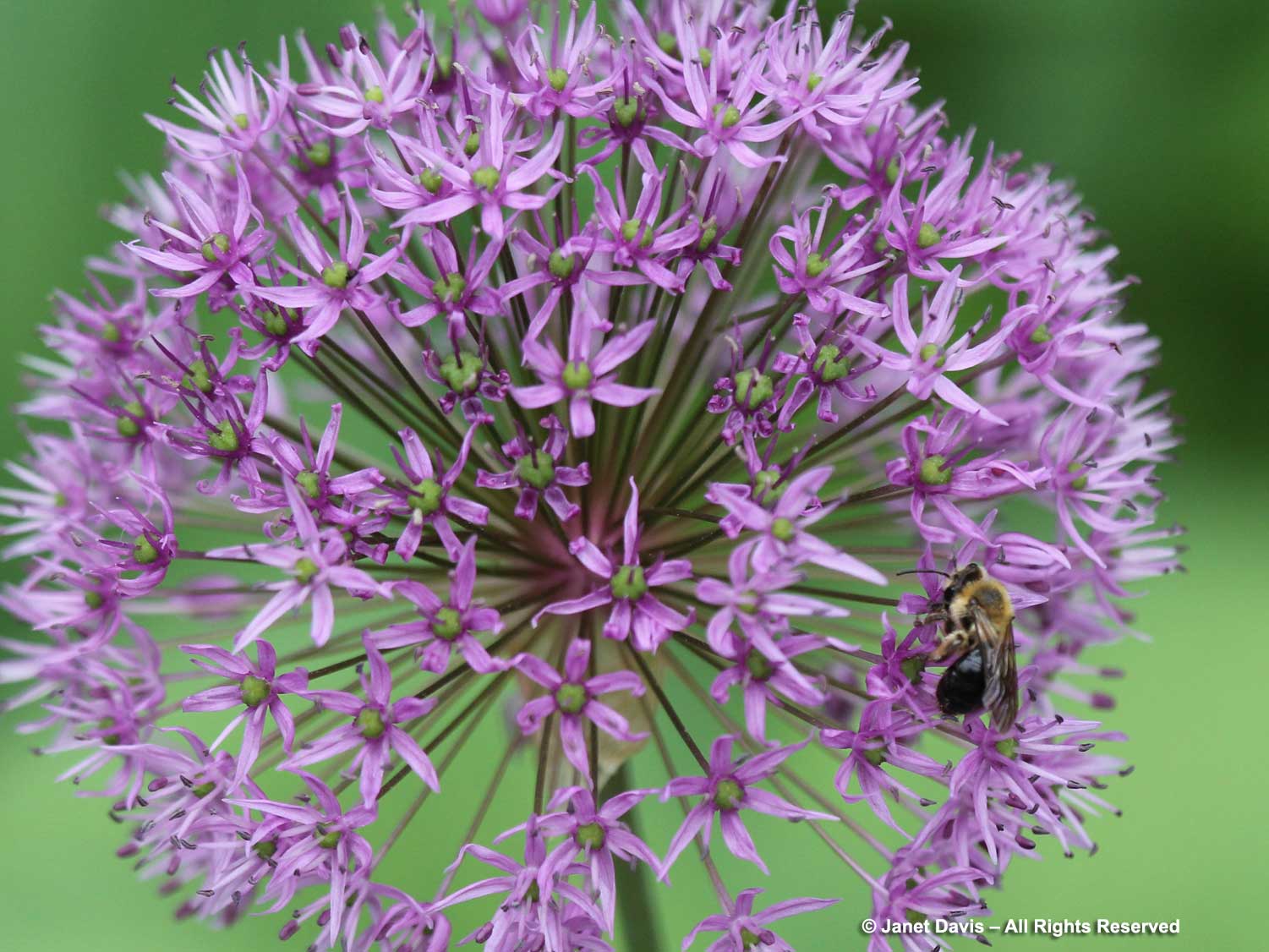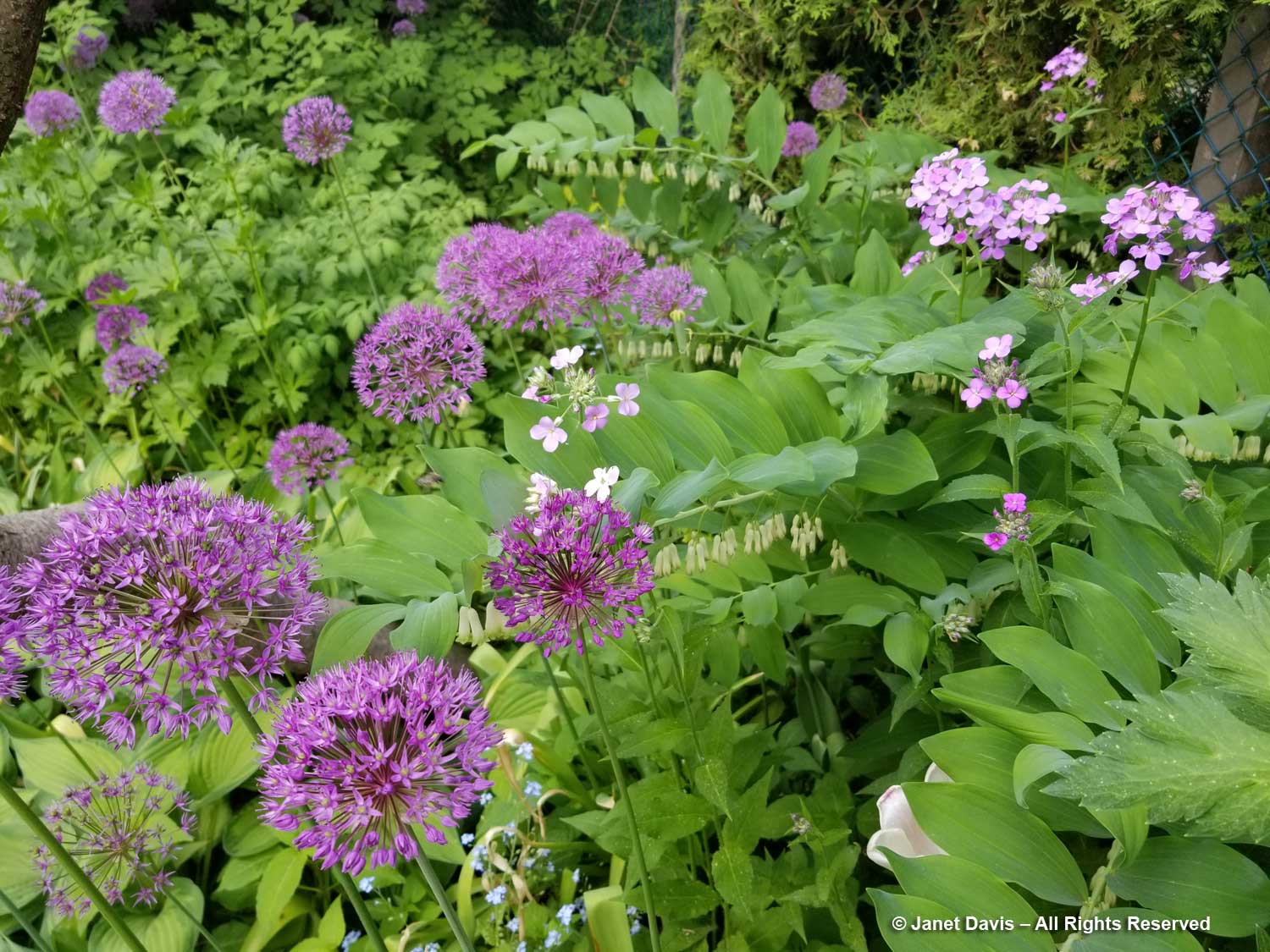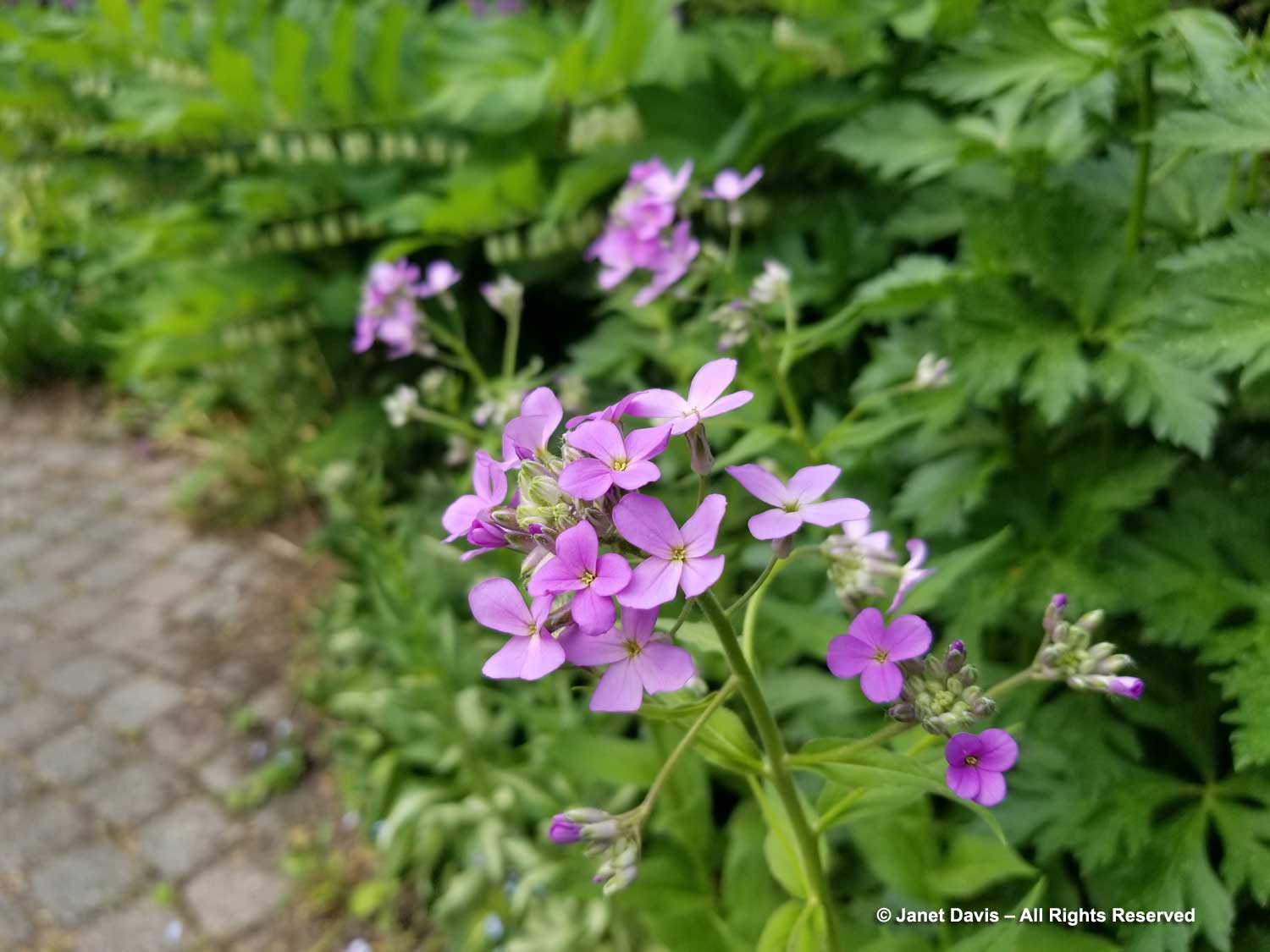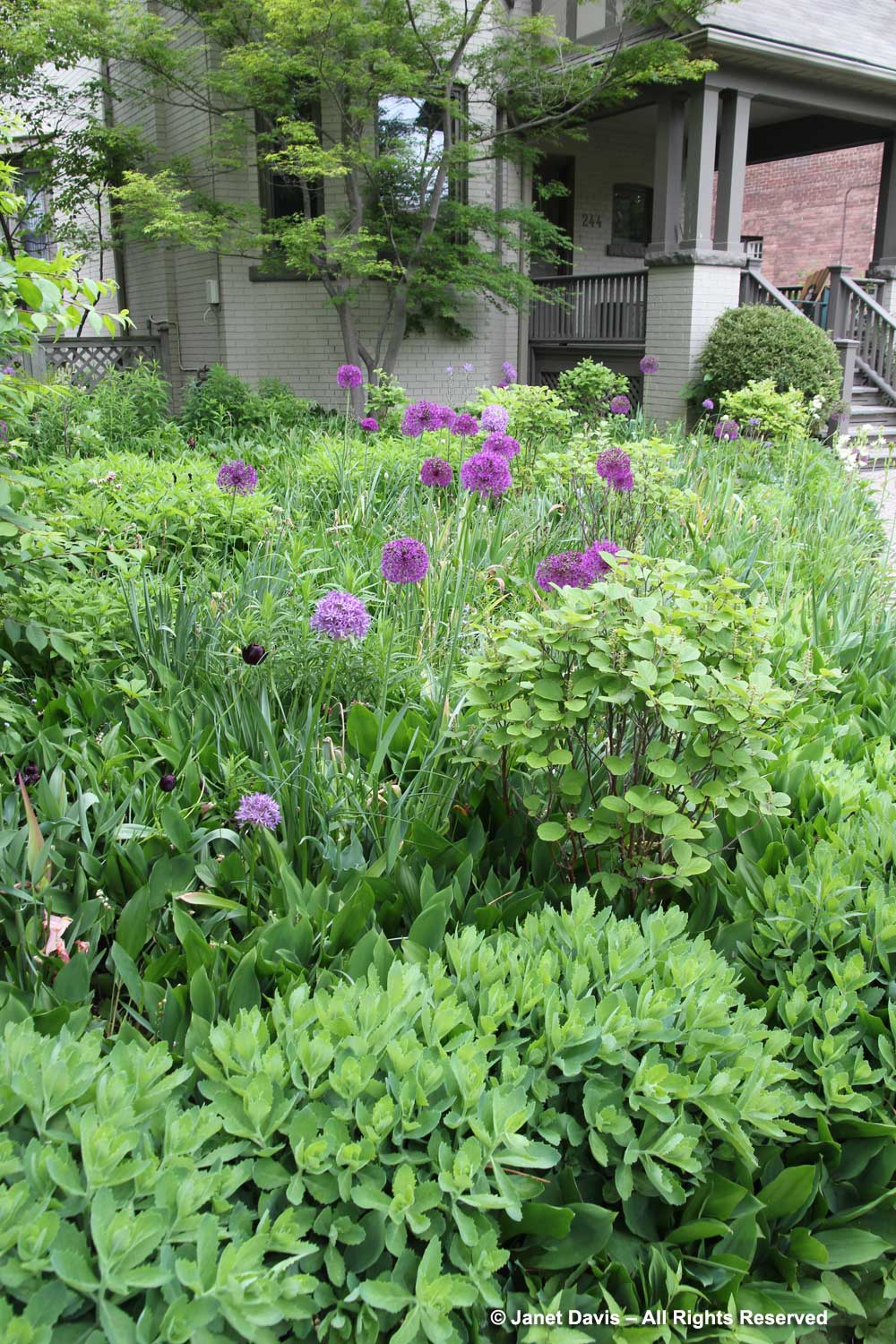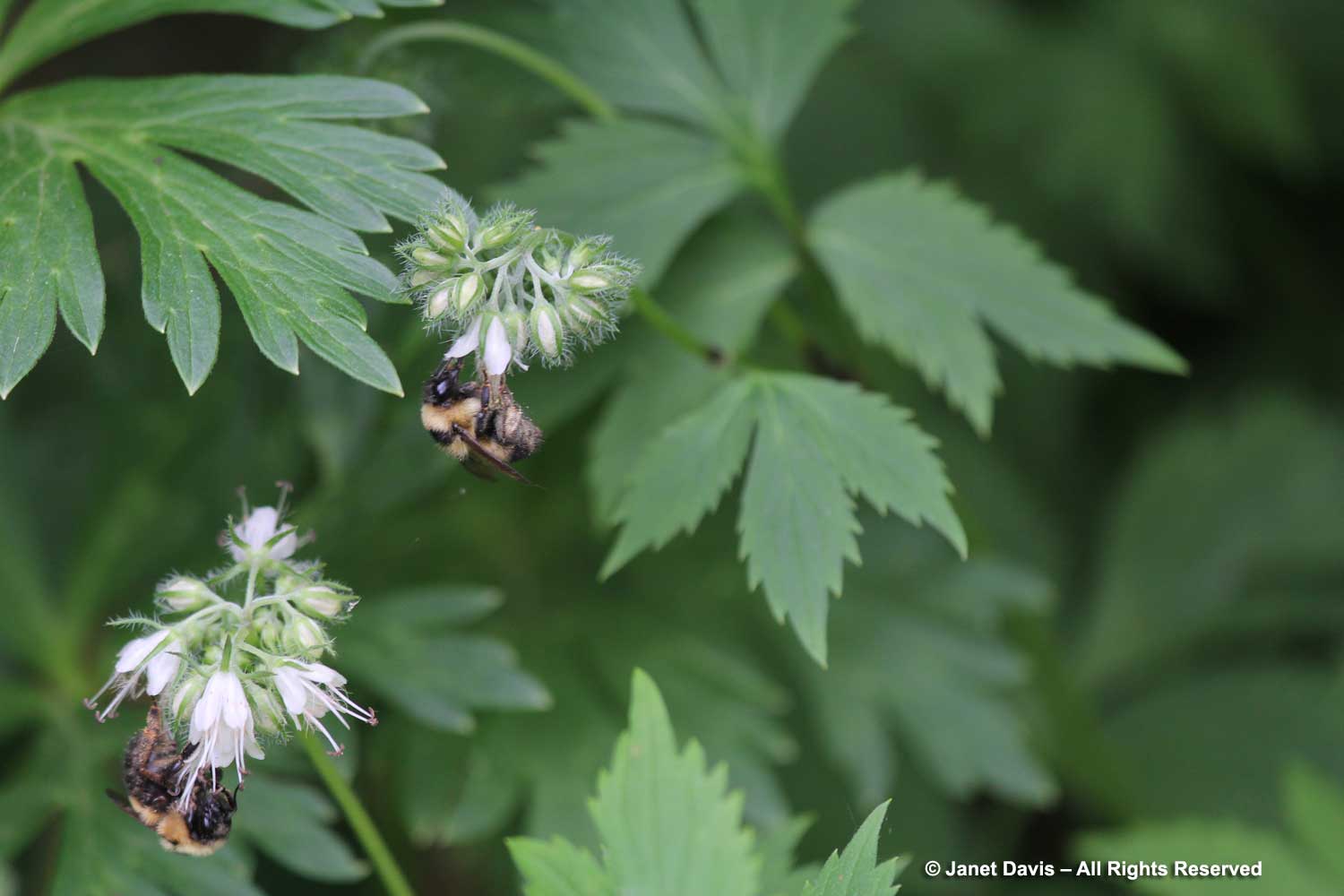With summer finally underway on Lake Muskoka, it’s time for a few of the stalwarts of my meadows and garden beds to feature in my 14th fairy crown. ‘Gold Plate’ yarrow (Achillea filipendulina) is hardy, low-maintenance and a dependable presence each July, well into August. I’ve written extensively about orange-flowered butterfly milkweed (Asclepias tuberosa) over the years, and it remains one of my top 3 perennials for pollinator attraction. At the top of my crown and over my left ear, you can see one of the bumble bees’ favourite weeds: yellow-flowered St. Johnswort (Hypericum perforatum). And that pale-pink daisy flower in the centre of my forehead? That’s lovely pale coneflower (Echinacea pallida), a native perennial I’m trying so hard to naturalize in my meadows – but it takes its own sweet time, and will not be rushed!

As the July nights grow warmer, our cottage screened porch plays host to dinners gathering family members from far away. And the meadows are now full of colorful blossoms that generously yield bouquets for the table.
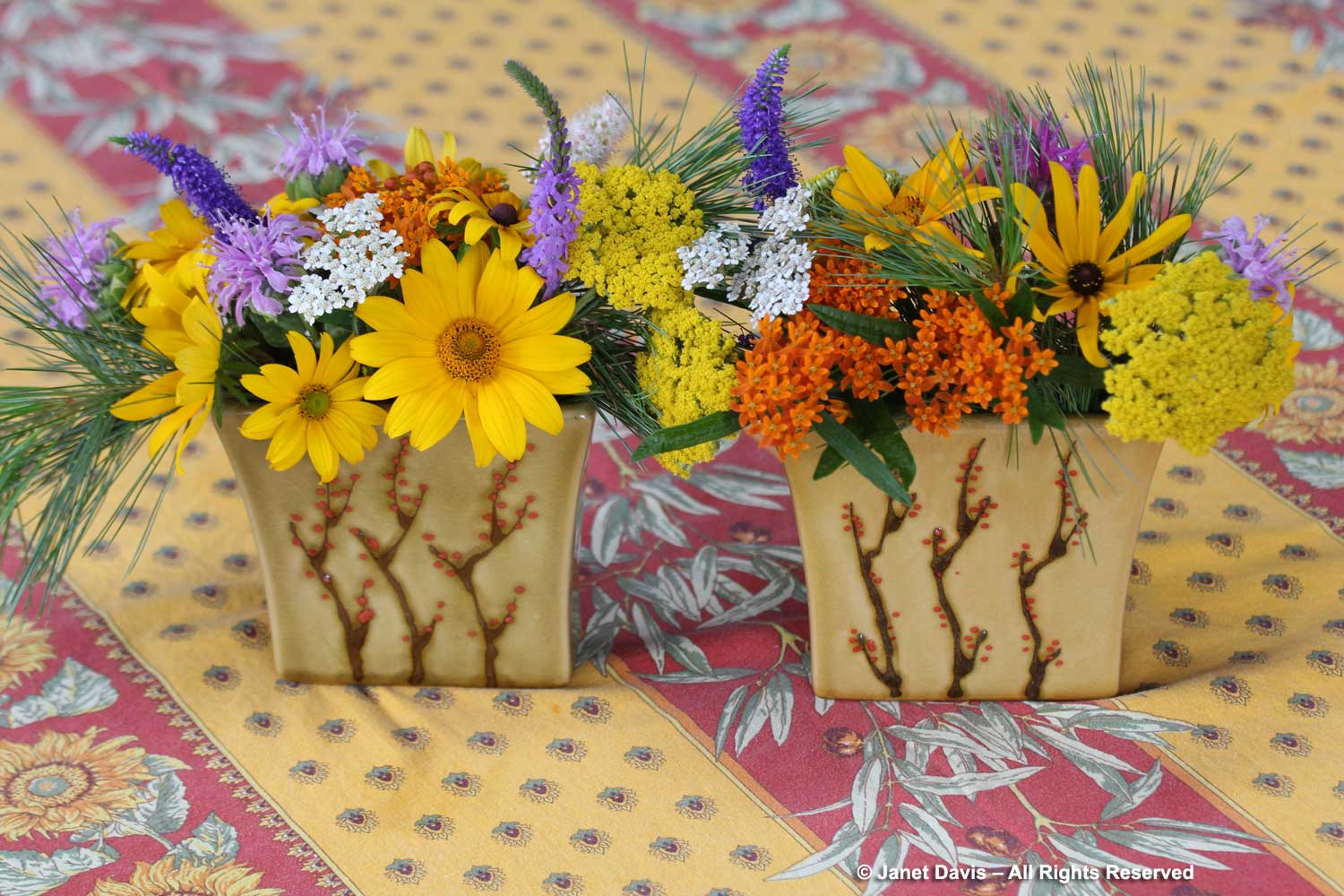
Creating informal floral arrangements is one of my favourite pastimes at the lake, using a variety of containers from old ceramic vases purchased for a few dollars at the second-hand store in the nearby town to antique medicine bottles, below, bought at a garage sale.
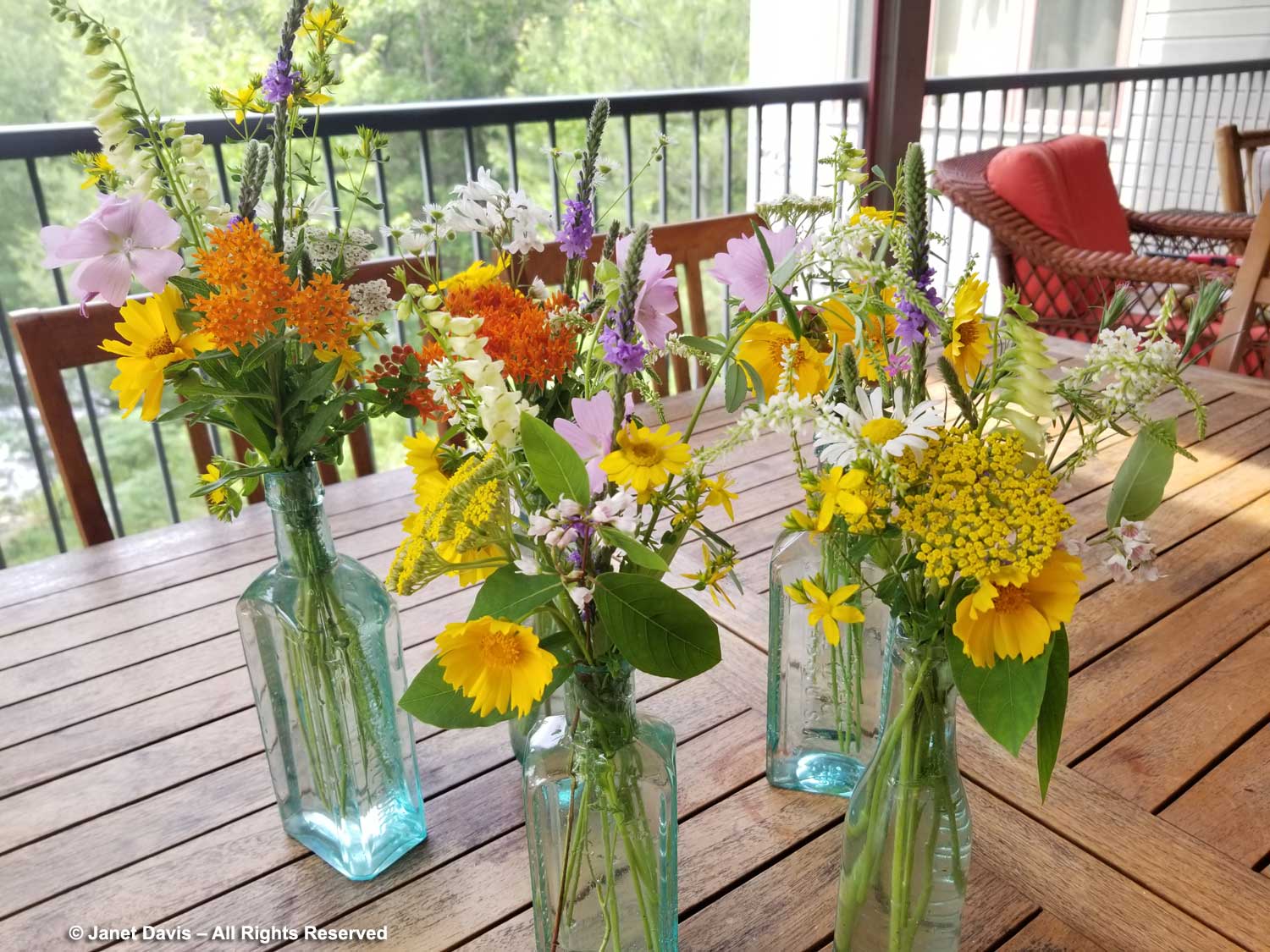
Early each July, monarch butterflies arrive in my meadows at Lake Muskoka, seemingly drawn by some generational homing instinct to find the orange-flowered perennials that provide not just abundant nectar, but foliage on which to lay their eggs and ultimately feed the caterpillars of the next generation.
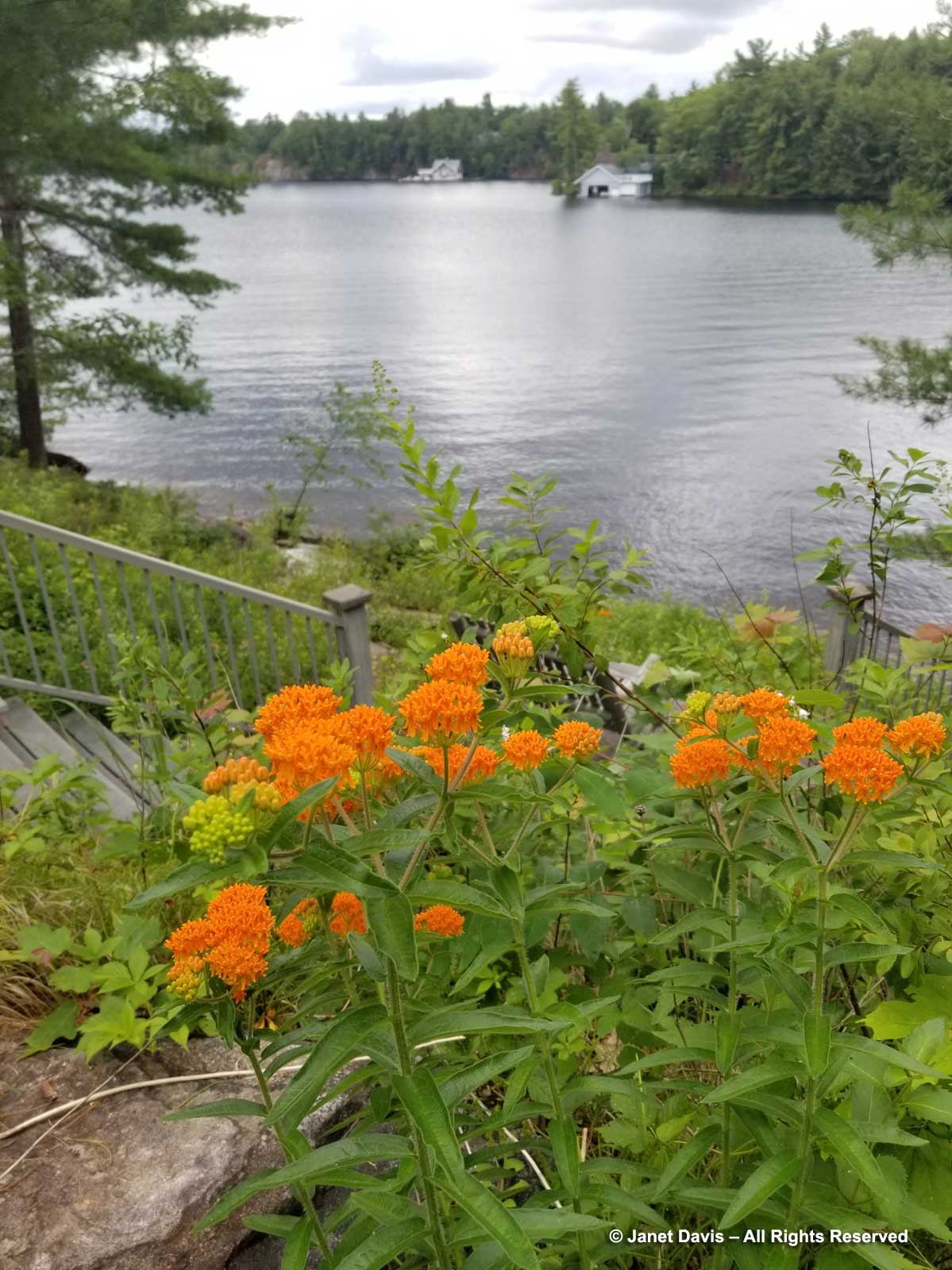
Here’s a little video I made:
That perennial, of course, is butterfly milkweed (Asclepias tuberosa) and it is one of my top 3 plants for pollinator gardening. (The two others will come later in my fairy crowns.) It provides abundant nectar over a long period to a wide range of bees and butterflies, below.
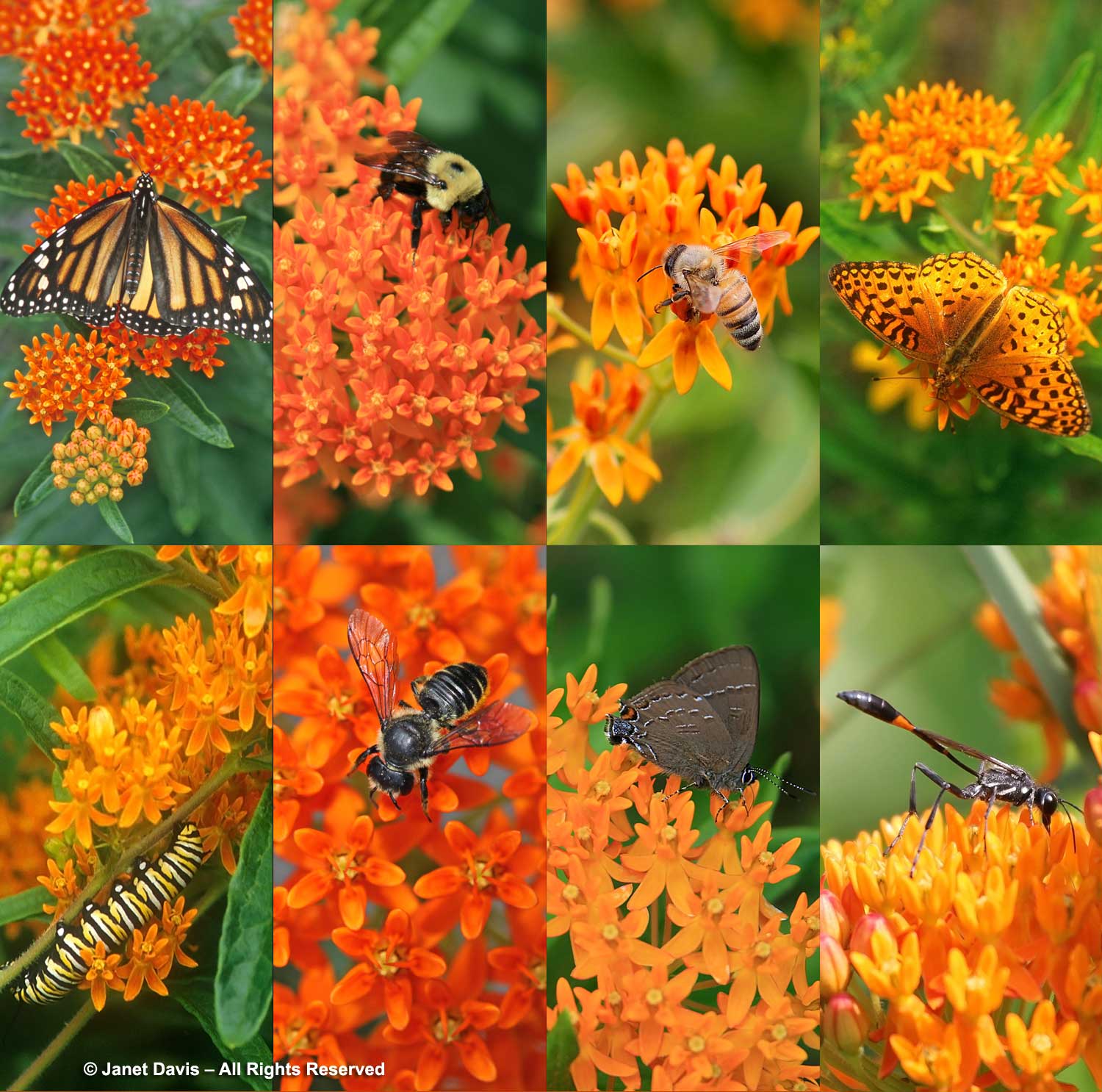
But there is nothing more gratifying to me than counting all the monarch caterpillars on my milkweed plants, then watching them consume the leaves before disappearing to transform into the beautiful green chrysalis that becomes the butterfly.
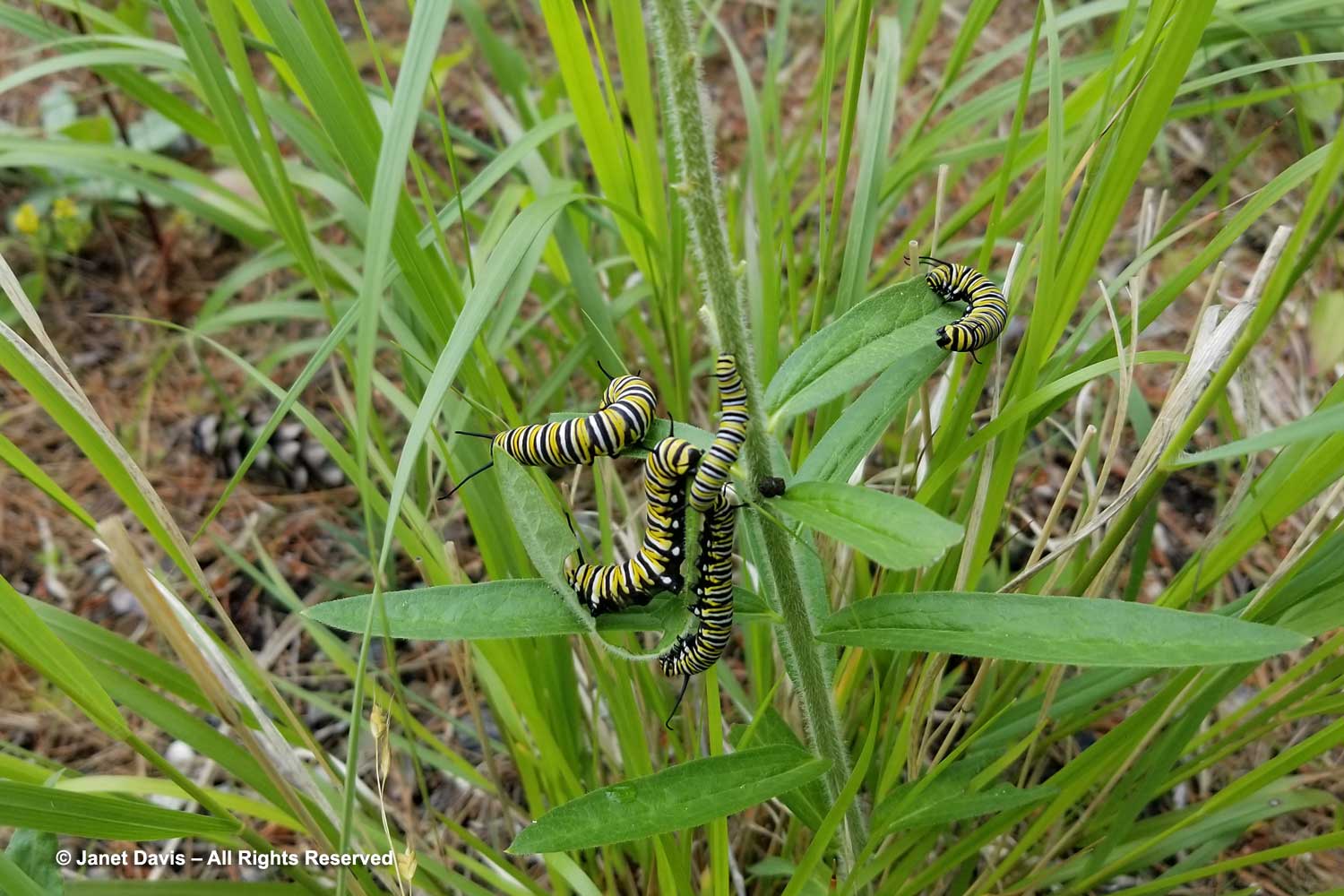
With a wide native range from Newfoundland to Minnesota and Colorado and south to Texas and Florida, this is one of the most common milkweed species. In nature, it occurs in prairies, open woods and roadsides; it tolerates a range of soils from clay to limestone. For me, it grows in the rich loam that was placed selectively in a few garden beds and in the acidic, sandy, well-drained soil of my meadows, below, with purple flowered Verbena stricta.
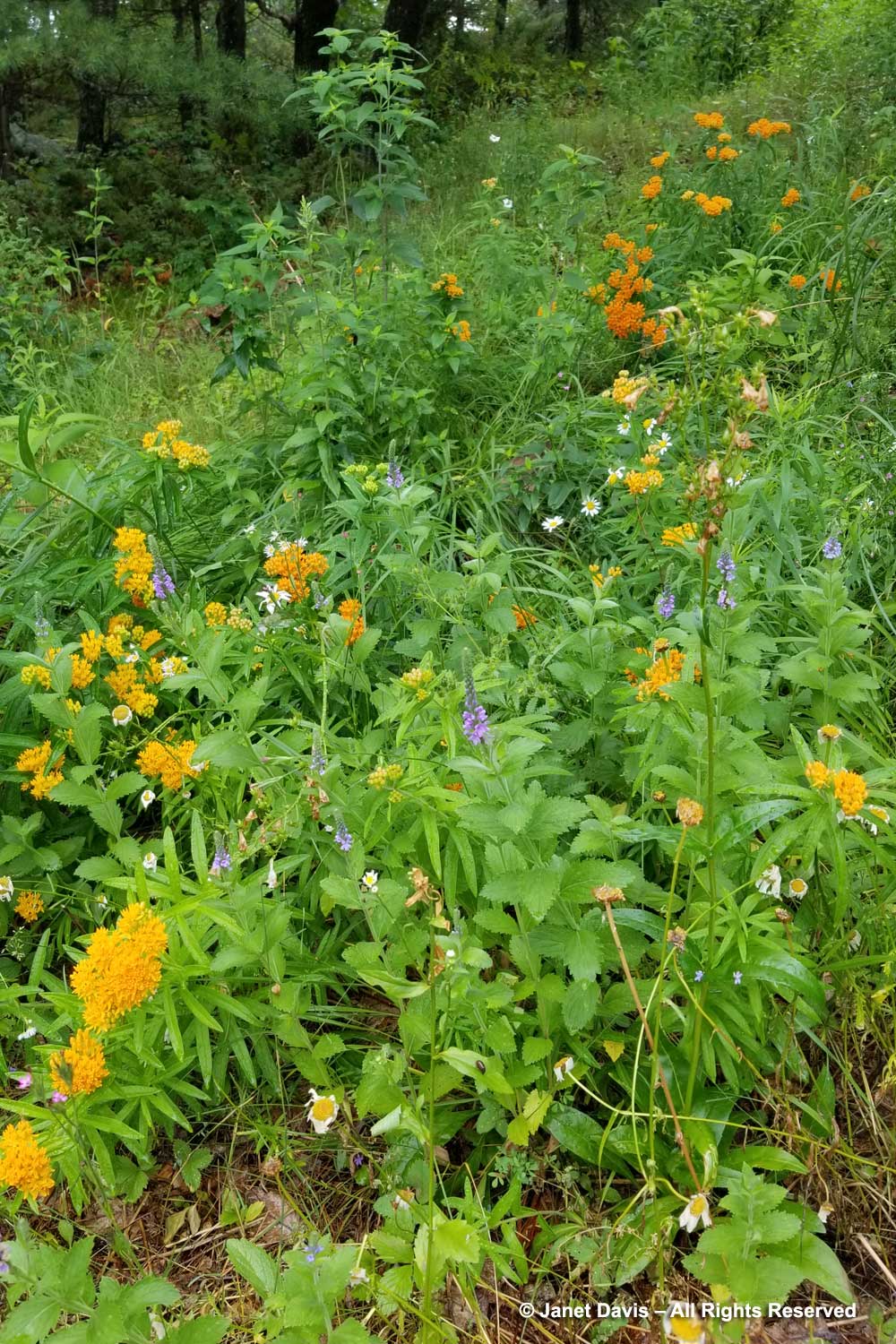
I’ve even had great germination results from kicking seeds into gravel on the path near our cottage.
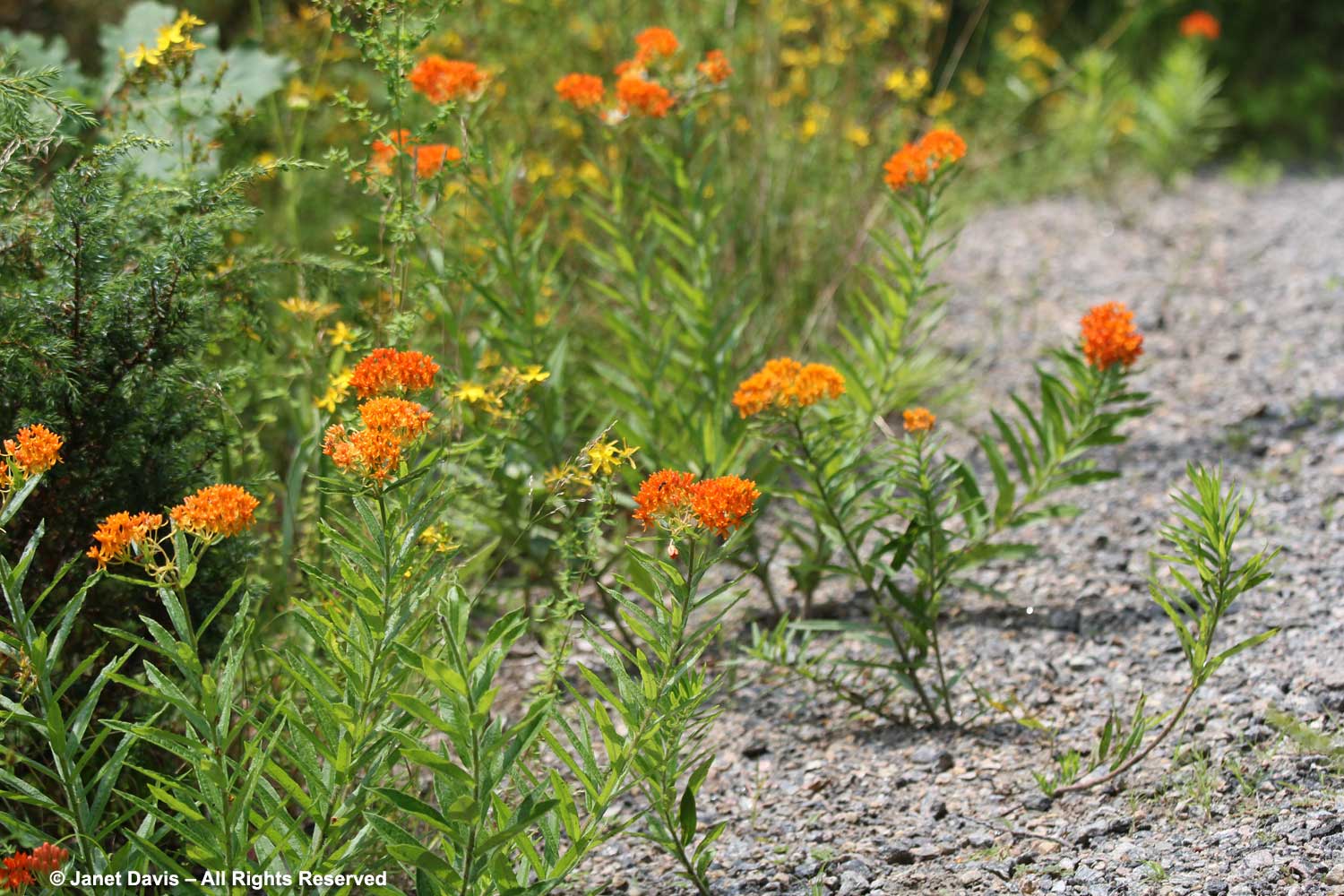
It flowers for many weeks in July-August, reaching 2-3 feet (30-60 cm), and is a beautiful cut flower. Though it has a deep tap root and is described as being drought-tolerant, in the sandiest places on our property the leaves and blossoms wilt in a prolonged dry stretch while plants in more moisture-retentive sites thrive. It self-seeds readily, its oval follicles splitting open in fall to release its closely-packed seeds to the wind on delicate parachutes.
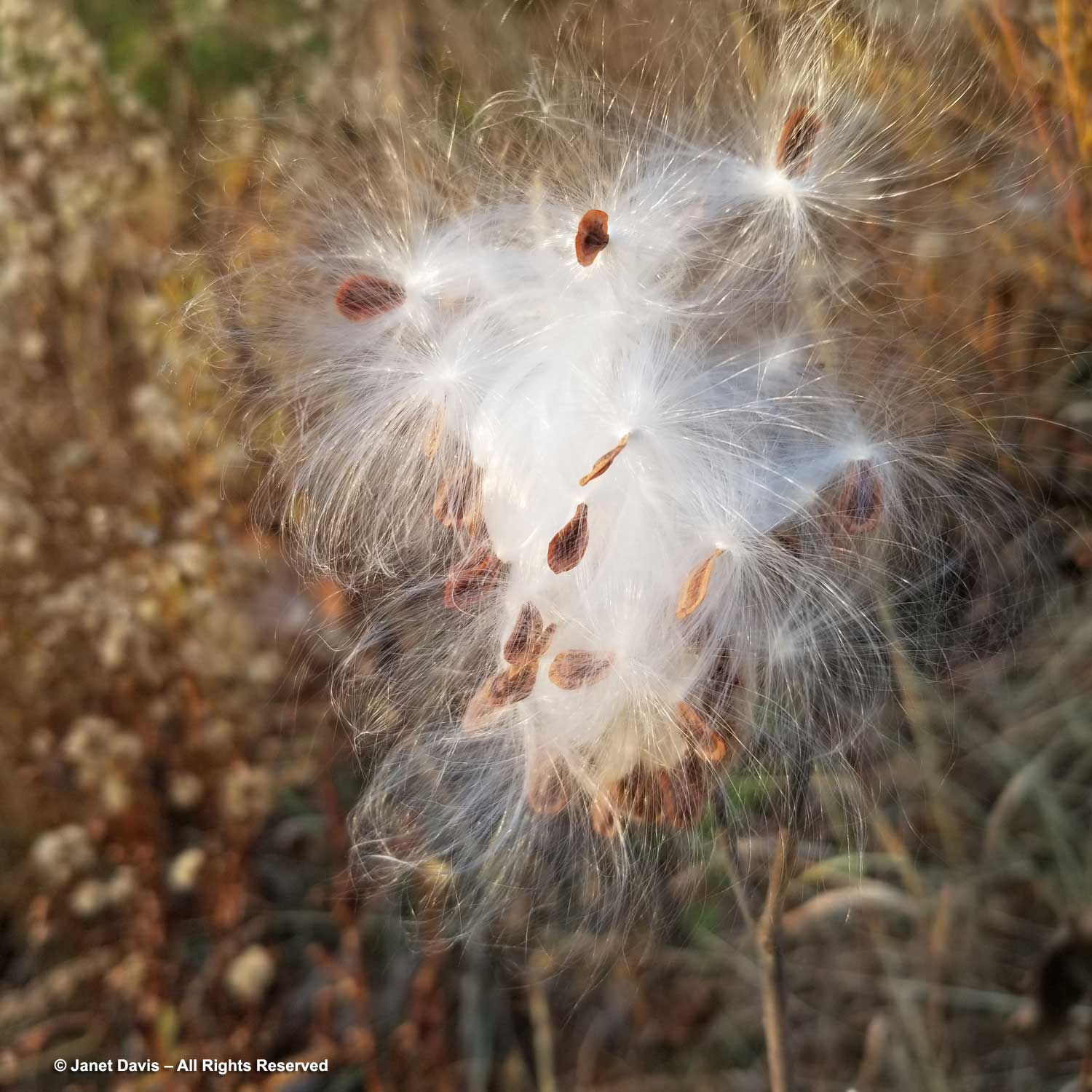
One of the first perennials I planted at the cottage was the old-fashioned fernleaf yarrow Achillea filipendulina ‘Gold Plate’. Tall at 3-4 feet (90-120 cm) with sturdy stems and aromatic foliage, it is low-maintenance, ultra-hardy and bothered by nothing, including deer – unless you count…
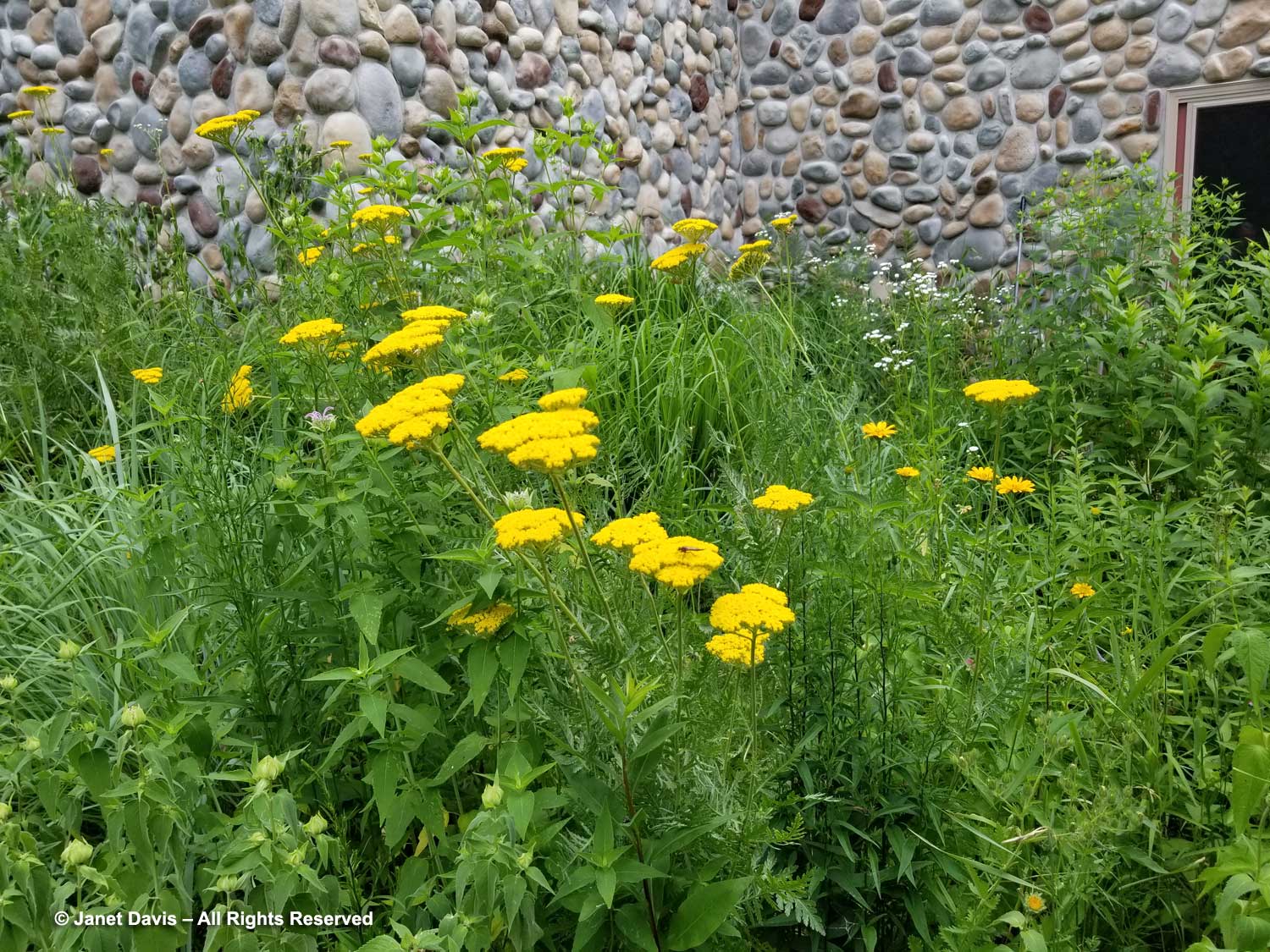
….grasshoppers, which use the flat flowerheads as perches throughout summer. I see the odd sweat bee (Halictus ligatus) working the tiny flowers, but this yarrow is not known for its pollinator appeal. I planted it originally in richer soil than most of my meadows, and it generally prefers more moisture than many of my prairie perennials. Picked at the right time, it makes a long-lasting dried flower, keeping its gold color for years.
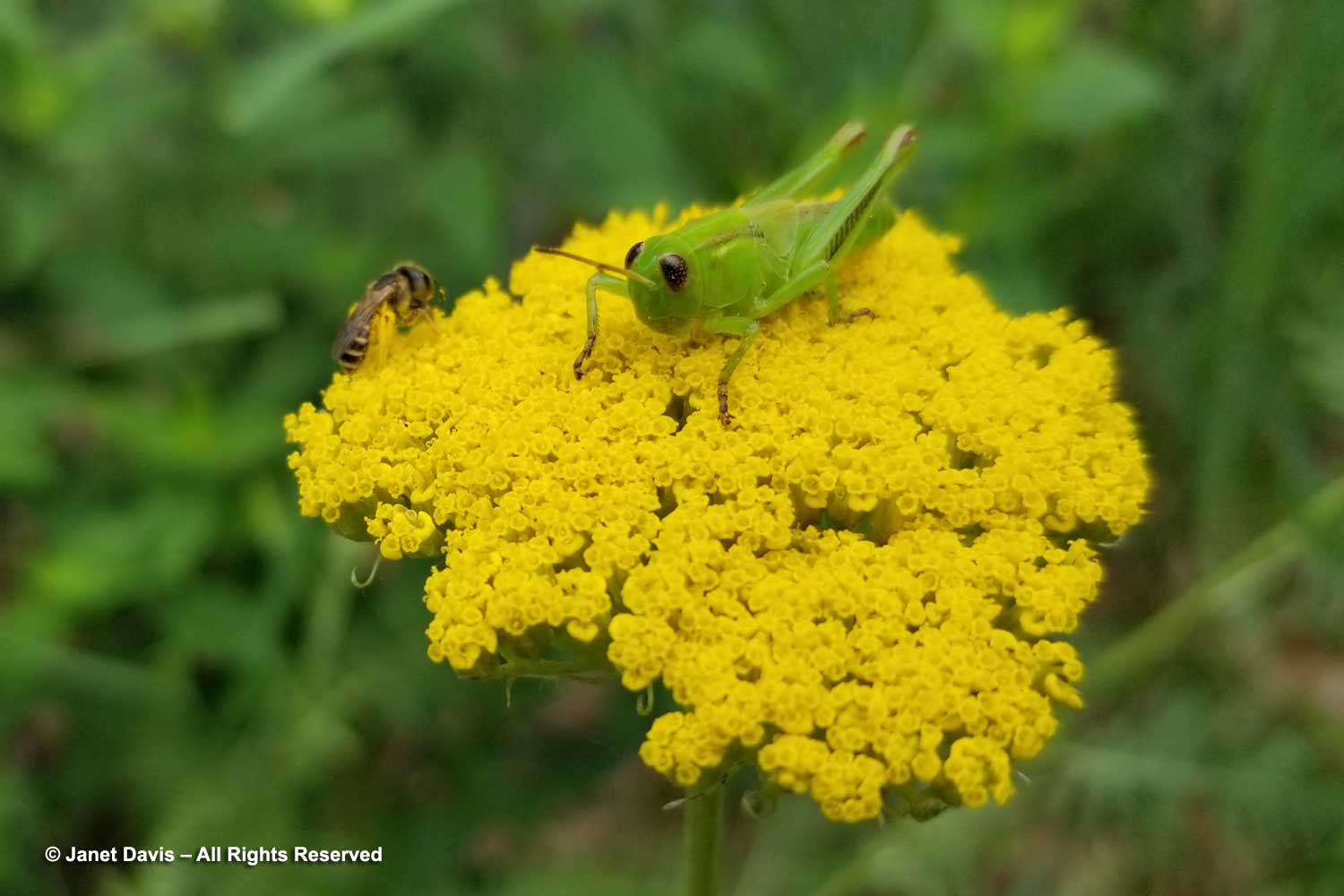
Pale coneflower (Echinacea pallida) is an enigma in my meadows, and one I’m patiently trying to encourage for its early bloom time, elegant flowers with their narrow, pale-pink petals and attraction to pollinators. This echinacea, originally considered an Ontario native, is now believed to have ‘ridden the rails’ into Canada from tallgrass regions in Iowa and Illinois, as part of freight shipments of “prairie hay” for cattle feed. It is more drought-tolerant than its cousin, purple coneflower (E. purpurea); indeed it flops in soil with too much moisture. So year by year, I distribute seeds of the plants I have and keep my fingers crossed that one day they’ll be a major presence in my meadows.
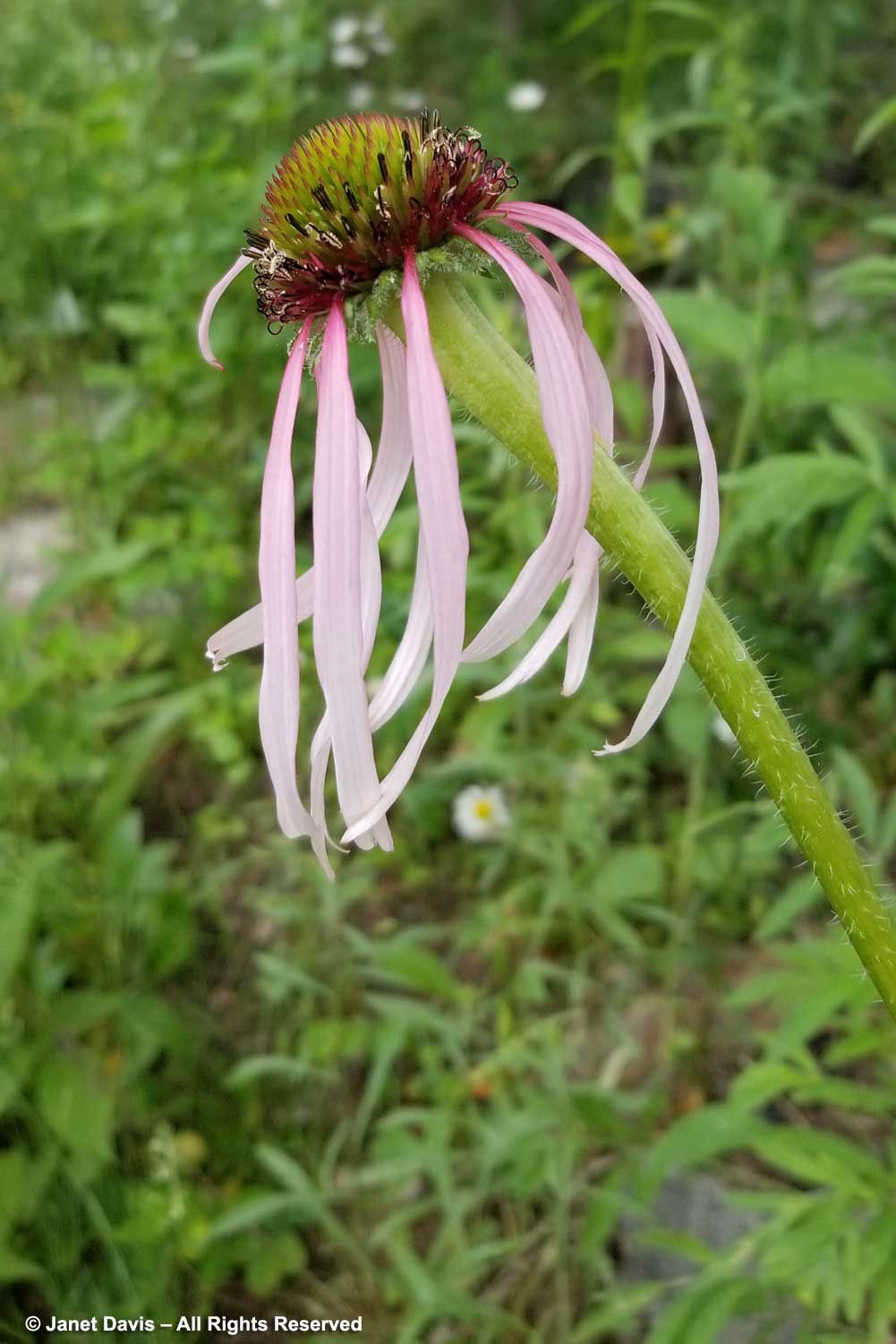
St. Johns wort (Hypericum perforatum) is another weed brought to North America by settlers in the 18th century and is abundant in waste places on Lake Muskoka. An aggressive self-seeder and avoided by grazing animals, it is considered an invasive and detrimental weed when it invades rangeland. But try telling that to bumble bees and other native bees that forage busily on it in early summer to gather its abundant brown pollen. Like dandelions, St. Johns wort is considered a ‘facultative apomict’, meaning it can make seed without fertilization – always a desirable attribute for a weed!
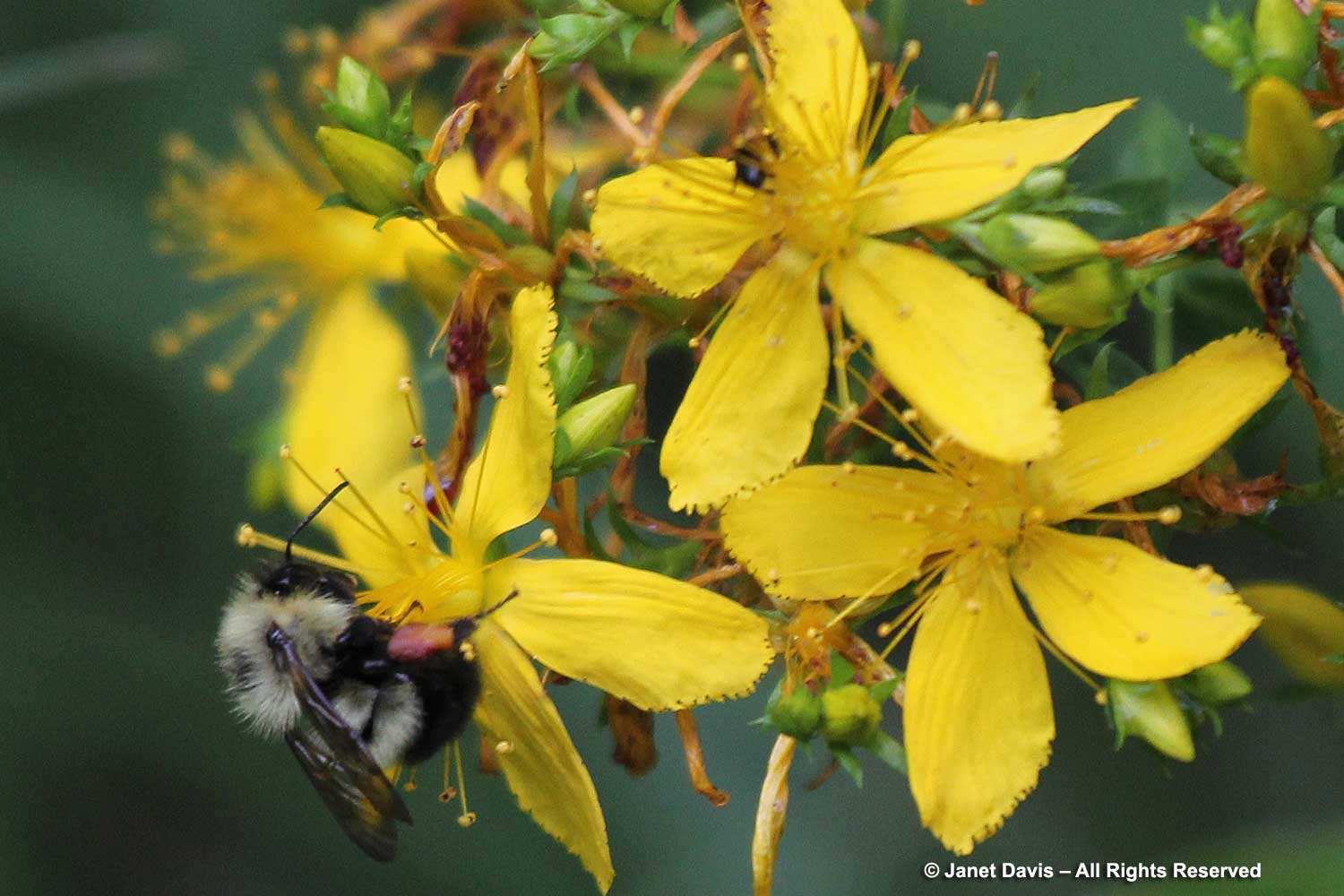
Some days in July as I’m working in the meadow, I hear the familiar “ke-eee” call above; looking up, I see our native broad-winged hawk (Buteo platypterus) wheeling in big circles on the hunt for small rodents and birds. Occasionally, it lands on an oak bough and peers down into the grasses, looking for lunch.
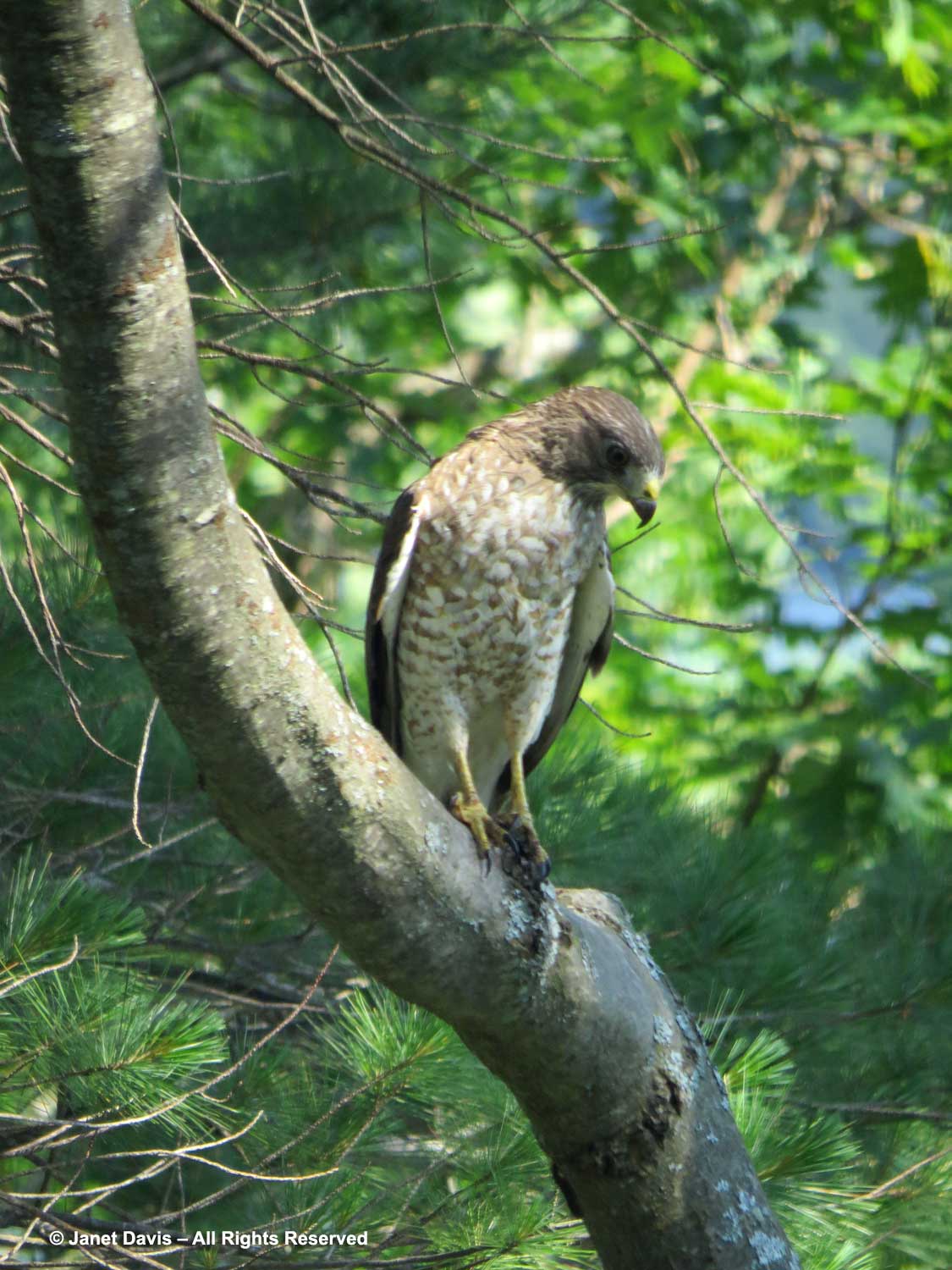
The hawk is just one of many birds on Lake Muskoka, a soundtrack that includes the slightly wonky multi-note song of the song sparrow, below; the pine warbler; red-eyed vireo; eastern phoebe; blue jay; black-capped chickadee; American goldfinch; hermit thrush and many others. Oh! And by the way, if you don’t have the Merlin Bird ID app installed on your phone, what are you waiting for? Such fun to hear that that piercing call is a Great Crested Flycatcher!
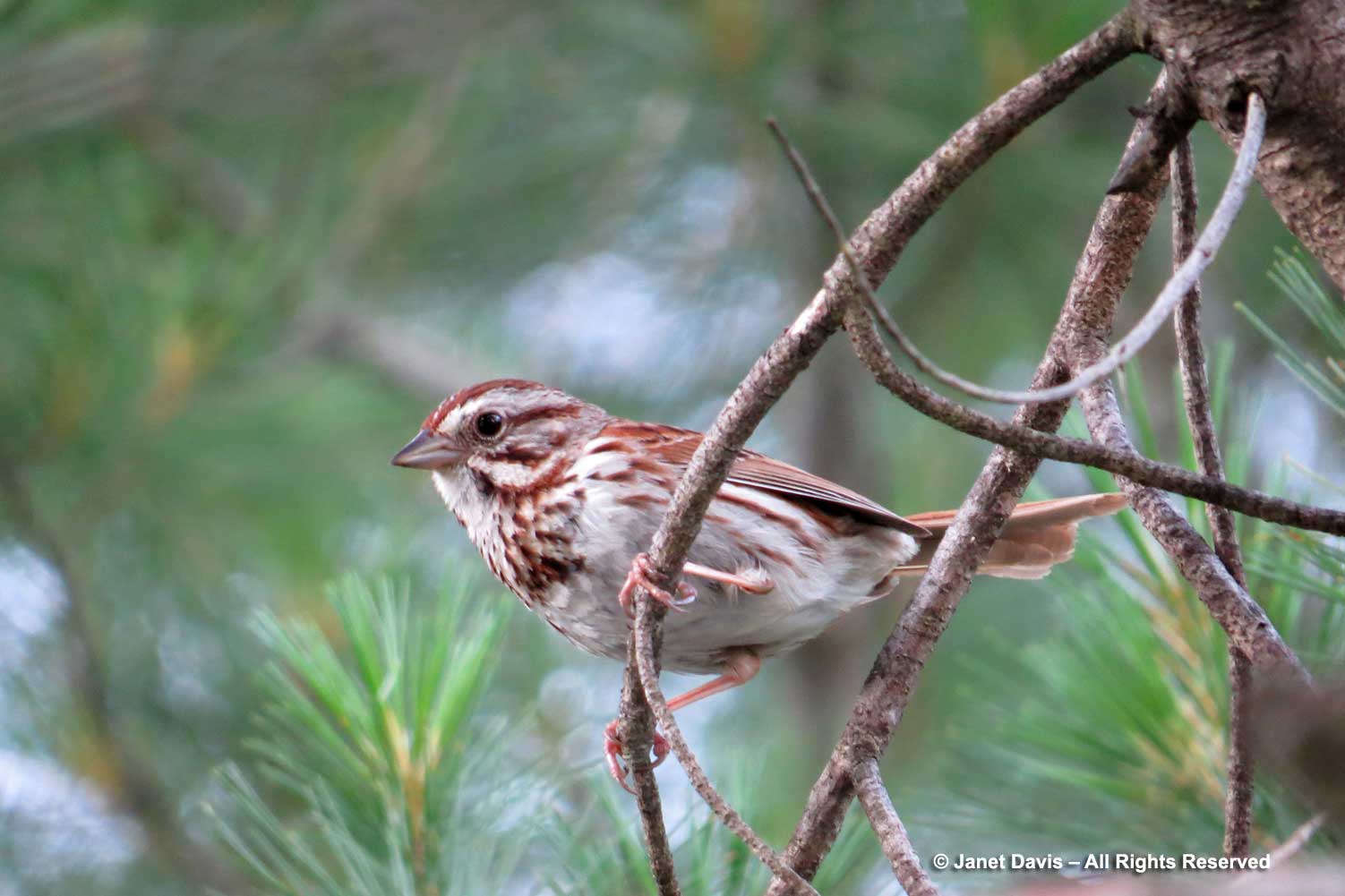
**********
Here are my previous fairy crowns for 2022:
#1 – Spring Awakening
#2 – Little Blossoms for Easter
#3 – The Perfume of Hyacinths
#4 – Spring Bulb Extravaganza
#5 – A Crabapple Requiem
#6 – Shady Lady
#7 – Columbines & Wild Strawberries on Lake Muskoka
#8 – Lilac, Dogwood & Alliums
#9 – Borrowed Scenery & an Azalea for Mom
#10 – June Blues on Lake Muskoka
#11 – Sage & Catmint for the Bees
#12 – Penstemons & Coreopsis on Lake Muskoka
#13 – Ditch Lilies & Serviceberries


